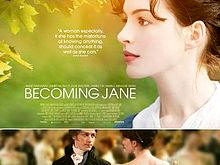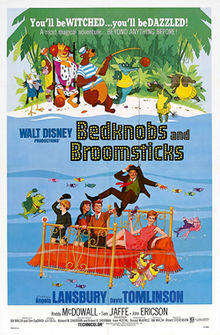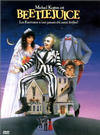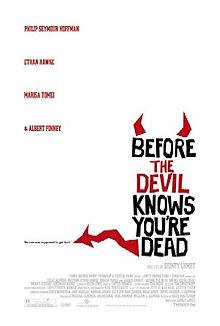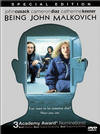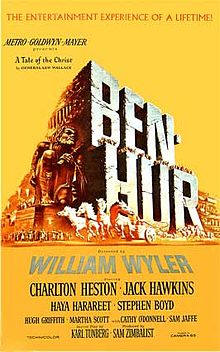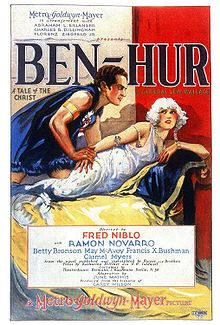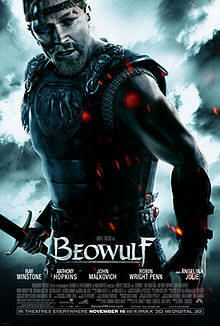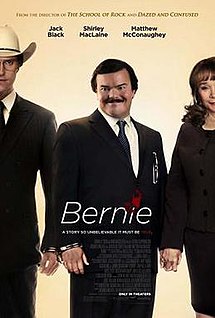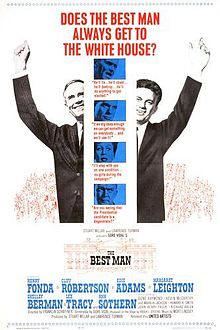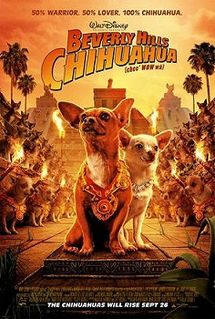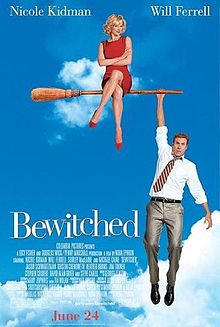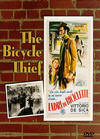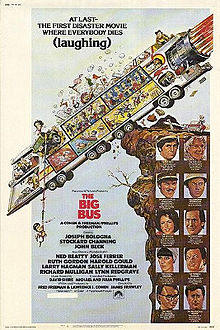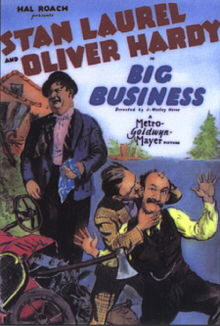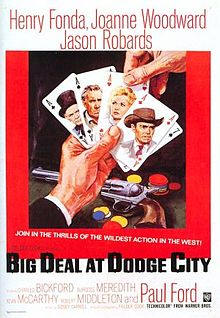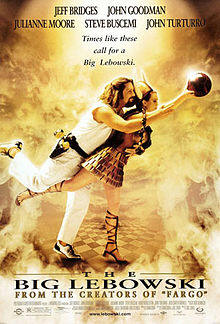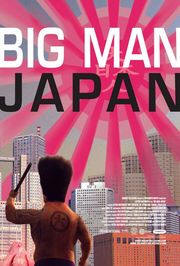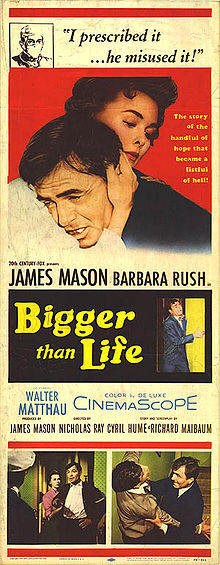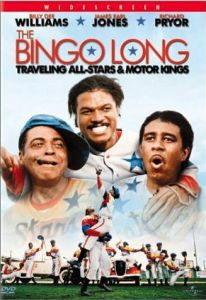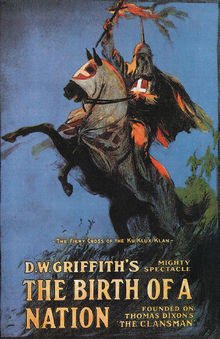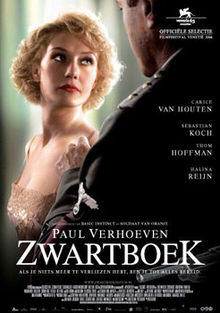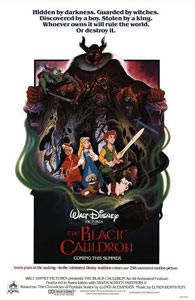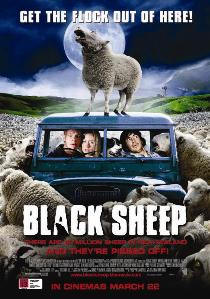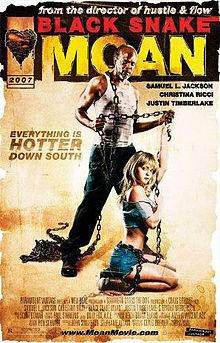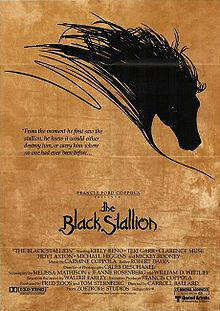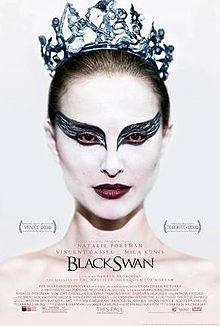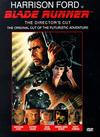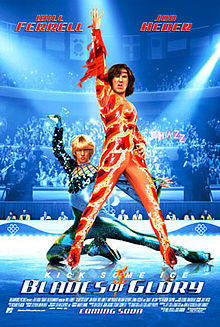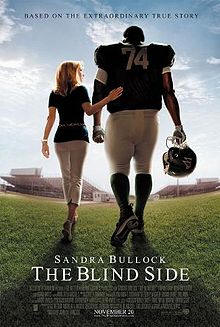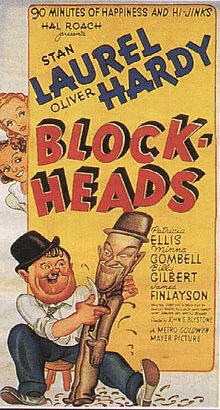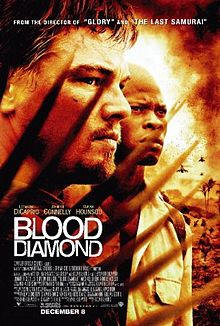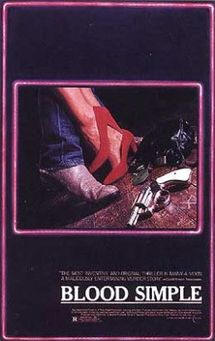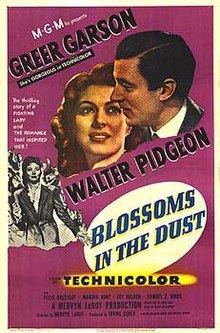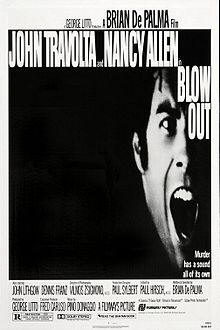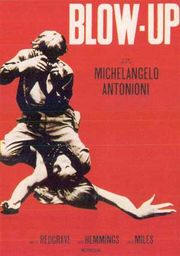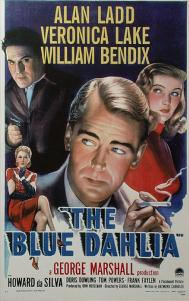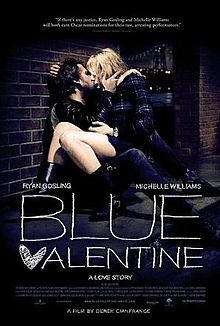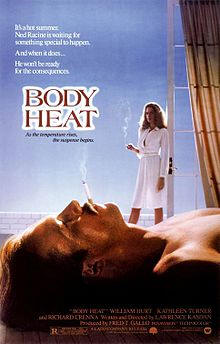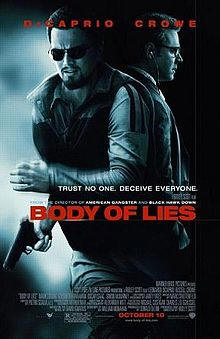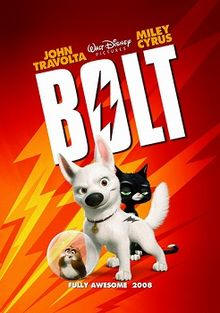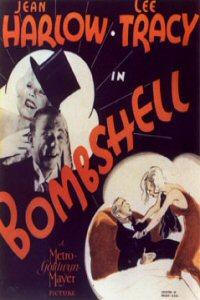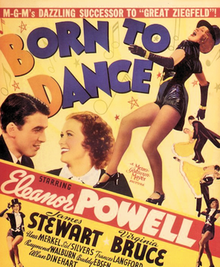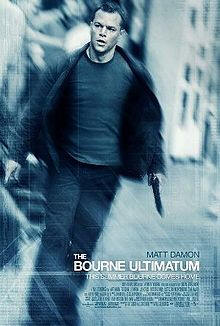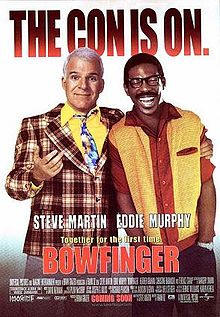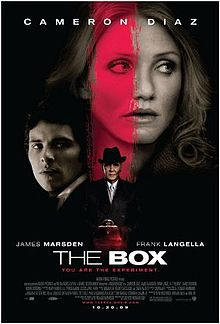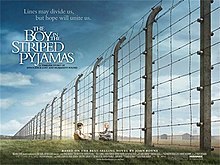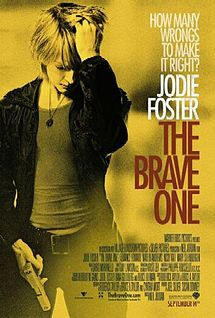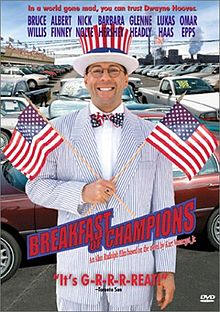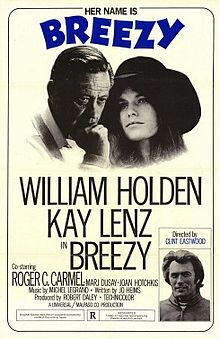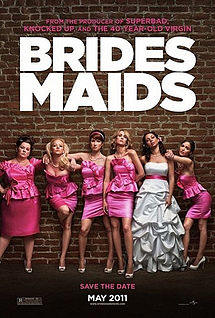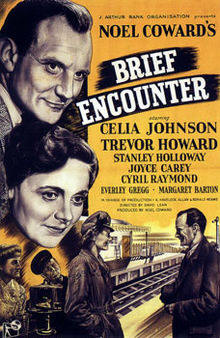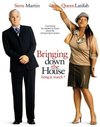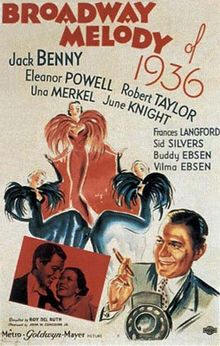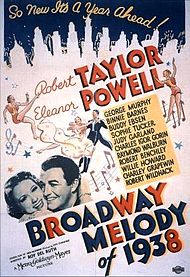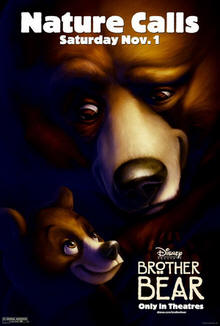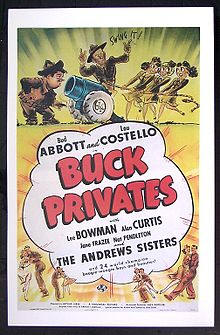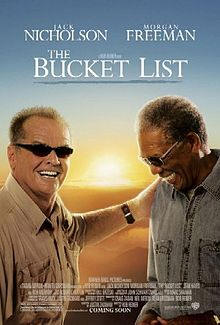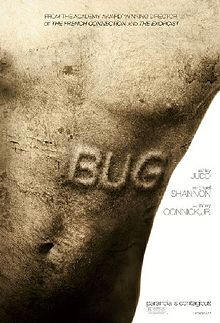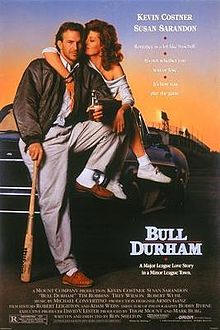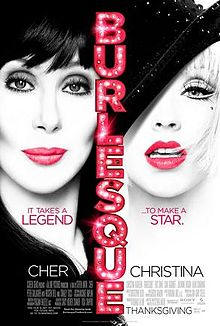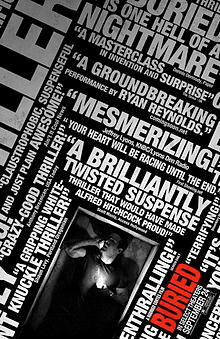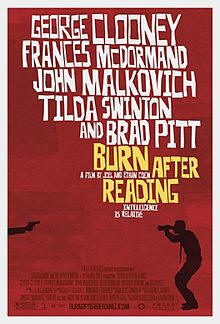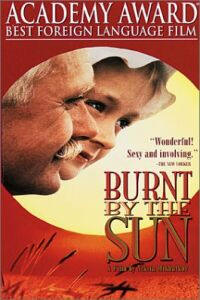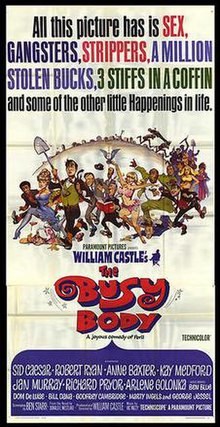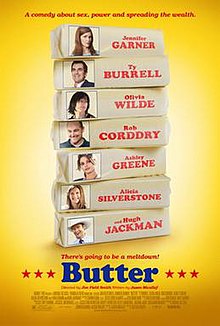|
Movies we've seen © 2004-2013 by John Varley; all rights reserved |
B
|
Baadasssss! (2004) The story of Sweet Sweetback’s Baadasssss Song, the 1971 Melvin Van Peebles film that was the first real “black” movie. I saw it when it was new, in San Francisco, and I’d like to see it again. I remember that it was hard to watch, as a white person, that it opened my eyes a little to how black people experienced the world. I suspect it wouldn’t look so good today; the bits you can see in the new movie are very raw, no surprise considering the perilous and primitive conditions under which it was filmed. Van Peebles was on the edge of disaster all the way through. The film almost didn’t get made, almost didn’t get distributed, almost didn’t get seen. But the rest was history. It made tons of money, and created a whole new genre which is still thriving today. Baadasssss! is a wonderful look into that moment in time, and a highly personal film, with Mario Van Peebles playing his own father, who was so obsessed with getting his movie made that he became something of a monster for a while. But that’s often the way with artists with a vision, and Mario understands that while never flinching away from the ugliness. IMDb.com Babel (2006) As I write this, Babel is nominated for Best Picture of the Year, and is considered a favorite. (It won the "Golden Globe," right? And that's a really, really good indicator, right? Not!!!) As I write this, we have seen four of the nominees, all of them except Letters From Iwo Jima, and I hope to see that soon. And as I write this, my own choice for the Oscar is Little Miss Sunshine. I frankly didn't get this movie. It is a matter of the individual parts being a whole lot better than the sum of the parts. It is beautiful, the acting is great (particularly by Rinko Kikuchi as a deaf-mute Japanese teenager), and each of the four stories is compelling. 1. A goat-herder in Morocco buys a rifle to kill jackals. His sons, fooling around, shoot and injure ... 2. An American woman who is in a bus with her husband. Her life hangs by a thread, while back at home ... 3. Their Mexican illegal housekeeper/babysitter defies the husband's order to stay with their two young children at home, and instead takes them to her son's wedding in Mexico, with near-disastrous results. Meanwhile, back in Tokyo ... (huh?) ... 4. A beautiful young deaf girl struggles with her mother's recent suicide, and her need to be loved and accepted manifests as promiscuity and exhibitionism ... Huh? Where does that last thread come from? Well, it's not much of a secret, so I'll tell you. Her father gave the gun to the Moroccan goat-herder ... You will of course be reminded of Crash, last year's Oscar winner (which I loved), in that various threads tie together in unlikely ways. But where Crash had a theme of cultural misunderstandings and racism of all kinds and the horrors it can unleash by pure accident, Babel seems to flounder. The title implies a failure to communicate, but I don't see that very strongly in evidence, except for the Japanese girl who so desperately wants to communicate with her hearing peers. It all seems random, and if that is the intent, it's not enough for me. I must stress again, each of these four stories is gripping in itself, with the Japanese story the strongest and the story with the biggest stars, Brad Pitt and Cate Blanchett, the weakest. It's just that none of them seem to belong in the same movie. This made a lot of people angry. I wasn't angry, so much as disappointed that it didn't manage to add up some something greater than the sum of its parts. IMDb.com Babes in Toyland (AKA: March of the Wooden Soldiers) (1934) I have such a fondness for this film. My family was a little late in getting a TV set. It wasn’t until I was in the third grade, which would make me, what? Eight? What I recall about those first glorious days sitting around the boob tube with my friends was that almost all the after-school programming was old cowboy shoot-em-ups and comedies that were in the public domain. There was Hoot Gibson and Ken Maynard and Bob Steele and others. (Also Jungle Jim. I loved Johnny Weismuller as Jungle Jim.) Then there was Our Gang (billed as The Little Rascals), and best of the best, Stan Laurel and Oliver Hardy. These were mostly the talkie two-reelers, but every once in a while one of the feature movies would appear. This one is not really their best, for an adult audience, but I think it’s tops for young kids. We loved Ollie Dee and Stannie Dum, and the magical sets featuring a huge shoe, and the invasion of the Bogeymen, and most of all, the march of the wooden soldiers at the end. (The only thing we didn’t love was when Tom Tom the tenor and Bo-Peep the soprano sang at each other, all that lovey-dovey mush. That was a good time to make a run to the icebox for a Popsicle.) We saw it over and over. We loved it when Stannie played with his pee-wee. And were too young to think that was worth a giggle. It was very loosely based on the Victor Herbert operetta. Basically they just used 6 of the 20 or so songs from the massive score, and the Stan and Ollie characters were completely invented. I’ve learned a few interesting tidbits about it. Henry Brandon, who camped it up so wonderfully as the evil Barnaby, was only 22 years old. And the guy who played Old King Cole was named … wait for it … Kewpie Morgan. Born Horace Allen Morgan in Anna, Texas. The poor guy had to laugh continuously in take after take, and ended up rupturing muscles in his stomach. I’ll bet he wasn’t such a jolly old soul after that. When he called for his bowl it was probably because he had to throw up. IMDb.com
Babette’s
Feast (Babettes gæstebud)
(Danish, 1987) First, this goes on my list of all-time great food movies.
It’s a small genre, but a delicious one. I have seen movies that
glorify Italian cooking (Big Night), Chinese (Eat
Drink Man Woman (Yin shi nan nu)), and Mexican (Like
Water for Chocolate (Como agua para chocolate)) ...
and another whose title I can’t recall, but it started with a man
making squash-blossom soup. Can anybody help me out here?), and make
the cooking and eating an essential part of the story, but oddly,
this is the first one I’ve seen that does the same for French
cuisine. These are movies where they ought to issue you a spoon as
you go into the theater, they look so good you want to eat the light
coming out of the projector. There is a sensual beauty to food that
is prepared with love, skill, and art, and these movies celebrate
that. They grow old. Enter Babette in 1871, fleeing Les Miserables ... or the events chronicled in it. All we know about her is that she is in trouble in France, can’t return, and she begs the sisters to be allowed to live there and work for them, for no wages. She does this for 14 years. These are people whose diet is almost entirely smoked sole, lutefisk and something called ale bread that looks like unbaked pumpkin pie. Then she hits the lottery for FR10,000. The sisters are about to celebrate the 100th birthday of their dead father. Babette says she wants to cater the dinner. Nobody in the village is thrilled by this idea, even though they have no idea what they’re in for. But they agree, and also agree among themselves not to enjoy this foreign, decadent food. They’ll choke it down and go back to their lutefisk. Then the ingredients begin arriving. A live turtle big as a station wagon. Live quails. Caviar, sour cream, ice, fruit, truffles, fine wines. Turns out Babette was the head chef in the best restaurant in Paris. The meal begins ... and I won’t spoil it for you. The world isn’t changed, minds aren’t changed but they are opened up a little. And it is all so perfect, so right, that you find yourself nodding and smiling at everything that happens. So it’s a lot more than just another great food movie. It’s a great movie on any terms. Don’t miss it. IMDb.com Backbeat (1994) I liked this a lot more than I expected to. It’s about the very early days of the Beatles, when they were touring various toilets in Hamburg and working their asses off, learning to play all night long, getting better and better, abandoning skiffle for hard (for that time) rock ‘n’ roll. I hadn’t realized it was mostly about Stu Sutcliffe and his girlfriend Astrid, and his relationship with John Lennon. I barely know who Stu was, hadn’t even known he died. Didn’t know he was an artist, didn’t know he was good at it, though I can take or leave his abstracts. Didn’t know he didn’t really give a damn about the band. The DVD had an interview with Astrid, who is still thriving in Hamburg. I like her photos a lot. She documented those early days better than anyone. And it was great fun to see them recreate those crazy days in Germany, and hear all those covers they played from the Golden Age of Rock ‘n’ Roll. (I’m not talking about rock, which came later, and was also wonderful, but it was artier. This stuff was primal, and innocent, and just so much fun. I still love every note of it. Chuck Berry is a genius.) I don’t know how accurate it was, and don’t really care. I thought the suggestion of a homosexual attraction was a side issue, not really relevant. Obviously two men can love each other and never think of sex. Obviously John could be jealous of Astrid, that sort of thing happens all the time. Great performances by all three principles, most of all Sheryl Lee. And I find out she is now married to Neil Diamond’s son. Small world of celebrities, isn’t it? IMDb.com Bad Education (La Mala Educación) (Spain, 2004) Pedro Almodóvar is one of the best directors working today, and there’s quite a few of his films I haven’t seen yet. Have to do something about that. This is a very good one. From the opening credits and music I thought “Hitchcock!” It’s not a thriller but a psychological drama. And, in fact, the story is so complex that it would take half a page just to summarize it and it might spoil your fun. Suffice it to say that there are at least four levels of reality and fantasy and storytelling here, and just when you think you know what’s happening you learn something else that pulls the rug out from under you. It stars Gael García Bernal, the incredibly handsome Mexican actor who can have a big career in Hollywood as soon as he wants it. He’s been very good in The Motorcycle Diaries and Amores Perros. And in this one he is just about the prettiest transvestite I’ve ever seen. IMDb.com The Bad News Bears (1976) Regular visitors to this site may have noticed that we’ve gone on an October World Series exploration of the world of baseball movies. So far we’ve dealt with the major leagues (Bang the Drum Slowly, The Pride of the Yankees), the minor leagues (Bull Durham), the Negro League (The Bingo Long Traveling All-Stars & Motor Kings), women’s professional baseball (A League of Their Own), the musical comedy league (Take Me Out to the Ball Game), and even the Woo-Woo League (Field of Dreams). We plan to tackle backyard baseball (The Sandlot) and even Japanese baseball (Mr. Baseball) before we’re done, but right now it’s time for the horrors of … gasp! The Little League! I never played, never even tried out. I couldn’t run, couldn’t hit, couldn’t throw, couldn’t catch. A quadruple threat. In PE class I was one of the schmucks who, when I came to the plate, all the infielders would shout “Easy out!” And they were right! I used to hang around the Little League ballpark at the end of our street in Nederland, Texas, on muggy summer nights and shag foul balls and home runs. If you brought the ball back to the concession stand you got a free sno-cone. And that is the sum total of my experience playing baseball. I love baseball, but I love it from the bleachers. But for some people, baseball is their life. And I’m not talking about the 13- to 18-year-olds on the field. I’m talking about the parents. Probably the only thing worse than a mother determined that her daughter become the big movie star she never was is a father determined that his son become the big pro athlete that he never was. Then there’s the Bears. And I take it back, it might actually be worse to be on a ball team and have parents who just don’t care. The Bears are the dregs of this particular Los Angeles area Little League division, the fat, slow, disturbed, angry incompetents that none of the other teams would ever take. (The other teams have sponsors on the backs of their jerseys like Pizza Hut and Pepsi. The sponsor of the Bears is Chico’s Bail Bonds.) How bad are they? Well, I would have looked good compared to this team. That bad. And in the whole movie I don’t think we get a glimpse of a single Bears parent sitting in the stands watching the games. The parents and managers of the other teams are all examples of the corruption parents introduce into children’s sports when they preach the philosophies of win at any cost, and have contempt for losers. I hate them, I despise them, but at least they care. The parents of the Bears apparently use the team as a baby-sitting service. I don’t even want to know what their home life is like. Walter Matthau, a pool cleaner who used to play in the minor leagues, is hired to manage the team. And much of the movie goes where you would expect. He still drinks beer all day, but he begins to teach them some of the fundamentals. They gradually get better. He brings in two ringers: his former stepdaughter, Tatum O’Neal, who has a mean fast ball, talks tough but yearns to connect with a father figure, and the neighborhood delinquent, who is an all-around athlete. They get even better. Then when it looks like they might have a shot at the league championship, Matthau gets infected with the win at all costs virus. There are a series of moments meant to teach us about sportsmanship, and they are pretty obvious but I still liked it. Will they win the Big Game at the end? I was really curious, and the answer was satisfactory. IMDb.com The Bad News Bears (2005) One of the Rules of Cinema is that it is always a bad idea to remake a good movie. But one of the Laws of the Universe clearly states that there is an exception to every rule, and this is one of them. If there is anybody in the world who can out-curmudgeon Walter Matthau, it is Billy Bob Thornton. You can’t really compare the two performances, even though some of the dialog is virtually identical; each man brings his own misanthropic character to the part, and the results in both cases are glorious. The writers also eschewed Hollywood’s own Rule of Remakes, which states that Step One in the process is to identify what made the first movie good, and then do your best to eradicate that quality entirely. There was very little tinkering here, the plots of the two movies are identical, except for a few small additions and necessary changes. One is the addition of a ballplayer in a powered wheelchair. At the end, even he gets to play. The writers are the same maniacs who did Bad Santa, and they just toned Billy Bob down a little here. I was laughing at line after line. Billy Bob watching a girl’s softball team: “I never thought I’d ever hear myself say, ‘Look at the ass on that second baseman.’ But look at the ass on that second baseman.” Or “You guys are swinging like Helen Keller at a piñata party.” In the first one the team’s uniforms show their sponsor: Chico’s Bail Bonds. In this one, it’s a “gentlemen’s” club. All the pole dancers are in the stands, cheering for the Bears. Trust me, if you liked the first one, you’ll like this one. IMDb.com Bad Santa (2003) is the perfect antidote for Elf. From the very first scene when Billy Bob Thornton, as the world’s worst Santa, turns the tables on the little brats he can’t stand by (not voluntarily; he’s very drunk) pissing on one of them. He and his dwarf partner (the hilarious Tony Cox, and has there ever been a better year for performances by little people?) do this every year, working as Santa and his elf so they can rob the department store on Xmas Eve. Billy Bob is interested in only two things: getting very, very drunk, and buggering fat women when he’s sober enough to perform. ("You won’t shit right for a week!") Now this is the perfect setup for redemption; surely BB will see the error of his ways, sober up, and go out doing good works. Not a chance. He does sort of take a loser little kid under his wing, and there is a small triumph at the end (which involves BB beating the crap out of a teenage bully half his size!), but you know his misanthropy is completely untouched. This is not a movie for everyone. All the rest of my family hated it, can’t understand why Lee and I loved it. I just like to have my Xmas nog served up with a big dash of bitters and almost no sweet vermouth. IMDb.com The Bad Sleep Well (Warui yatsu hodo yoku nemuru) (Japan, 1960) Not one of Kurosawa's best, which just means it's a lot better than 90% of the films you will see this year. There were two alternate titles used in various countries: The Rose in the Mud, and The Worse You Are, the Better You Sleep. I kinda like the second one. It's a bit of Hamlet—son seeks revenge for death of father, but suffers doubts—and a lot of Japanese film noir. There is some of the over-acting (to western eyes, anyway) that you have to get used to if you watch Japanese films, but it all is centered and anchored by the quiet resolve of that wonderful man, Toshiro Mifune, in glasses and a conservative suit, almost unrecognizable here if you only know him from the samurai films. He could teach John Wayne a thing or two about screen presence, plus he could do ironic comedy wonderfully. The ending is the weakest part, not because it is a downer (the title sort of gives that away) but because too much happens off-screen and is related after the fact. My other favorite Japanese actor, Takashi Shimura, has a small part. I'd like to have seen him in the part taken by Masayuki Mori, he'd have done it very well. Not that Mori is bad as the man who will do anything, literally anything, to cover up his crimes. IMDb.com Baghdad ER (2006, HBO) Instead of the Mobile Army Surgical Hospital, this is the Combat Army Surgical Hospital, C*A*S*H. They don't operate in tents, but in clean and modern hospital rooms. But the medevacs keep arriving every day with the ruins of American boys and girls and Iraqis, most of them blown up by IEDs. Over 17,000 Americans at this writing. Some of those are simple shrapnel wounds, the guys are back on the line three days later with a purple heart on. Some are double amputations. The makers of this one-hour documentary were scrupulous in not bringing politics into it, so I will be, too, in the sense that I won't point out that all this death and suffering were not necessary and that it can all be laid at the feet of a small group of cynical politicians in Washington and London ... oops, there I go. Anyway, you can't avoid being political if being anti-war is a political position ... and if you can watch this hour of carnage and not be anti-war, I don't want to know you. In fact, I don't want to be in the same state or on the same planet with you. In fact, I hope you die soon, from an IED explosion, dismembered, blind, skinned alive, and without the heroes of the C*A*S*H around to alleviate your pain. IMDb.com Ball of Fire (1941) I found this one while looking into Snow White and the Seven Dwarfs. I’d seen it many years ago, but hadn’t realized that the plot was loosely based on the fairy tale. Not exactly, as there are eight people living together, all scientists and scholars compiling a massive encyclopedia, but the Gary Cooper character is meant to be Prince Charming. He’s younger than the seven, and though he’s just as nerdy, he’s the love interest in the story. Snow White (here called Sugarpuss O’Shea, played by Barbara Stanwyck) is a chantoosie hiding from the cops, who want her to testify against her gangster boyfriend (Dana Andrews). It’s all a lot of fun, with the seven professors played by some of the best character actors working in Hollywood at the time, including Henry Travers, Oscar Homolka, and S.Z. Sakall. The story was remade in 1949 as A Song is Born, with Danny Kaye and Virginia Mayo, and some of the best jazz and swing musicians of all time, including Benny Goodman, Louis Armstrong, and Tommy Dorsey. Both films were from a story by Billy Wilder, and were directed by Howard Hawks. IMDb.com The Ballad of Cable Hogue (1970) Right after the ultra-violent The Wild Bunch, Sam Peckinpah made this totally atypical elegy to the passing of the Old West. Well, in a way all his westerns were about the passing of the Old West, but this one is special. Peckinpah said this was his favorite of the films he directed. It’s a simple story. Jason Robards, Jr. is abandoned in the desert by his partners to die of thirst, but he finds water and eventually sets up a stage stop and prospers. He then waits for three years for them double-crossin’ sidewinders to show up so he can take his revenge. They do show up … and things don’t go as you’d expect in such a film. Cable has a bittersweet romance with a whore (Stella Stevens) from the town of Dead Dog. He’s an engaging character, talking to himself or to God a lot. In a way, it reminds me of A Thousand Clowns, not in any story sense but because the thing you remember most is Robards talking. But there is also the great cast of Peckinpah usual suspects, including the wonderful Strother Martin and Slim Pickens, who here drives a stagecoach instead of a B-52. IMDb.com The Ballad of Jack and Rose (2005) Written and directed by Arthur Miller’s daughter, Rebecca. In 1986 a washed-up hippie and part-time ecowarrior with a bad heart and a teenage daughter live on a beautiful island, but development is encroaching. He decides she needs a family ... so he sort of buys one, and they just turn up one day, a woman and her two boys by different fathers. Surprise! She doesn’t react well. The acting is good, the script is okay, and I really thought I should have enjoyed it more than I did. But I didn’t. Jack is such a controlling asshole, the girl is practically a wild child, has had practically no social interaction since the other hippies left the commune long ago. Things happen. None of it really came together for me. IMDb.com Bambi (1942) Saturday Night at the Toons! IMDb.com The Bandwagon (1953) Fred Astaire is a washed-up vaudeville and movie hoofer. Tula Finklea (the birth name of Cyd Charisse, and was there ever a more fortuitous name change?) is a much younger étoile de ballet. They are convinced to share the stage in a Broadway musical written by Nanette Fabray and Oscar Levant, to be directed by hot-shot Jack Buchanan. Jack decides to take the light-hearted script and turn it into a re-telling of the Faust legend. The show is fabulously overproduced and pretentious. There is a wonderful sequence of an eager, laughing audience filing into the theater. Then we see etchings of misery and damnation, followed by a giant egg sitting on a desolate plain. The audience shuffles out, silent, stunned, looking as if they just learned their beloved dog has died and they have one month to live. It’s an okay musical from MGM, who seldom made a bad one, but even if it were awful it would be worth seeing over and over again for one sequence of about ten minutes. The set-up: Fred has quit and stormed out. Cyd visits him, and after some shouting, they decide to take a walk in Central Park to see if anything can be salvaged. They board a horse-drawn carriage, and there is no more dialogue from this point. They get off at a place where people are dancing under colored lights. They walk through, watching the couples enjoying themselves. Then they wander into a place with a path and a few benches. Fred assays a little dance step, with a thoughtful look on his face, then stops, and resumes walking. Cyd does the same. They never look at each other. Then—and it’s hard to say just when it begins—they are dancing together in what is, IMHO, the single best romantic pas de deux ever immortalized on film, to the tune of “Dancing in the Dark.” She is wearing a long white skirt that flows magically around her. I have to give a lot of credit to both the choreographer, Michael Kidd, and to Astaire for realizing that this is Cyd Charisse’s moment, her dance. Fred all but removes himself from the scene, never showing off, there only to provide a partner and to lift her now and then. (And yet … he’s Fred Astaire, isn’t he? You’re never going to ignore him.) Every move is exactly as it should be. And though they hardly ever dance closely, most of the time they are side by side, doing the same moves, or touching only at the hands … you can see them falling in love. Every step flows from the one before, and even when they re-board the carriage it is a dance step. You know, Fred had a lot of dance partners in his career. Fred and Ginger had more romantic numbers than you could count, and in most of them they are dancing, in the words of the song, “cheek to cheek.” But none of them can match the intensity of this number. It’s not steamy, and it’s not in-your-face erotic (that will come later, when Cyd scorches the white off the screen in the final ballet number), but it is so damn moving that I always get a tear in my eye when I watch it, and I’ll bet I’ve seen it 100 times now. If you haven’t seen it, and you love dance, then you must run right out now and get it. It’s also available as one number in That’s Entertainment. IMDb.com Bang the Drum Slowly (1973) Here’s an unusual thing: A baseball movie with very little baseball in it. And something else: A movie about a dying athlete that doesn’t try to wring tears from you in any way it can. What a relief after the bathetic The Pride of the Yankees, which we saw just before. We see action on the field, but it’s single plays, mostly just to establish that these are ballplayers. What we never get is the Big Game, or the Big Win, and what a relief. I mean, I don’t object to sports movies where it all comes down to the last out in the bottom of the ninth in the last game of the World Series, and the last five minutes of the movie. But, lord, haven’t we seen that a few times? This movie is about the men who play the game, how they interact, what it’s like to be on the road. One of these men, played by Robert de Niro before anyone knew who he was, is dying, and his best friend, Michael Moriarty, is determined to conceal that from the team’s manager, Vincent Gardenia (who gives a wonderfully hilarious performance). Some of it is quite funny and some is quite moving. It’s not quite like anything I’ve ever seen in a sports movie, and I’m grateful for that. IMDb.com The Bank Job (2008) Here’s a pearl beyond price: An action/caper/heist movie without a single car chase, impossible 20-story fall onto a wet napkin, gun battle where 10,000 rounds manage to hit nobody, or chase through a burning warehouse that produces no deadly smoke. Not only that, it’s all true! … well, mostly. It’s based on the Baker Street robbery that happened in London in 1971. It’s not that well-known in the US, but over there it’s sort of like the D.B. Cooper hijacking, the source of endless wild theories, most of them qualifying as urban legends—that is, something that everybody knows is true, but isn’t—about what was really going on. So there are two levels to the movie. Much of it concerns the nuts and bolts of this very lucky band of amateurs, and how they pulled off an amazing tunnel job into the vault of a Lloyd’s Bank and got away with as much as £3,000,000 (about £32,000,000 today) in cash and jewels. This is all a delight to watch, and seems very accurate, as far as I can determine. Then there is the subtext, concerning MI5 (or 6, who can tell?) being behind the whole operation as a means of recovering pornographic photos of … wait for it … Princess Margaret! (Well, you could hardly damage her reputation much more than it’s already been damaged. She was the first in a long line of Saxe-Coburg-Gothas—lately “Windsors”—to figure in the scandal sheets of Fleet Street.) Now, as far as I know, there is little or no evidence of this … but the filmmakers state, afterwards, that 100 owners of safe deposit boxes refused to divulge the contents and thus could not recover anything, even if it was found. This stuff was either drugs, unreported income, blackmail material, or … the possibilities are endless, and easy to believe. So it’s fun to imagine that this part of the story was true, and it adds a lot of great complications, and also provides a means for the bandits (those who survive, anyway) to get away with it, and let’s face it, in a movie like this, don’t we all want them to get away? I sure do. In reality three men served about 8 years each. The pace is fast and it never lets up, with one twist after another, tension mounting delightfully. It does get a little complicated—Lee and I were not quite sure if Major Singer and Bambas were killed by MI5 (or 6) or the Porn King of Soho—but it hardly matters. All the actors are good, including David Suchet (TV’s Hercule Poirot), Saffron Burrows, who may be the world’s most beautiful lesbian, and Jason Statham, who I feel hasn’t hit his stride yet, being bogged down in brainless action pictures like the Transporter series. (Which I admit I haven’t seen, but the descriptions are enough. Hell, the DVD box art is enough.) It has a script co-authored by Ian La Frenais, co-writer of The Commitments and Across the Universe, two of our favorite movies. It’s directed by Roger Donaldson, who did The World’s Fastest Indian. It doesn’t get much better than this. IMDb.com Baraka (1992) That’s not a typo; this film has nothing to do with our new president. This is a movie of images, some beautiful, some profoundly disturbing. No dialogue at all. If you have seen Koyaanisqatsi and/or Powaqqatsi, you’ll know what I mean. This one is by Ron Fricke, who worked on Koyaanisqatsi and then made this one on his own. Some have seen an environmental message in this film and the others. The best I can do is say there are some obvious themes, chief among them the amazing variety of humanity’s religions and spirituality. We see holy men, holy places, religious rituals from all cultures around the globe. We see terrible poverty and breathtaking beauty, and our crowded, frantic world in time-lapse photography. It’s more like a moving painting than a story, and what I do when I watch it (I’ve seen it twice now), is let it wash over me. It’s 96 minutes long, but seems much shorter than that. Though it might seem to move ponderously at times, with many shots that are virtually stills, the time just seems to zip by. It was all shot with Todd-AO 70mm cameras, and most of the time they are virtually static, with only slow pans or dolly shots, and how refreshing is that in this age of jitter-cams and short cuts? IMDb.com The Barbarian Invasions (French-Canadian, 2003) Winner of the Oscar for Best Foreign Language film, 2003. An excellent film that, at some moments, reminded me of Woody Allen at his best: intelligent people discussing ideas and remembering better days. (I don’t quite get what the title means, though it is mentioned a few times. It seems peripheral to the story.) A man is dying, and his estranged son has decided to ease father’s last days. The son is a businessman who is accustomed to spreading money around, getting things done, cutting to the chase with no bullshit. When told that heroin is much stronger than morphine, he goes to the police station to see how to obtain some! And the police, though intrigued, end up advising him. Lots of good stuff here. IMDb.com Barbershop (2002) One of those weird little pictures that lives or dies by whether you identify with the odd characters in an out-of-the-way little place. This one works, and I’m glad it found an audience. But ... Cedric the Entertainer? He’s a very talented guy, but the name just irritates me. IMDb.com Barbershop 2 (2004) Not as good as the first one. But it contains a pretty ingenious plug. Next door to the barbershop is the beauty shop, run by Queen Latifah. And before the show there is a trailer for ... guess what? Beauty Shop. IMDb.com Barney’s Version (Canadian, 2010) The author of the book, Mordecai Richler, wrote another book called The Apprenticeship of Duddy Kravitz, from which an excellent little movie was made. But sometimes a movie has a lot of interesting parts, and they just don’t all come together for an interesting story. I don’t demand linear storytelling, nor that there be a specific point the writer is trying to make, but it helps, and it’s not here. Paul Giamatti is Barney, and we see a great deal of his life here, mostly having to do with his marriages. He just can’t seem to stop himself from fucking up. He marries his first wife because she’s pregnant, and it turns out the baby belongs to a friend of his. She miscarries, and then kills herself. On to number two, Minnie Driver, who is a Jewish Canadian Princess, and you know from the first dinner with her parents and Barney’s father, Dustin Hoffman, this it’s going to be another disaster. But who could have guessed just how soon? At the reception, the fucking wedding reception, he spies the girl who he is instantly convinced will be the love of his life. He relentlessly pursues her (can you say stalker?) and finally wins her over. And he’s right. He loves her eternally. They have twenty good years—though she must have had the patience of a saint—before he finally and irrevocably fucks up again, for stupid reasons. And somewhere in there he either accidentally shoots and kills his best friend after catching him in bed with Minnie … or doesn’t. A cop—no Javert, but in the same ballpark—is convinced Barney killed him, and even goes so far as to publish a book naming him as the killer. But we see hardly anything of this until, much later, Barney is vindicated. To wrap it all up, Barney is afflicted with Alzheimer’s and spends his twilight days drooling. And who cares? Not me. Barney has not a single redeeming trait. The most difficult thing to swallow was that any of these lovely women would fuck, much less marry, this pathetic little schmuck. He wasn’t even worth hating. Dislike and pity was the best I could do. The pleasures of this movie, and there are a few, are in the acting. It won a slew of Genies (the Canadian Oscar: I was nominated for one, to give you a clue as to what the competition is like in a typical Canadian cinematic year), and Giamatti, Driver, and Hoffman won. Rosamund Pike, as the third wife, in a much less flashy role, was nominated. I’m sure some people will enjoy this not only for the acting, but also the story. For me, it was just the acting. IMDb.com Barry Lyndon (1975) Reviewed in Stanley Kubrick Films. Barton Fink (1991) Reviewed in Coen Brothers. IMDb.com The Bat (1959) Agnes Moorhead, Vincent Price? We like them both, so why not give it a try? This happens to be the third version of a 1920 stage play co-written by Avery Hopwood and Mary Roberts Rinehart. And it is stagy, lots of static scenes in confined sets. I even wondered if it was originally made in 3D, because several times the steel-clawed hand of the crazed killer known as the Bat stretches out toward the audience. But I can’t find any evidence that it was. And it’s really pretty silly. I’m not a big fan of Bad Cinema, though from time to time it’s fun to watch a bad one. But it has to be bad in a particular way. This was just boring and not well made. We packed it in at about the halfway point. IMDb.com Batman Begins (2005) I go into a comic-book movie with a built-in prejudice. I thought comics were pretty stupid when I was a kid, and while they’ve grown up some, most of them still are pretty stupid. I know there are literate people who love them, but there are many, many more who enjoy them because it’s easier to look at all the pretty pitchers than to actually read a novel. You disagree? That’s your right. But this one is not bad at all. One thing I always disliked about super-hero movies is ... well, their super-powers. Baloney. But Batman doesn’t have them. He’s just very good at what he does, and this movie shows how he got to be that way. Not only how he trained himself, but his motives, and most important of all, how he got all that cool stuff he uses. In the other Batman movies it’s just there. He pulls a bat-thingie out of his bat-hat. He lives in the Bat Cave. No hint of how long it takes to build all that stuff, or where it came from. Here we see every detail, and it’s almost believable. Somebody complained that there’s no suitable villain in this movie. That is exactly what I don’t like about most comic heroes. The obsessed/crazy joker (so to speak) running around in a silly suit for the delight of pure evil is so puerile it has almost destroyed even as good a movie as Spiderman for me. Here the bad guys are totally believable, and their motives are ones anyone can understand: greed and corruption and all the nastiness of the real world. Batman fights the decadent political system in Gotham City, and it’s a fight that even he recognizes can’t be won by offing a single criminal genius. They were very smart to cast excellent actors in the supporting parts, such as Liam Neeson, Gary Oldman, Morgan Freeman, and especially Michael Caine. And Christian Bale is genuinely menacing in that black Kevlar outfit. Francine: There are some parts of this movie that are fairly herky-jerky, quick cutting and jiggly camera work, but they are usually over pretty quick, and you can close your eyes and not get motion-sickness and open them when the fight’s over. You know who’s going to win, anyway, and then you can resume with the story. IMDb.com The Battle of Algiers (Algerian, 1965) Simply one of the most gut-wrenching, compulsively watchable movies ever made. It looks like a documentary, but no newsreel footage was used; instead Gillo Pontecorvo, the director, used newsreel cameras and non-actors. It tells the story of the Algerian revolution, from both the Arab and French sides. Both sides commit horrific atrocities. He shows all this fairly evenhandedly. You watch this, you recall that it was made in 1966, and you just shiver when you consider how much it is like Viet-Nam, like Israel and Palestine, and yes, like Iraq. Apparently this movie is standard viewing at the Pentagon, and you have to conclude that the generals there know something that George W. Bush does not: That though our army will never lose a battle, just as it never lost a battle in Southeast Asia, it is virtually impossible to win a war like this. And back then they didn’t even have suicide bombers. They will grind us down, my fellow citizens, and we will lose the will to sacrifice so many of our young people, and we will declare victory and go home, just like we did in Viet-Nam. Only who’s running Viet-Nam now, Georgie boy? IMDb.com Be Big! (1931) Laurel and Hardy, when they are married to women in a film, are always terrified of their wives. And the ladies are always formidable, quite pretty, but quick to pick up a shotgun and go after their mates. Here they have convinced the ladies that Ollie is too sick to go to Atlantic City as they had planned. What they want to do instead is attend a lodge meeting in their honor, at which unspecified but salacious delights are promised. The wives take off, and they start to change clothes. In no time at all Ollie has one of his feet jammed into one of Stan’s boots, and the majority of the movie has them trying to get the boot off. The wives miss the train and come back home, but that’s basically it, and it’s astonishing how many ways the boys can screw up a simple task like that. At this time in the early sound era, there was no overdubbing. Subtitles were possible, but to really cash in on the huge foreign markets, many studios shot the same film two, three, or even four times, in other languages. The supporting players would be changed to native speakers, but the American stars would read their lines phonetically off cue cards. I wish I’d known that TCM was showing these versions back to back with the English originals. In this case, this film was combined with Laughing Gravy to make one longer film, called Les carottiers in French, and Los calaveras in Spanish. Wouldn’t it have been fine to see the boys butchering French and Spanish? IMDb.com Be Cool (2005) Elmore Leonard’s books have been almost as popular as movie sources as Stephen King’s. Many were done for TV and I haven’t seen them. He’s been fairly lucky, too, with a high percentage of decent adaptations like Out of Sight, 52 Pick-Up, Hombre, Valdez is Coming, and 3:10 to Yuma. There have been some stinkers, too, like the recent The Big Bounce. Be Cool is the sequel to a good one, Get Shorty, and herein Chili Palmer, who was such a refreshing character in the original, decides to get into the music business. I recall the book as being quite good, though not Elmore’s best. The movie is not even close. It all falls flat as a 78 rpm Bakelite platter, and doesn’t even have the grace to shatter interestingly; it just lies there, inert. Travolta seems frozen solid, taking coolness to ridiculous extremes. I know they’ve made massive changes to Leonard’s story, because he would never have written infantile shit like this. I bailed out, having made it about 90 minutes in simply because there was nothing else to watch. I had not a qualm about not finding out what happened. IMDb.com Be Kind Rewind (2008) Mos Def works in a tiny video store owned by Danny Glover, certainly the last one on Earth that rents VHS tapes. His friend is Jack Black, playing the usual crazy Jack Black verbal and physical volcano. Jack becomes magnetized by a nearby power plant (at which point we abandon all connection to reality, but that doesn’t have to be bad) and accidentally erases all the tapes in the shop. But people still want them, so they set out to recreate movies like Driving Miss Daisy, Rush Hour 2, and 2001: A Space Odyssey, among many others. Oddly, people like this stuff, although some complain that the movie was only 20 minutes long. Soon the whole neighborhood is involved in recreating movies, starring themselves. This sort of whimsy is very delicate, and the director, Michael Gondry, who was at the helm for Eternal Sunshine of the Spotless Mind—which I thought was one of the most original and delightful movies of the decade—and the less successful The Science of Sleep … well, he sort of lays it on too heavy. There are some wonderful moments, but in the end it didn’t work enough for me to recommend it. Too bad. I was really looking forward to it. Nice touch: One of the stars of the first movie they recreate, Ghostbusters, shows up in a bit part as a rep for the motion picture industry, pointing out that they are in violation of copyright. Hey, it’s Sigourney Weaver! IMDb.com Bean (1997) Rowan Atkinson’s Mr Bean television series is one of the funniest things I’ve ever seen. Several times I’ve had to pause the tape because I was laughing so hard I hurt. So what happened here? Lack of imagination, I guess. The film consists largely of recycled stuff that was funny on the small screen but just doesn’t work here. See Johnny English. IMDb.com The Beast From 20,000 Fathoms (1953) There’s an interesting history here. Ray Bradbury and Ray Harryhausen are friends (both are still alive!). Ray H. was working on a movie called Monster From the Sea and asked Ray B. if he’d like to do some script doctoring. Bradbury reported back that the studio might have a plagiarism problem, as there was a scene where the monster attacked a lighthouse that was exactly like his story “The Beast From 20,000 Fathoms,” published in The Saturday Evening Post. Not wanting a lawsuit, the studio bought the story and used the title. (It always struck me as too pulpish to be either a Bradbury or Post title, and in fact when Ray re-published it in a story collection he changed the title to “The Fog Horn.”) Another interesting tidbit: the dinosaur skeleton seen in some scenes was the prop used in Bringing Up Baby, in storage at RKO for fifteen years. They didn’t throw stuff away so easily in those days. (Did you know that the stuff going up in flames for the burning of Atlanta in Gone With the Wind was actually the old sets for the village and giant wall for King Kong?) I liked this movie a lot when I was seven. I won’t say I was terrified, but I was certainly excited. The SFX are pretty primitive, not up to even King Kong standards—Harryhausen was a student of the great Willis O’Brien, creator of Kong. Ray H. would soon get a lot better, until he became the Dean of stop-motion. But remember, in 1953 all giant monster movies were pretty primitive, judged by today’s standards … but we didn’t know it! It was awesome to see a giant dinosaur raging through New York! I hadn’t even seen King Kong at the time, and I was crazy about dinosaurs. I wanted to be a paleontologist before I could even spell it. And one image from this movie has become iconic: The Rhedosaurus (totally made up) raging through the roller coaster at Coney Island (actually The Pike at Long Beach). It is said that this is the first movie where a giant beast was awakened or created by nuclear radiation, a theme that was to permeate ‘50s SF movies. At the beginning a bunch of guys are up at the north pole punching holes in the ice with A-bombs. They were lucky they didn’t awaken a giant, radioactive Santa Claus and eight pissed-off reindeer from their seasonal hibernation. But I never understood the 20,000 fathoms part. That’s 120,000 feet, or almost 23 miles. The deepest part of the ocean is only six miles. That critter must have been buried way deep underground. The film is no longer very exciting, and it’s not really the fault of the cheesy SFX, it’s just not much of a story, badly written and acted. Very much a B-movie—though a very profitable one. But I’m glad I watched it again. IMDb.com The Beast With Five Fingers (1946) Much better than the title would indicate. It’s not a horror film as we think of them today, though a few people get strangled. It’s more of a ghost story … though only a part of the ghost is involved. A partially paralyzed pianist has learned to play certain pieces with just his left hand. He’s bitter, and possibly crazy. He changes his will to leave everything to his nurse. Then he falls down the stairs in his wheelchair and dies. A grasping American brother-in-law and his son show up, and are alarmed that they are going to get nothing. They threaten to challenge the will. The piano is heard playing, but no one’s there. The next thing you know, people are getting strangled. First to go is the lawyer who was going to help the interlopers. The police look into the tomb, and find the pianist’s left hand has been cut off. All the people in the house are suspect, including the nurse and her ne’er-do-well but charming and basically good boyfriend, Robert Alda. (He sells phony “antiquities” in the town, and when accused by the chief cop of selling without a license, he blithely points out that if he bought the cameo for 50 and sold it for 50, that’s hardly selling. He doesn’t mention that he bought it for 50 lire and sold it for 50 dollars.) Also in the house are Peter Lorre, a researcher who hopes to unlock the secrets of the universe by studying ancient books. He’s been at it for 20 years. He is, as usual, a bit crazy, and gets crazier as we go along, It’s a good performance by him. It’s two-thirds of the way in before we see the actual severed hand, crawling across a desk. Today, of course, it would show up in 15 minutes. The look of the film is great, it’s reasonably well-written, and nicely spooky throughout. It was directed by Robert Florey, who I’ve never heard of, though his career included some damn good films, including the Marx Brothers in The Cocoanuts. He’s been described as “the best director working in major studio B-films.” The image of the severed hand playing the piano will stick with me, and it’s damn good SFX for 1946 Auctorial comment: Naturally, it would have to be a left hand that does all the dirty work. I myself am left-handed, and all my life have decried the large and small inconveniences you right-handed bastards visit on “southpaws” every day. It has deep roots, going back to the Latin dexter, for right, and sinister for left. The French for left is gauche, right is droit. The words say it, right? Dextrous, maladroit, the right side of the law or bed, a left-handed compliment. In ancient times a left-handed person was thought to be possessed by the devil. In some Arab cultures to eat with the left hand is the ultimate gaucherie, as that is the hand they use for wiping their asses. About the only realm of human endeavor where we have an advantage is pitching a baseball. But our other advantage is that many of the smartest, most creative people who ever lived were left-handed. Just sayin’. IMDb.com Beasts of the Southern Wild (2012) It's being touted as an Oscar contender, though it probably doesn't have much chance of winning. We were quite impressed. It's part fantasy, in the mind of a 6-year-old girl named Hushpuppy, who lives in a group of rugged individualists in a place called the Bathtub, on the wrong side of the levees. This place is several levels below a shanty town; it's pretty much a dump. I mean, it looks like Katrina hit before the big storm at the beginning, and just gets worse when the water rises. Her father is a drunk and probably psychotic, but not really evil. It's been accused of glorifying poverty, but I don't see it. These people want to live this way, and I say, let them. It was shot on a small budget in some of the places Katrina destroyed and no one bothered to rebuild, using local people. The girl who plays Hushpuppy has a name I'll never attempt to pronounce (Quvenzhané Wallis) and she's phenomenal, as is her father, Dwight Henry, who isn't even an actor but ran a bakery across the street from where they were casting. This is one of those movies that’s not like anything you’ve seen before. If you value that, see this one. IMDb.com The Beautiful Country (Norway/USA, 2004) In Vietnamese the children of American G.I.s and Vietnamese women are called bui doi, which translates as “less than dust.” How horrible. I can certainly understand the bitterness of the people over all the horrors we visited on them, but it’s so unfair to take it out on the children. Binh is bui doi, too tall when he visits the marketplace, with hair that has a little bit of a curl and a hint of redness. He’s grown up abused physically by kids his age, and treated literally like a dog by his foster family. About all he knows how to do is keep his head down, try to be as small and silent as a mouse. He sets out for Saigon, and finds his real mother. But they get in trouble with the rich communist family they work for. (I guess after 100 years of miserable failure in every country where it’s been tried, the phrase “rich communist” no longer seems a contradiction in terms.) His mother gives him her life savings and he has to flee, with his 4-year-old brother. They get on a crappy boat whose motor conks out almost at once, end up wading ashore in Malaysia, and are put in a refugee camp. The camp is no bed of roses, but is reasonably humane for a poor country like Malaysia. But there seems little prospect of getting out. Binh falls in love with Ling, a pretty Chinese girl who works as a prostitute with the guards. They escape, and fall right into Hell. We heard of the “boat people,” and saw footage of overcrowded tubs with thirsty and hungry people on the news, but it really seldom came home to me just how bad the conditions were. Binh and Ling and the little brother board a rustbucket freighter and the first thing they learn is that the $2000 fee they were told about has now jumped to $8000. No problem, just sign here and work it off when you get to New York. The captain, Tim Roth, is eccentric, to say the least, and he’s the best of the human garbage that prey on these people. Well, I won’t dwell on that. You have to see these people dying like flies in the hold of the ship to believe it … and of course I do. That’s how it was, and still is for people trying to get here. Long story short, they arrive in the Big Apple and are put to work, but Binh’s objective all along was to find his father in Houston, Texas. It won’t surprise you to learn that he does find him (Nick Nolte, in a wonderful performance) … but what happens next was surprising. I figured it can go only two ways, right? Papa embraces his long-lost son, or Papa says get out of my house, you lousy gook. But that’s not what happens, and what does is much more satisfying than either of those alternatives. Some may find this movie a bit slow, but I didn’t. I thought it was very good. I should also note the great performances by Damien Nguyen and Bai Ling as Binh and Ling. IMDb.com Beautiful Creatures (UK, 2000) At first I thought this might be that early movie by Peter Jackson, about the two girls who murder the mother of one of them in New Zealand (and one of them goes on to become the best-selling novelist Anne Perry), but that was Heavenly Creatures. That one starred Kate Winslet and Melanie Lynskey. This one stars Rachel Weisz and Susan Lynch. They are two strangers who each have an abusive boyfriend. They meet accidentally while Kate’s boyfriend is killing her, and Susan accidentally kills him. Thrown together, they have to figure out what to do while being in way over their heads. Though some awful things happen, it plays for very dark laughs, and I laughed quite a bit. All four of the men involved, including a bent cop, are despicable, but they all end up dead (no surprise, I think), so that’s okay. I liked this a lot more than the critics did. Hard to say how others might react. A lot would depend on how funny you think it might be to have a severed finger (chewed off by Susan’s dog, Pluto, who is a hell of an actor) pop up in unexpected places. Does that gross you out? Then don’t see this. IMDb.com Beauty and the Beast (1991) Saturday Night at the Toons! IMDb.com The Bed Sitting Room (UK, 1969) There is a short and happily diminishing list of movies I’d like to see but are very hard to find. They are not necessarily great movies—some of them are, but some are not even very good—but I saw them once, and would like to see them again. (There are also a few, like Kubrick’s Fear and Desire, that have hardly ever been seen by anyone, but have recently popped up on TCM or elsewhere. I’ve seen it now, and it’s really pretty bad.) Recent movies I’ve checked off the list are things like At Long Last Love (bad), They Might Be Giants (good) and Royal Flash (okay). One still remaining on the list is another one by Richard Lester, How I Won the War, with John Lennon. Now I can check this one off. I can’t say I liked it, even the first time, when it was new. But it was fascinating, worth taking another look. Other than Dr. Strangelove, this has to be the only movie that makes nuclear war funny. They take entirely different approaches. The former employed very black humor and satire. The Bed Sitting Room approaches from an absurdist angle. Nothing makes sense, because nothing is supposed to make sense. In that way it reminds me of Un Chien Andalou, that brilliant and impenetrable short by Salvador Dali and Luis Buñuel. Their stated purpose was that any time the movie started to make sense, they would take off in a random direction. It’s amazing to me that, knowing this, so many critics saw so much in it. It’s random, dudes! Whatever you’re saying about this movie, you’re saying about your own subconscious. I’ll give you a few samples. The opening credits are not in alphabetical order, but in order of height, from Rita Tushingham to Ralph Richardson. The very first absurdist element. It’s three (or is it four? no one seems quite sure) years after a nuclear … er, incident, unpleasantness, conflict … no one can bring themselves to say war … that lasted two and a half minutes, including the signing of the peace treaty. Forty million are dead. No one knows who we were fighting. Lost souls wander the wasteland doing incomprehensible things, obsessively. You could say they’ve been driven to madness by the … contretemps … but that doesn’t account for other absurdities. Richardson is an upper-class twit who fears he is turning into a bed sitting room (and he does!), fearing that it might happen in a middle-class neighborhood. Peter Cook and Dudley Moore hover over everything in the hulk of a car suspended beneath a balloon, telling everyone to move along, move along. Rita is 18 months pregnant and bears a monster we never see. Her father turns into a parrot, and they eat him. The new national anthem is “God Bless Mrs. Ethel Shroake of 393A High Street, Leytonstone!” Mrs. Shroake was the queen’s char-woman and only survivor from Buckingham Palace, thus next in line to the throne. And it goes on like that. It was based on a popular play of the time by John Antrobus and Spike Milligan, who is also in the cast. It’s impossible to care for anything that’s going on, but of course you’re not supposed to. The sets and scenery are outstanding, and there are some very funny moments and situations. The point of it all? Well, at least it was thought-provoking, and after some thought this occurred to me: Which is the greater madness? The things we see here on the screen, or the policy of Mutual Assured Destruction that dominated our lives during the Cold War, and in some sense continues to this day? What madness is it to see nuclear bombs as reasonable weapons of war? What do you think of a general, a diplomat, a politician who is willing to entertain the thought of 100, 200, 500 million, even a few billion dead people for any reason? Real life can be very, very much crazier than anything Richard Lester put up on the screen here. Summing up: I’m glad I saw it again, but there’s no need for another viewing. A handful of people will love this, the great majority will hate it, probably won’t make it through to the end. (Lee checked out halfway through.) I fall between those extremes. IMDb.com Because of Winn-Dixie (2005) Second feature the drive in. IMDb.com Becoming Jane (2007) The problem, for me, with a romance story about an historical figure like Jane Austen is that we know going in that it will come to naught. She never married, so the only question is, what will screw up the great love of her life? In this case it’s class and money. The worthless aristocracy of the day never seemed to consider that they might do some actual work for a living, which is hardly surprising, as they didn’t know how to do anything as simple as hang up a coat. The threat of losing one’s inheritance was like a death sentence. Jane’s paramour here meekly submits to that threat, and then when he reconsiders and wins her back, she ultimately decides it wouldn’t work. She’s probably right. She might be able to support him in later life, but at the time of this story she is just learning. In addition to being predictable, this movie is agonizingly slow to the point of being boring. I just sort of wondered why it was made at all. I guess some writers and directors view a period piece like this as a prestige project, and the actors like to dress up. Poor excuse to make a movie. IMDb.com Bedazzled (1967) One of my favorite comedies of all time. Peter Cook—who died much too young—co-wrote it with his comedy partner Dudley Moore. Cook is the Devil, and Moore is a schmuck who can’t get the girl he loves to notice him. The Devil gives him seven wishes, each of which he screws up, naturally. (When he’s made a wish, the Devil says the magic words: “Julie Andrews!”) In between wishes they discuss theology, more or less, and why the Devil fell from grace, while Old Scratch does evil—and stupidly juvenile—pranks aimed at making people sin. (He has a warehouse where he scratches new LPs and tears the last pages out of mystery novels.) Of course he has seven Sins working for him, including Raquel Welch as Lust. Most of them are incompetent, and at one point he sighs in frustration: “What terrible sins I have working for me. I suppose it's the wages.” I almost hurt myself laughing the first time I saw the Leaping Beryllians, a silent order of nuns who celebrate Sister Beryl’s leaping out of her boots and straight to Heaven by jumping on trampolines. The image of those nuns doing backflips and somersaults in their habits and wimples … well, it has to be seen to be believed. IMDb.com Bedknobs and Broomsticks (1971) Saturday Night at the Toons! IMDb.com Beetlejuice (1988) This was such a disappointment. It started out so fresh and funny, and then got stupid. What I could not abide was that there was a book, a guide to the afterlife, and if the couple had simply read it, as everyone else did, they could have avoided everything that happened to them. Known in the trade as the "Idiot plot," because it can’t happen unless everyone involved is an idiot. IMDb.com
FIRST FEATURE: Before Sunrise (1995) Wow. A really different movie doesn’t come along that often. This is one. At first glance it might not seem it. Boy meets girl ... and we’re already off to a clichéd start, right? But then, boy and girl spend the night walking and talking through Vienna, and that’s all the movie is about. No phony action, no lurid sex. Just conversation. They are very young (from my perspective), and have a lot to learn, but they are earnest and interesting, and it reminded me of My Dinner With Andre, though of course with the sex attraction added. Even better ... The two actors here, Ethan Hawke and Julie Delpy, seem to have enjoyed making it enough that, nine years later, they wrote a sequel and got the original director to make it with them. IMDb.com SECOND FEATURE: Before Sunset (2004) It’s even better. The budget is listed as $10 million at the IMDb, and I can’t believe that. The budget for Before Sunrise was $2.5 million, and this is simpler and shorter and has only a few locations and a small crew. Inflation, or star salaries? Whatever ... it was developed by Linklater, the director, and by Hawke and Delpy, rehearsed for two weeks, and shot in three weeks, all in Paris. It is in real time, that is 80 minutes pass on the screen. It is all talk. If you don’t like that, this isn’t for you. The two walk and talk and drink coffee and talk, ride on a bateau in the Seine, and talk. I loved it! It’s like eavesdropping on a wildly interesting conversation, you seem to be floating along with them. SEE THESE TWO MOVIES IN ORDER!!! You will be wondering if they really got together six months later in Vienna. I won’t tell you. You’ll wonder what’s happened to them in nine years. I won’t tell you that, either. In fact, I won’t tell you anything except that, if you don’t really, really, really like these two people on at least some level ... I probably won’t like you. If you haven’t had a night of nights like they have in the first one, you’ve missed an important part of your life. And if you haven’t gotten together with someone important to you after the passage of many years, you’ve missed the bitter and the sweet. These movies are so honest and so charming and so utterly engrossing. They are worth 20 or 30 big SFX movies. Make that 50. Technical note: making a movie like this is hard! Some of the takes are very long, five or six minutes, lines have to be remembered and delivered the same every take, the light has to match, the steadicam crews and actors have to hit a lot of marks along the way. One screwup and it’s back to square one to do the whole thing over. I had a thought while watching, and later read Roger Ebert’s review and saw we’d had the same thought. There is a series of films that begin with one called Seven Up, that takes about a dozen kids seven years old, interviews them, then comes back seven years later. There was a 14 Up, and a 21 Up. The last was 49 Up. I’d like to see the whole series in order. What a document of life! And if they make another in this series in 2012 ... nothing could keep me away from it. IMDb.com Before the Devil Knows You’re Dead (2007) I’m currently reading Dirty Money by Richard Stark (actually Donald Westlake, one of my all-time favorite writers). His character, Parker, is always getting tripped up by dealing with amateurs at the heist business. This is the story of a heist planned by two brothers with no experience but a desperate need for money. How desperate? They decide to rob their own parents’ jewelry store, figuring they have enough inside information to make it easy and safe. Of course, it isn’t and we watch in horror as they fuck everything up. The story is told in a fractured timeline, so we learn more things about previous scenes as we go along. It’s damn good, but far from Sidney Lumet’s best. IMDb.com Being John Malkovich (1999) Until Adaptation came along, this movie was in a class by itself. Now there is a genre to itself: Charlie Kaufman movies. And I am a big fan. In only half a dozen movies he has established himself as the most exciting writer working in Hollywood today. I am looking forward to Eternal Sunshine of the Spotless Mind. IMDb.com Being Julia (2004) A 45-year-old acclaimed actress is dealing with the fact that her star may be fading. She has an affair with a younger man, he dumps her, and she gets her revenge. The details of the story didn’t go the way I expected, and I liked that. I didn’t believe the ending for a minute, but I didn’t mind that, because it was so clever. Annette Bening is so much fun to watch that she makes this movie work all by herself. IMDb.com Bellman and True (1987) When I learned that this had been cut down from a 150-minute TV series to a 117-minute theatrical release, a few things became clearer. Namely, why much of it seems so disjointed. It’s probably why a movie that had so many good parts in it just never quite came together for me. A systems engineer and computer expert (Bernard Hill, using a computer that is laughably antique these days) is kidnapped along with his stepson and forced to find a way past the security systems and into the most secure bank in England. There’s 14 million pounds in there, and this motley gang of cockneys is determined to get it. They threaten to kill the boy unless the man cooperates. The plan is ingenious … and then their only apparent escape plan is to get in a Jaguar and drive like hell. It’s a funny scene, especially when the driver is determined to force the car through a space about a foot too narrow, and eventually does, but still, it’s dumb. A prostitute the gang hires to look after the boy while the two are imprisoned—and thus is complicit in the possible murder of a child—gets up on her high moral horse at the end. The bitch doesn’t have a moral leg to stand on, am I the only one who notices that? Maybe the missing 33 minutes would have made some of this stuff clearer. As it is, I enjoyed quite a lot of it, particularly the ending. But I must also warn you, some British movies really ought to come with subtitles for the Brit-English-impaired, and this one doesn’t. I missed a lot of the cockney lines. IMDb.com Bend it Like Beckham (2002) Children of immigrants growing up in a different culture has become a genre all to itself, and this is one of my favorites. IMDb.com Ben-Hur (1959) Yes, adding glorious Technicolor, breathtaking CinemaScope, and stereophonic sound makes for a more exciting movie, but this is really very little different from the original version 34 years before. There were more ships in the original sea battle, but they interacted better in this one. The chariot race in this one is a bit longer, but so is the whole movie, and not to its benefit. If anything, the horses were going faster in the old one. Charlton Heston is a bit better actor than Ramon Navarro, and Stephen Boyd is more believable than Francis X. Bushman, but that was how acting was done back then, and it’s all overplayed, by all four actors, by today’s standards. The new one has less stuff about Jesus, which is fine by me. Other than that, the story is pretty much unchanged, except that here Massala dies after the race, but not before telling Judah that his mother and sister are lepers, while in the original it appears that he survives, but loses everything because he bet too heavily. If I had to choose …? This one, no question, but that’s not to say the original isn’t almost as great … IMDb.com Ben-Hur: A Tale of the Christ (1925) I’d recently seen the one you’ve probably seen, starring Charlton Heston as Judah Ben-Hur, and I wanted to look at this one to see how it compared. The answer is: a lot better than you might expect. Yes, you do have to make allowances for the wild overacting by all the actors, but remember, they had little choice in the matter. A silent movie actor had to convey everything with gestures, body language, raised eyebrows, curled lips, widened eyes. Like Norma Desmond says in Sunset Boulevard: “We didn’t need dialogue. We had faces!” And in the end, the stultifying reverence of the whole enterprise killed it for me … but you can say the same thing about the remake. About all they did differently was to remove “A Tale of the Christ” from the title. If you just snooze through the parts about Jesus, there is much to enjoy here. I have to mention how grateful I am to the film conservators and restorers of the world. Back when I was first seeing these old silents at the Michigan State Film Society or film study classes, we had to be content with flickery 16mm prints from Blackhawk Films and places like that. There was no sound, and often we watched films shot at 16 frames per second (the standard for a long time) at 24 FPS, which, as you can imagine, made things rather herky-jerky. In the last few weeks I’ve watched The Birth of a Nation, Hell’s Angels, and now this, in beautifully restored, orchestrated, and hand-tinted versions, as they were originally shown. Hell’s Angels and this one also include sequences in two-strip Technicolor. Back then it was very expensive to shoot, and took enormous amounts of light, but the results are spectacular. It’s amazing how well you can get along without the color blue. The reds in these scenes are wonderfully vivid, and the greens aren’t too shabby, either. I had previously seen only short takes from the chariot race, and those were unimpressive, as they usually showed only Francis X. Bushman as the evil Massala, shouting, gesticulating, and endlessly talking—during a noisy chariot race?—in true Snidely Whiplash villain fashion. When you draw back and see the whole thing, it’s a whole different story. For one thing, the arena is enormous, almost the size of the Rose Bowl. I’m not kidding, it may have been bigger than the one they built in Rome for the remake. (This one was in Culver City, where the corner of La Cienega and Venice Boulevard is today.) It was filled with screaming extras. The race is almost as brutal as the remake—more brutal in some ways, as several horses were killed in the collisions, which were not faked. There were sixty-two assistant directors for the race and they shot 200,000 feet of film, of which they used 750 feet! All the sets in this picture were enormous, and filled with 125,000 extras. I didn’t know there were 125,000 people in Los Angeles in 1925! Somewhere in that vast crowd were Clark Gable, Gary Cooper, Joan Crawford, Myrna Loy, and Carole Lombard. This was the most expensive silent movie ever made: $3.9 million, which in today’s money is almost the national debt. Odd fact: There is a color scene with eight or nine girls strewing flowers in the path of the hero of the day, Rebbe Hur, and they aren’t wearing shirts. This was before the Hays Office made prudery the standard in Hollywood, but still … the inexplicable (to me) reason the censors allowed this scene is because it was Biblical. Huh? IMDb.com Beowulf (2007) Second feature At the Drive In with The Golden Compass. IMDb.com Bernie (2011) … played by Jack Black, is the nicest, sweetest, most beloved undertaker in Carthage, Texas. Or anywhere else, for that matter. Shirley MacLaine plays the part of the richest, nastiest, most disliked citizen in Carthage, possibly in all of East Texas. The film starts out by saying “The story you’re fixin’ to see is true.” Well, not completely, but when are they ever? And it don’t make no nevermind to me, I ain’t got a dawg in that hunt. All I care about is whether the part of the story they chose to tell is a good one, and this is a humdinger. It’s a great little movie. Jack and Shirley get together following the funeral of her husband, and soon he thaws her hard little heart, at least enough to let him into her life. He becomes her constant companion, going on lavish trips, buying stuff with her money—mostly for other people. So why does he end up shooting her and stuffing her body in the freezer, where she is not found for nine months? Well, she’s not found because hardly anybody’s looking. Who would want to? That would be the heirs, and eventually she is defrosted and Bernie is arrested and brought to trial. He says she grew so demanding, taking up all his time and more than all of his patience, that he lost his mind. (In real life there are those who believe it was the other way around, that he set out to isolate her.) Matthew McConaughey plays the small-town DA whose sorry job it is to prosecute the murder. How well is Bernie liked in town? Enough so the DA is forced into the highly unusual step of getting a change of venue. So the deceased can get a fair trial! It’s a dark comedy, though far from black. As is so often the case, the way the story is told is almost as important as the story itself. All through the movie, actual people from Carthage are telling the story in their charming East Texas drawls and with their down-home way of expressing themselves. Far from holding them up to ridicule, I think the director liked these people, and so did I. (Hell, I’m from East Texas my ownself.) But the thing the movie lives or dies on is Jack Black’s performance, and it’s just outstanding. Dadgummit, by the end I wanted to let him go. And all through the movie Jack is singing, at funerals, playing the part of Harold Hill in a local production of The Music Man, or just driving down the street. And—surprise!—he’s damn good. I’d never heard of this movie, but I’m very glad it came to my attention. IMDb.com Best in Show (2000) Lee and I are dog lovers, and have attended several dog shows, which are pretty silly when they are showing them. (We prefer what they called a "benched" show, where attendees can stroll down the aisles and see beautiful examples of 100 breeds.) Chris Guest is the best there is at taking a small, inbred community like this and lampooning it. We laughed so hard it hurt. See Waiting For Guffman and A Mighty Wind. IMDb.com The Best Exotic Marigold Hotel (UK, 2012) Here’s one that really won’t show you anything new, but that’s not a problem with me if it’s done by good people, and from the heart. This one is. I’m sure it will appeal more to people of a certain age (I’m, ahem, in my mid-sixties), but young people would do well to see it, and think about the elders all around them and the old age that will be theirs, sooner than they think. But they probably won’t. I didn’t, much. It’s about seven elderly people who are having trouble making ends meet in their retirement, and for different reasons decide to relocate to a hotel in Jaipur, India, that sure looks good in the brochures. When they get there, they find that is what the owner, a young hustler known as Sonny, is good at: brochures. Nothing else works very well. He is played by Dev Patel, who was so good in Slumdog Millionaire. He is earnest, he’s not really trying to flim-flam them, he really dreams of turning his decrepit hotel into a dream residence. But he always puts a ridiculously positive spin on everything, probably conning even himself. These elders react to the situation in different ways, but mostly they adapt. Maggie Smith is the standout in a stellar cast. It’s hard to imagine why she decided to go in the first place, since she is a racist to the bone, but India works its magic even on her. Then there is Judi Dench, and Tom Wilkinson, and Bill Nighy, all of them first-rate. This was made in India for about ten million, and has grossed 134 million, so there, Hollywood idiots! Make a good story in a place where you can film cheaply, that’s the secret of making money, not blowing 250 million on a piece-of-shit story, not even if you make 350 million. And less ulcers and headaches, too. The scenery in India is great, and took me back to my brief stay there, many years ago now. The colors, the incredible crowds, the pestering children. The only thing they can’t give you is the stifling heat, and be thankful for that. I could never live in India (though it has changed a great deal in some ways, as we see in scenes of huge glass buildings swallowing up the slums), but I’d like to go back and spend a little more time there. There’s no place quite like it. IMDb.com The Best Man (1964) Henry Fonda is the indecisive liberal, Cliff Robertson is the ruthless, scary conservative (back when it meant being against integration), both frontrunners for the presidential nomination of an un-named party, pretty clearly the Democrats. A great script by Gore Vidal from his Broadway hit. Filmed in lovely black and white at the lovely Ambassador Hotel on lovely Wilshire Boulevard in Los Angeles … an historic location that no longer exists because of the unbelievable insensitivity and stupidity of … wait for it … the unlovely Los Angeles Unified School District. They tore it down a few years ago to put up a new school. Now, LAUSD, I’m all in favor of new schools—though the way you tend to build them, with massive cost overruns, could sure be improved on—but out of all the square miles of LA, this is the only site you could find? Location for hundreds of movies like this one and The Graduate? Site of Bobby Kennedy’s assassination? Okay, nothing to do with the movie, but I just had to rant about that. It is a bit dated, but very interesting to see how much about politics hasn’t changed at all in 47 years, but other aspects have changed a lot. Hard to believe how primitive we were, in some ways, not that long ago. The movie is hijacked—in a nice way—by the appearance about mid-way through of Shelley Berman, best known back then as a stand-up comedian (thought he actually used to sit down, like his picture on the album cover) whose album Inside Shelley Berman was wildly popular. I almost had it memorized in high school. He plays a slimy, obsequious ex-soldier with dirt on Robertson. De-generate dirt, as they used to refer to homosexuality. He just takes the scenes away from the pros, and he’s what I recall most from my first viewing. IMDb.com Best of Anime 2004 (2004) There is a yearly animation festival in Chicago, and this is the DVD of the winners and honorable mentions. There are 23 of them, and I’m not going to review them individually. None are longer than 20 minutes, some as short as 30 seconds, and they are all over the place. There is some whimsy. One of the better ones was written by an 8-year-old and narrated by a 5-year-old. What I’m struck by is the mind-shattering progress being made in computer animation. Most of these shorts are done by film students, and they don’t need a Cray to accomplish things that would have been absolutely impossible 20 years ago, and 10 years ago would have taken four years and $100 million dollars. Now you can do it on simply hook-ups, with commercially available programs. Many look like class assignments: do reflective surfaces, move the lights around, thicken the atmosphere. Stunning, technically, though most of them leave a lot to be desired story-wise. The Best Thief in the World (2004) I rented this because I like Mary-Louise Parker on “The West Wing.” Sadly, it’s not much of a movie. A woman in New York is struggling to keep her life together with three kids and a husband turned into a semi-vegetable by a stroke. Her son is badly disturbed, sweet and convincing on the outside, but he has a secret life breaking into apartments. He doesn’t steal much, he just goofs around. Then he starts setting fires. He’s angry at his father. He sets the apartment building on fire, and the family moves back to Michigan to stay with the horrible grandmother. The end. Lee bailed out halfway through, and I wish I had, too. IMDb.com Beverly Hills Chihuahua (2008) Second feature at the drive in with Bolt. IMDb.com Bewitched (2005) VarleyYarn. IMDb.com Beyond the Sea (2004) Bobby Darin was never really my cup of tea. I liked “Splish Splash,” and then he made the choice to leave rock ‘n roll to become what he’d always wanted to be: a nightclub singer. I associate him with Wildroot Creme Oil, glitzy tuxedos, and dry martinis. Back then, before rock came to dominate the world, it was a classy act, following in the steps of people like Sinatra. But he could never be Sinatra, he didn’t have the cool smoothness. There was always more of an edge to him, he was jazzier. I think it was the right decision for him, otherwise his career might have ended in the early sixties along with a lot of other boy rock singers. But eventually taste changed and passed him by. I gotta give the man one thing, though. He had nerve. Who would have thought somebody could take a song about an assassin, from the old play The Threepenny Opera by Kurt Weill and Bertolt friggin’ Brecht, and make it into a mega-hit? And if you think that’s ballsy, you ain’t seen nothin’ yet. I had forgotten about “Artificial Flowers.” I’d heard it, I’d snapped my fingers to it, but apparently I’d never really listened to it. It’s from a 1960 musical called Tenderloin, and was meant to be the most sickening possible example of the sort of relentlessly sentimental ballad so popular in the Victorian Era. It’s about a 9-year-old-girl freezing to death on a sidewalk, fer chrissake! And he jazzes it?
I mean, cats and kitties, this is way beyond bizarro, daddy-o! Okay, what about the movie? The critics savaged it. I kinda liked it, but I’m a sucker for musicals. It deliberately mixes styles, at one time being a flat-out ‘50s An American in Paris fantasy where people start dancing in the street, then becoming a musical biopic like Ray, with Kevin Spacey (who is very, very, very good, both at acting and singing) doing Darin numbers at the Copa and Vegas, then trying to be more modern like De-Lovely, or All That Jazz: a dead man looking back on his life. The styles don’t always mix well, but it was good enough for lounge singing. IMDb.com The Bicycle Thief (1948) See Top 25 Favorite Movies. IMDb.com The Big Bounce (2004) Bounces about as much as a dead kangaroo. IMDb.com The Big Bus (1976) Before there was Airplane! there was The Big Bus. Before Speed there was The Big Bus. After Airport there was The Big Bus. As far as I can tell, this was the first spoof of those overblown disaster movies that plagued us all through the 1970s. (Okay, I’ll admit it, I liked a few of them.) A nuclear-powered double-decker articulated bus with a piano bar, a banquet room, a bathtub, and a bowling alley, among many other amenities, sets out to make the first non-stop bus trip from New York to Denver, passing through territory that looks suspiciously like the mountains just outside Los Angeles. But there’s a bomb aboard! And the co-driver is subject to narcolepsy! And the disgraced driver (accused of eating all 110 of his passengers when his bus plunged over a ravine: “I didn’t eat them! I ate the seats, I ate the floor mats, but I didn’t eat a single passenger. … well, except that stew my co-driver made, it had a foot in it. So you condemn a man for one lousy foot?”) is demanding 20 and 20 before he’ll drive it! “Twenty dollars a day and twenty cents a mile!” The gags are thrown out at a terrific rate and a few flop but most work. Every cliché of this sort of movie is lampooned … in short, it’s just like Airplane! but some years earlier. It may not be quite as polished as that movie, but the cast is terrific, and the bus itself is one of the most amazing feats of prop design I’ve ever seen. This largely forgotten movie deserves to be seen. Seek it out. IMDb.com Big Business (silent, 1929) Laurel and Hardy in their fourth-to-last silent two-reeler. They are Christmas tree salesmen, and encounter a hard sell in the great James Finlayson. An argument that begins with things like slicing off a necktie quickly escalates in their patented tit-for-tat schtick, with the boys destroying his house and him destroying their car. One of their best. IMDb.com Big Deal on Madonna Street (I Soliti ignoti) (Italy, 1958) Online translation renders the Italian title as The Unknown Habits. (Habitual criminals? All these people are.) Alternate titles are Big Deal (USA), Persons Unknown (UK), and The Usual Unidentified Thieves. I might suggest The Usual Suspects ... though it's completely unlike that wonderful puzzler. This is an early example of the caper movies I love so much, and is said to be a satire on the granddaddy of them all, Jules Dassin's Rififi. These movies fall into two broad categories, and we could call them the pros and the cons ... in the sense that the pros have a great plan, well thought out (of course it almost always comes apart in an unexpected way), and the cons ... well, they have a stupid plan, or a simple plan, or they're buffoons, and they end up in prison, where they've been before. This one is deeply comic. By the way, both aspects of this genre reach their highest fruition in the person of one man, Donald E Westlake, who under his own name writes of the John Dortmunder gang, who are by no means stupid, and by no means bad planners, but whose plans go awry in amazing and hilarious ways. And under the pen name Richard Stark he writes of one Parker (no first name), who makes things work by sheer brute force and total ruthlessness. That these people couldn't caper themselves into or out of a paper bag is abundantly clear in the first five minutes, though they are continually scheming. I'm not giving anything away when I say that the burglary they plan goes comically awry. But this is the first caper movie I recall where they don't even get within sight of their goal. It's as if Tom Cruise in Mission Impossible gets past the first impossible barrier, thinks it over, sighs, says "Fuck this," and turns back. But it is loads of fun watching them. IMDb.com The Big Easy (1987) Because of recent events we both felt we should see this again, even though we’d both seen it half a dozen times. It’s worth it for all sorts of reasons, including recalling what New Orleans looked like before most of it was underwater. Seldom has a movie captured the spirit of a city, good and bad, as this one. And, of course, there are few cities in the world that are more uniquely themselves than this bawdy, riotous, poverty-stricken, tourist-raddled, below-sea-level place with its own unique music, food, and culture. And that’s just the beginning for this movie. The music is perfect. The story is complex and presented intelligently, as layers of corruption are exposed. At the time, the NOPD was the most corrupt police force in America. They say it’s been cleaned up, but only somewhat. But what makes this one of the best romantic thrillers ever filmed is the incredible, steamy chemistry between Ellen Barkin and Dennis Quaid. They sizzle in every scene they inhabit, they are utterly convincing. What wonderful characters. My only complaint is that it ends too soon. I want to see more of these people. IMDb.com Big Fish (2003) Sometimes a director makes a movie where it is obvious it came from the heart. Francis Ford Coppola even called his One From the Heart. It bombed; it just didn’t seem to connect with anyone but him. For Barry Levinson it was Toys, which just plain didn’t work. Martin Scorsese had been planning Gangs of New York for many, many years, and it didn’t work for me. Big Fish is said to be a personal film from Tim Burton, a director I am highly ambivalent about. I hated Beetlejuice and Mars Attacks!, loved Edward Scissorhands and Ed Wood. This one I just felt sort of blah about, after a promising beginning. It’s too long, and some of the whimsy just didn’t work. IMDb.com The Big Fix (1978) I believe one should, if at all possible, separate an artist from his or her works. Gaugin was a piece of shit, but I still like his paintings. Wagner was despicable, but that doesn’t make The Ride of the Valkyries bad music. Mel Gibson is an anti-Semitic turd, but he’s made some good movies. Tom Cruise is a total nut, but he’s a good actor. These are extreme examples, and Roger L. Simon, author and screenwriter of this movie, does not belong with them. He has a right to his own political opinions. But from the creator of Moses Wine, the Berkeley radical lefty turned private detective, it feels almost like a personal betrayal, to me and to Moses, that Simon went completely bugfuck after 9/11 and became a huge supporter of the fraudulent War on Terror. The books were great, and came at the genre from a whole new direction. And I just weep to think what Moses Wine would feel about his creator, if he were real. Worse, what Moses’ mother, an unreconstructed Bolshevik living in Santa Monica, would have to say about this Jewish quisling. But I did my best to put all that behind me in this fourth or fifth viewing of this movie, after a 20-year gap. And I was successful. This is a cracking good telling of a humdinger of a story. It is very funny, with Moses trying to balance his job with unexpected baby-sitting stints foisted on him without warning by his kookie ex-wife, who is into EST training “Where she’s learning how to sit for eight hours without going to the bathroom,” according to one of his sons. Remember that horseshit, EST? It is also very intense, and so wonderfully nostalgic for a period that, at the time, was only a few years in the past, when people were at least trying to do something. There is a very moving scene of Moses (Richard Dreyfuss, in one of his best performances) viewing some tapes of old demonstrations, and crying for what was lost. I could go on and on, scene after scene, but there are too many of them that hit me right in the gut. There is an excellent supporting cast led by F. Murray Abraham and John Lithgow and Susan Anspach. The only flaw, in my mind, is the ending, where I was unable (and still am) to get too upset at the idea of someone blowing up a big freeway interchange in LA. But other than that, this is a great movie. So there, Roger. I love it in spite of you. IMDb.com A Big Hand for the Little Lady (1966) I don’t imagine there are many film buffs out there who don’t know about the surprise ending of this one, but I’m not going to spoil it here. All I can really say is that I am a lover of movies about con games, and this is one of the best ever made. It had me fooled. All the actors are wonderful, and it’s a real change of pace for Henry Fonda and Joanne Woodward. IMDb.com The Big Lebowski (1998) Reviewed in Coen Brothers. IMDb.com The Big Lift (1950) Here’s a really interesting movie, though not really a great one. It was filmed entirely in Berlin which, five years after the end of WWII, was still picking up the pieces after the Allied bombings. Actually, much of the city was still in ruins, and they make great backdrops for the movie. So the Russians decided to blockade West Berlin, cutting off all road and rail and river traffic, hoping to starve the people into opting for Russian subjugators. The only way in was by air, but how in the world would the smallish (by today’s standards) cargo planes of the day manage to bring in 5000 tons of food, fuel, and coal every day? The answer was, they couldn’t, at least not at first. A Douglas C-47 Skytrain (AKA Dakota, AKA DC-3) could lift 3½ tons. Allied air forces had already scaled back after the war, so there weren’t enough of them, nor of the larger 4-engine C-54 Skymasters (AKA DC-4). The best they could do was around 700 tons per day. So they brought in planes from all over the world, and before long they were meeting the tonnage goals with a plane arriving every five minutes, around the clock. They managed to unload ten tons of coal in as little as ten minutes. This is such a fascinating story in itself that it’s almost a shame that the human interest stories get in the way. One involves Montgomery Clift who falls in love with a German woman who turns out to be only using him to marry and return to the States with her true lover. The other is Paul Douglas as an ex-POW who hates Germans, but learns to see them as people. Both are good stories, but they take away from what I really wanted to see. One unusual thing: On the ground, German civilians are played by actors like O.E. Hasse (who was so creepily good in Hitchcock’s I Confess) and Cornell Borchers (Clift’s lying lover), but aside from Clift and Douglas, none of the military personnel were actors, they were all servicemen. And I have to say, they do as good a job of being gung-ho, aw-shucks, wise-cracking GIs as any supporting actor I’ve ever seen from that period. And why not? They saw all those movies, too. IMDb.com Big Man Japan (Dai-Nipponjin ) (2007) Poor, poor Tokyo. As I’m sure you know, the city has been plagued by monsters ever since Gojira (better known on these shores as Godzilla) kicked it apart way back in 1954. If it ain’t one critter, it’s another, from Ghidorah the three-headed monster, Mothra, and Rodan, to Dogora the space monster, Mechagodzilla, and the worst of the bunch, Hedora the smog monster. There have been many ways to fight these giant menaces in the past, including Raymond Burr and Gamera the giant atomic flying turtle, but decadent Japanese culture has allowed these good guys to dwindle today until only one is left: Daisatô, descendant of a long line of monster killers. The poor man has been reduced to living in a tiny apartment, renting out billboard space on his back when he fights monsters. His wife has left him and taken their daughter. His agent doesn’t respect him, nor does the public. His TV show has been shuffled back to 2 AM, after a home shopping show. His only friend is his cat, who is a stray. This movie is a sensitive and heartbreaking documentary about a man determined to uphold the family tradition, even though an overdose of the electricity needed to turn people like him from an ordinary schmuck into a huge, muscle-bound superhero killed his father. We see documentary footage of his grandfather, the Fourth, hob-nobbing with the Emperor Hirohito, and hanging out beside the best geisha houses. (He’s too big to get in.) Now the Fourth is in a nursing home, senile, and when he juices himself, gets big, and runs amok in his demented way, Daisatô takes the blame. But when the old alarm bell sounds, he takes off on his tiny smoke-belching motor scooter or on the train, goes to a power station, stands in the crotch of his pair of giant purple shorts suspended between two flagpoles, and grows into them. He does battle with the likes of the Elastic Monster, the Hopping Monster (just a head and a leg), and the One-eyed Terror, who uses his single giant eye on a retractable stalk (which grows from his crotch) like a deadly bowling ball. And even worse, the Stink Monster, a petulant whiner who smells like 10,000 human feces, and is being pursued by a horny, perverted teenage monster who … well, it’s too disgusting to talk about, but it all goes out on live TV. And what thanks does he get? Stones thrown through his windows. Then, as if things couldn’t get worse, he is being replaced by a family of giant superheroes based on the cheesiest robot toys ever produced in Japan, and their special effects are rotten! IMDb.com The Big Picture (1989) This 1989 movie was the directorial debut of the guy who turned out to be the best there is at a very small sub-genre, the “mockumentary.” Christopher Lord Haden-Guest (yes, he is a peer of the realm) was a writer for SNL and The National Lampoon during their glory days, then co-wrote the amazing progenitor of the genre: This is Spinal Tap. They were so good they have repeatedly gone on tour, and I think there are still some people who don’t realize it was a joke. (My son Roger, a heavy-metal rocker himself, loves this movie, and he does get the joke.) Some of the inspired madness we would see later in Waiting for Guffman, Best in Show, and A Mighty Wind is in evidence here, but he makes the mistake of trying to graft a serious story onto the satire, and a moral lesson. This is not his metier. The best parts are at the beginning, with excerpts of four truly awful movies up for an independent filmmaker award, and at the end, with a music video for a group called “Pez People,” with the rockers dressed as giant Pez dispensers. If you want to see a masterpiece of the nightmarish process of moviemaking in Hollywood, see Altman’s The Player. IMDb.com Bigger Than Life (1956) Hard to remember that not all that long ago, cortisone was a “miracle drug.” I’ve had cortisone injections into my knees. I wasn’t aware that it can turn you in a paranoid bipolar megalomaniac, but apparently it can. This movie stars James Mason as a man with a disease that will kill him soon, and can only be treated by the new drug. But they aren’t as cautious as they might be about the side effects. Mason alternates between manic and depressive states, and finally is ready to sacrifice his son, as Abraham was called on to do. It’s a good film, well-written and acted, except for the little boy, but he’s no worse than most kid actors from the ’50. It was directed by Nicholas Ray and is hailed by some as a masterpiece. I sure don’t see that, but it’s mostly French critics who say that, so you have to make a “Jerry Lewis” allowance. I do understand it was ground-breaking at the time, and even controversial for its depiction of an American family that was less amicable than Ozzie and Harriet. Jeez, that’s hard to believe, they are so white-bread conventional, until Dad’s breakdown. We were all trying to live in a dream world back then, just denying everything bad that happened in the home, like wife-beating and child abuse. One scene is fairly amazing. Mason stands behind the screen of an actual fluoroscope! Remember those? If you’re too young to, you’re lucky. I shiver to wonder just how many rads he’s soaking up … but it gets worse. The doctor, the nurse, and the x-ray tech are all there in the room with him! Astonishing, when you think of how, these days, they wrap you in lead and the tech scurries behind the nuclear blast shield. Well, in those days they had fluoroscopes in shoe stores! Yes! I used to regularly visit one in Corsicana, Texas, to look down and see the bones of my feet! If I die of toe cancer, you’ll know the reason why. IMDb.com Billy Liar (UK, 1963) I’ve thought I should see this film for a long time, but something kept putting me off. Maybe I got the wrong impression, maybe I thought it was going to be real serious, hadn’t realized that it’s mostly a comedy. And now it’s fifty years old. It was directed by John Schlesinger, one of the informal group from the late ‘50s and early ‘60s known as either the “British New Wave,” the “Angry Young Men,” or the “Kitchen sink realists.” The latter because the stories tended to be set in working-class neighborhoods and flats, dealing with grittier subject matter than had been usual before. This group included Lindsay Anderson, Richard Lester, Tony Richardson, and Ken Russell, among others. Their films were things like Look Back in Anger, A Taste of Honey, Alfie, and The Loneliness of the Long Distance Runner. They were often in B&W, as this one is, and often shot with grainy, documentary-style film. I quite liked that period. Directors were experimenting. Not all of it was angry, as in Richard Lester’s The Knack … and How to Get It, on my Top 25 list. This is a tour-de-force performance for Tom Courtenay. It was originally a novel, then a play, then a movie, a TV series, and finally, a musical. Whew! Talk about getting mileage out of your work! In the first ten minutes you will be reminded of Thurber’s Walter Mitty, and in fact the author, Keith Waterhouse, admitted to being inspired by that story. You know that old joke about how to tell if a politician is lying? (His mouth moves.) That’s our Billy. Lying is his default position. He’s a young man, still living at home, working desultorily in a funeral home. He is constantly being sidetracked by Mitty-like fantasies. The first ones are hilarious, but they get less funny as we go along, including him mowing people down with machine guns when they have trapped him in a lie. He is a real pro, able to come up with the most bizarre lies in a split second, not even pausing to catch his breath. But naturally, when you tell so many lies it’s impossible to keep them all straight, and when you tell lies that contradict your other lies, there’s not much you can do when two lied-to parties confront each other. He’s got three fiancées: A brainless little twit, a brassy bartender, and Julie Christie. And you have to figure that, if Julie Christie is willing to marry you, you must be seriously sick to propose to two other girls. Finally Billy gets a chance to start living his dreams, with Julie, no less. All he has to do is board a train to London. That’s it. But he gets so frightened that he makes up another lie, about needing to go buy some milk for the trip. Sure, Billy. He lingers until the train pulls out, and then tries to fake it that he’s just a second too late … but she’s been onto him all along. She smiles at him as she passes, and then he sees that she has put his suitcase out on the platform. The poor dude is never going to get out of his dreams. So he slumps toward home, but before he even gets there he’s already editing his life into another triumphal procession through his fantasy country of Ambrosia, where he’s a hero. Very sad, and very true. IMDb.com The Bingo Long Traveling All-Stars & Motor Kings (1976) The Negro Leagues in their various complicated incarnations were one more shameful Jim Crow remnant of slavery, made necessary by many factors, including the implacable opposition to integrated teams by the scumbag first Commissioner of Baseball, Judge Kenesaw Mountain “Cocksucker” Landis. (I made up the nickname, but he deserves it. He also banished Shoeless Joe Jackson to the bleachers for life.) Thus was the white baseball-fan public largely deprived of the privilege of seeing one of the greatest players ever to walk onto the diamond, Satchel Paige, do his thing. In fact, judging from the complexion of all current Major League teams—not to mention football and basketball—the Hall of Fame would probably have a very different, much darker look today if the stars of the Negro Leagues had been allowed in the Majors from the beginning. But they made the best of it. Negro League games were just as skillful but not as deadly serious as the Majors. Clowning around seems to have been more accepted. One thing both leagues had in common, though, was the owners were pigs with no principles at all, black or white. No surprise. Pigs is pigs, no matter their color. It’s 1939, and Bingo Long (Billy Dee Williams) is a pitcher who is frustrated at being screwed over by the avaricious pig who owns his team. He gathers together some of the stars who feel like he does and they go on the road all over the Midwest, barnstorming. They have lots of fun, and give the crowds a good show. (You’ll notice the title has nine words; their uniforms each has one of those words on it, so when they pose for a picture they spell it out.) They find they can do better if they become clowns for at least part of their appearances. They come cakewalking into town, play a game with the locals, and depart in their open-topped convertibles. They have a midget player, and a one-armed first baseman. There’s not a lot of money in it, but at least they’re their own bosses. Naturally, the group of owners who have lost their star players can’t allow this to happen. Our guys win in the end, only to find that a white team is interested in their 19-year-old phenom, which presages the end of segregation, though Jackie Robinson wouldn’t be signed until after the War. (Ironically, the years of World War II were the best ever for the Negro Leagues. They lost some of their stars to the Army, just like the whites did, but now black people had more money to spend because they got good jobs in war industries. They packed the stadiums, while white baseball languished.) James Earl Jones and Richard Pryor are part of a big and very good cast. IMDb.com The Birdman of Alcatraz (1962) … really should have been called the Birdman of Leavenworth, but I agree the title the book writer and then the movie producer used is sexier. But Robert Stroud had no birds during his years at Alcatraz, they weren’t allowed there. All the work he did in bird diseases, all his canary breeding, took place in Kansas. You have to be careful when talking about a movie “based on fact.” They usually stretch the truth quite a bit, and that is the case here. So you can complain about what they got wrong, or you can review the movie they made. I like to know what really happened, but if they make a great movie that has only a nodding acquaintance with the truth, I can still love the movie. That’s the case here. According to inmates who knew him, Stroud was a nasty sonofabitch, a trouble-maker, not the saintly man Burt Lancaster portrays in the last half of the movie. He had a terrible temper. He probably never should have had parole—which he didn’t, he died in prison. The movie makes you think that terrible injustices were done to him, and that’s just not true. The crusading warden, played by Karl Malden, who devoted himself to making Stroud’s life miserable? I’d say he had a pretty good justification. The murderous bastard killed one of his guards over nothing, and that’s not something I would ever forgive. All the times and places of Stroud’s lousy life are accurate, as is the list of his amazing accomplishments, but they don’t tell you that every psychologist who ever saw him diagnosed him a psychopath. The true sadness in the story is that he did do good work with the birds, and that was all thrown away when he was moved to The Rock. But they don’t tell you that his cell was filthy from all the birds, and that he himself had no personal hygiene. The authorities had legitimate concerns about disease. Now forget all that, and simply look at the movie. It is a masterpiece, and probably the best performance in Burt Lancaster’s illustrious career. Forget the real Stroud, and just look at the fictional man he embodies, his slow redemption from an angry man with no purpose, to a real scientist, and a man with compassion. Sure, it’s bullshit, but it’s lovely bullshit. You wish it could have been true, and in a larger sense, it is true. True to its vision of redemption, of telling a great story. Who cares if it’s a lie? IMDb.com Birth (2004) A man dies while jogging. Ten years later, a 10-year-old shows up at his widow’s fabulous New York duplex and announces he is Sean, her husband. Reincarnation. The movie gets off to a good start. The whole family is there, and they are not gullible. They react in the way you would expect intelligent people to react. This isn’t your ordinary junk stupid thriller. Nicole Kidman is terrific in the way she is gradually seduced by this solemn youngster who knows things he shouldn’t know. But the movie has a basic problem. There are only two possibilities: He really is Sean. In which case, he’s an asshole, because he gives her no help. He never tries to explain anything, never says “Gee, honey, I know it’s crazy, but how about that time when we greased up with Wesson oil and ran naked down the deserted beach?” In fact, he acts like a kid, though a spooky one. Is there some explanation for this? Is his memory of being an adult spotty? When did he realize he is Sean? We don’t know. Or: It’s a scam. The kid is a psychopath. “Psychic readers” know things they shouldn’t know, too, and the principles of such cons are well-known. In which case we hate him, not Sean. What he is doing is extraordinarily cruel. He is threatening this woman’s actual sanity. I won’t tell you which proposition turns out to be the case, in case you want to see the movie. But I’d advise you not to waste your time. Like I said, it’s a no-win situation. IMDb.com The Birth of a Nation (1915) One of the best, and one of the worst, movies ever made. It’s always a shock to revisit this movie and see just how horrible it is. The very first shot is of African slaves on the auction block, and D.W. Griffith, that awful man, points to this as the roots of division, or something like that, and seems to be implying that it’s the slaves’ fault. He refers to “The Cause,” i.e., human slavery. (States’ Rights? Fuck that and the horse it rode in on. The Cause the South was fighting for was slavery, pure and simple, the right to buy and sell human beings with a brutality and lack of concern for—or even acknowledgement of—their humanity, in a way the world had seldom seen.) All the main slaves, the ones with names and roles to play, are in fact white people in blackface (and they look it, with the wide white Al Jolson spaces around their lips and their Caucasian features), as if D.W. could not conceive that a black person could actually act, or could not bring himself to work with a black actor. The black extras spend their time either happily picking cotton, dancing happy little jigs in their simple-minded way, leering lasciviously at white women, or plundering the South under the direction of their “scalawag” white Northern masters. Yeah, Reconstruction was a bitch, and it sure could have been handled better—and probably would have been except for that evil, evil man, John Wilkes Booth. But when the downtrodden former ruling class don their white hoods and heroically ride to the rescue of white womanhood … you just gotta puke. You want to dig up D.W. Griffith and slap his corpse around a little, and piss in his grave. And yet … and yet … It is a masterpiece of cinema. To this day it has the power to move me. IMDb.com The Black Book (Zwartboek) (2006) Paul Verhoeven has directed and co-written a real old-timey war movie, refreshingly seen not from the American viewpoint, but that of an occupied country, Holland. There’s lots of action, some of it fairly improbable, but as long as you can keep moving with characters I’m interested in that’s okay. Rachel (Carice van Houten) is a Jew in Holland in 1944. Trying to flee to allied lines with her family, she is the only survivor of an SS massacre. From there it’s a mile a minute. She’s plucky as hell, a little flighty, but able to do what has to be done when it’s needed. She joins the resistance and is asked to sleep with the commander of the Dutch Gestapo (or the S.D., the Sicherheitsdienst, I wasn’t clear, though it hardly makes any difference), and finds herself falling for him. He seems to be a good man. Hell, he collects stamps. This is the only part of the movie that didn’t ring true for me. Not that he might have some decency—though that quality was as rare as ethics in Congress in the Gestapo—but that she could overlook his job, which was rounding up Jews. Whatever. It’s true that Rachel does seem to have a sixth sense as to who she can trust. The only time it fails her, the untrustworthy one took in everyone else in the Resistance, too. It’s a well-made, good-looking, exciting and old-fashioned (in the best sense) war movie. And it has one of the more satisfying endings I’ve ever seen. Nasty, but satisfying. One thing irked me. At the beginning we get 5 minutes of Rachel on a kibbutz in Israel in 1955. Then we flash back. My feeling is, you need a really good reason to justify doing this, because it removes any tension you might feel as to whether or not she will survive. There was no reason that I could see. I would have cut it. Carice van Houten is just as cute as can be. She’s mostly worked in Holland so far, but had a breakout role (as far an international recognition goes, anyway; I don’t mean to belittle the Dutch film industry) when she played Tom Cruise’s wife in Valkyrie. It seems to have gotten her some notice, as she now has five English films in various stages of production. (Like most Dutch people, she is fluent in English … and German and French. You know, we don’t teach our kids shit here in the USA.) I think she could be a big star. And I keep coming back to that SS business. In my opinion, the SS was possibly the most purely evil organization ever invented by man. They were the ones in charge of the death camps. If I had been Eisenhower in 1945, liberating the camps, I would have taken the SS, every man Heinz of them, lined them up from Berlin to Paris and then asked for Jewish volunteers to shoot them in the head. Every one, from PFC to Supreme Obergruppenfuhrer. No Nuremberg trials, no lawyers, no nothing. Shoot ‘em dead. I would have let their corpses rot by the side of the road, and marched the whole German population down that road and to the mass graves at Dachau. But then, I guess that’s why nobody ever suggested I be Allied Supreme Commander. I don’t have the political will to forgive top Nazis when it’s expedient. Hell, I don’t have it in me to forgive any aspect of the Holocaust. IMDb.com The Black Cauldron (1985) Saturday Night at the Toons! IMDb.com Black Sheep (2006, New Zealand) The 2nd Occasional Lee's-in-Oregon Film Festival. IMDb.com Black Snake Moan (2006) What this movie ‘bout, it be ‘bout de blues, dog! One man, his baby done lef’ him … for his younger brothah! I ax you, there be anyt’ing more likely to give a niggah de blues dan dat? And dis girl, she sleep around, don’t get no respect, and get whup upside her head. An dis other dude, his woman sleep aroun’ on his sorry ass, he don’ get no respect, and it tearin’ him up inside, like a Mason jar full o’ gasoline. ‘Bout all dat don’ happen here is ain’t nobody’s dog up and die. Seriously, it’s hard to know what to make of this movie. It was made by the guy who did Hustle and Flow, which I had serious reservations about. But I have to admire his balls. That movie was about a pimp, and this one is about the town pump. Naturally, she’s a nymphomaniac because she was abused, and the only way she knows to get love is by fucking everybody in sight. Samuel L Jackson finds her left for dead on the side of the road, and ends up putting her through a sort of backwoods intervention, thinking he can exorcise the evil from her. This involves chaining her to the radiator. And damn if she doesn’t look evil sometimes. You almost expect her head to turn around as she gushes green vomit. The imagery here is right out of those old Erskine Caldwell paperbacks, God’s Little Acre, or Tobacco Road, with a touch of B&D thrown in. And it’s very powerful. Christina Ricci spends half the movie in nothing but panties and the suggestion of a T-shirt. Pretty much just the T part. It is a gutsy performance, from a woman who has shown her willingness to take on gutsy parts. Jackson plays the guitar and does his own singing, and he’s good. The music alone is enough reason to see this, no matter what you think of it. And I still don’t know. These are severely damaged people, and the stock answers and solutions to their problems just wouldn’t help them much. Maybe the old bluesman does the right thing, though you cringe when he chains her up. This is not the material for happy endings, but somehow the writer manages to get one, or at least as happy as could be credible. IMDb.com The Black Stallion (1979) For some reason this movie reminds me of Full Metal Jacket. Not that they have anything in common in terms of outlook or subject matter or anything else. It’s just that both movies have a first act that is pretty much perfect, and a second act that is just … very, very good. Each is really two movies shoved together, and might have been better if they had existed as only the first parts, but you can’t release a one-hour movie. Here, the story of a boy and a horse shipwrecked on a desert coast of Africa in the late ‘40s, and how they come to understand and trust—and in the case of the boy, at least, love—each other is simply the best cinematic poetry I’ve ever seen. It is transcendent, and for at least half of the hour there is no dialogue. I worked with the director, Carroll Ballard, for a while on a project that didn’t come to anything. He has little use for Hollywood, and doesn’t get many movies made, but I would heartily recommend most of them, including Never Cry Wolf, Wind, Fly Away Home, and of course, this one. You might even enjoy the second part, which is just a horse race movie, but a beautifully filmed and engaging one. IMDb.com Black Swan (2010) Here’s a film that will really knock you out. You may not understand it all—I didn’t—but it’s fascinating, audacious, and beautiful to look at. A young ballet dancer lands the part of Odette in Swan Lake, also playing the black swan. She is technically perfect, but the director keeps telling her she is too cold to play the black swan, that she doesn’t feel the part. Nina is sexually repressed, has really known nothing but the ballet all her life. She begins to lose her mind. From there, it’s difficult to know what is real and what is illusion, particularly at the very end, which I won’t reveal, but it never really mattered to me. It wasn’t a puzzle to be figured out. I know there is allegory in there, but allegory has never been my strong suit. All the supporting performances are excellent, from Barbara Hershey, Mila Kunis, and Vincent Cassel, but this is Natalie Portman’s movie all the way, and she delivers an awesome performance. She trained for ten months to be a good enough dancer to stand with the pros and not look out of place, but that’s just the technical stuff. I found her to be riveting in every scene. IMDb.com Blackadder Back and Forth (1999) The ever-craven Blackadder family has its last hurrah in this modern-day incarnation, made to be shown in the Millennium Dome in London. Intending to scam his friends, Edmund has Baldrick build a replica of Leonardo Da Vinci's model for a time machine. But the blasted thing works! The first thing they see is a T. Rex eager to eat them. They slay it by slinging Baldrick's filthy underdrawers into the Cretaceous, thus apparently killing all the dinosaurs. Along the way they manage to kill Robin Hood and, more seriously, the Duke of Wellington on the eve of Waterloo. Naturally, when they return to present time, they find England is French. That will never do, so they go back and try to set things right. They overdo it a little. Would you believe King Edmund the First, and his loyal Prime Minister Baldrick? If none of this is making any sense to you, you must ... I mean must, must, MUST, run out this very moment and rent the entire Blackadder series, which, with "Mr. Bean" and "Fawlty Towers," are the funniest series ever made for television by the BBC. They began in 1983 with "The Black Adder," set in the Dark Ages, in which we meet the sniveling little twit who founds the Blackadder family. There are 12 episodes, I believe, and they are very, very funny, and this is the weakest of the series. In 1986 Rowan Atkinson and many of the same crew came up with "Blackadder II," set in the time of Queen Elizabeth I, who it turns out is mad as a hatter. This series sets the pattern for the rest, with the same people with the same names, descendants of the originals, and always still pretty much in the same social positions as their ancestors. The exception is the brilliant Miranda Richardson, who isn't known for comedy but who is a total riot as the Queen, and doesn't appear again in the series. On to "Blackadder the Third," in 1987, where Edmund is the butler for the Prince of Wales, the man who will become George IV, who sets standards in stupidity not touched until 2000, by another George (the second) on this side of the Atlantic. And finally, there is "Blackadder Goes Forth," set in the trenches of World War I. In all of them but the first, Blackadder is scheming, ruthless, amoral, and the total master of the sarcastic insult. Those around him are, by and large, too stupid to understand that they have been insulted. These 30-minute gems are among the funniest things I have ever seen. The humor is broad but somehow sophisticated at the same time, in the way that only the British seem able to do. In addition to the millennium reunion, there is another stand-alone episode, "Blackadder's Christmas Carol," where what has to be seen as the black sheep of the family is the kindest man in Victorian, Dickensian England ... so naturally everyone takes advantage of him. Standing the original story on its head, he has an epiphany one night as he is visited by three ghosts who, inadvertently, show him he should change his life and become a stingier man than Scrooge ever was. Hilarious. IMDb.com Blade Runner (1982) I hadn't seen this since it was new, in theaters. The chief reason I rented it is that we've now visited some of the locations they used, including the fabulous Bradbury Building where Deckard killed Pris and fought it out with Roy Batty, and Frank Lloyd Wright's Ennis-Brown house, which now sits forlornly atop a hill only a couple miles from our apartment, derelict, crumbling, waiting for the next big landslide or quake to finish it off. The interiors of the house were used for Deckard's apartment. The production designer "moved" the Bradbury several blocks south and constructed a false entryway; the building does not face the Million Dollar Theater. And it is far from derelict today. It's a wrought-iron wonder, and when you come to LA you really ought to drop by and see it. (Oops! I have been informed by a Faithful Reader that the Million Dollar Theater IS directly across from the Bradbury. I believe I must have confused the Los Angeles Theater marquee with the M$. The facade in the movie WAS phony, though.) Now to the movie ... which I notice rates #95 on the IMDb's Top 100 list. I can see the attraction. Blade Runner is sumptuous to look at, almost on the scale of Barry Lyndon as an art object. Every frame is spilling over with visual detail, and is composed with the care of a great painter. It stunned me when I first saw it. Ridley Scott was on a roll in the '80s, with two of the seminal sci-fi spectaculars right in a row: Alien, and then this one. These films are still exerting a Jovian gravitational pull on set designers. The SFX look good ... but I began to realize we were lingering on them a bit too long. It's easy to forget, in these days of CGI, just how hard it was to put something like that on the screen. I was working with Doug Trumbull as Blade Runner was being produced, and got to see the gigantic models of cities, and the aircars, and Syd Mead's drawings and all the rest. This was expensive stuff. The state of the art for traveling mattes at the time was something called "motion control," where a computer made possible an exactitude never achieved before, and it was slow and hard work. A spaceship model would be stationary and the camera would move around it to simulate motion. If you put half a dozen of these traveling matte elements into a single shot, you'd performed a miracle. Now, Lord of the Rings and its ilk put 100,000 elements into a shot simply as automatic sub-routines. So, what was happening there, in Blade Runner, was the old principle of "put your money on the screen." You spent a lot of money on that shot of an aircar zooming between two towering buildings. You're not going to use only 3 seconds of it, you're going to linger. Trouble is, that slows the film down, and this one is quite slow in spots. There are places where it needs to be slow, I'm not complaining about that, but pacing is a problem. The second problem, and it was apparent to me even on the first, awed viewing, is ... the story sucks. Scott doesn't really do much with the awful moral conundrum of creating human life with an expiration date, and with no civil rights. It's find 'em, shoot 'em. He creates some sympathy with the replicants' dilemma, but not enough, because Rutger Hauer overplays his role outrageously. I never understood why a powerful police force would send one man to bring down 4 superhuman androids. Why not storm the building with a tac squad? Why not blow up the whole building? Nobody seems to care much for human life. Then it degenerates into a mano-a-mano slugfest lasting 15 interminable minutes. Harrison Ford dangles by his fingertips. Ho-hum. I'm afraid this movie is all surface and no center. But what a surface! IMDb.com Blades of Glory (2007) Second feature at the Vineland Drive In; first feature Shrek the Third. IMDb.com Blame it on Fidel (La faute à Fidel!) (2006) What a find this movie was! It’s directed by Julia Gavras, daughter of the radical Greek political filmmaker Costa-Gavras, best known in the West for Missing and Z. One of the stars is Julie Depardieu, daughter of Gérard. But these offspring of famous people aside, this movie belongs to 9-year-old Nina Kervel-Bey (video). She plays Anna, who lives with her moderately well-to-do family in a wonderful old house with a garden, and is well on her way to being an insufferable upper-class bitch princess. Suddenly, events in her extended family cause her parents to reassess their lives. They become radicals, working for the poor and for political change in Chile. They move into a smaller (but still quite nice) apartment in Paris. They are visited by odd people. Gypsies? Communists? Anna hates all this. She is at the age when she wants to feel in control of her life, and now everything is running away from her. (Her younger brother is at the age where he’s up for anything, so long as Mom and Dad say it’s okay.) She’s inquisitive, and won’t take “You wouldn’t understand” for an answer. The truth is, she wouldn’t understand, not at first, anyway, but she is tenacious, she keeps chewing it all over until she gets answers that make sense. Her parents are not very good at this, either; they don’t seem to see how deeply upsetting all this change is to her. They have her taken out of Bible studies classes at her Catholic school, which is devastating to her. Dad tells her Mickey Mouse is a fascist. There is a great tension set up here, because I am mostly in agreement with her parents’ politics, and I know Gavras is, too, and I know Anna will one day be grateful for the new experiences she’s having, and the new viewpoints she’s being exposed to … but for right now, it sucks, okay? Why do we have to worry about poor people? Can’t we just send them some food, or some money? Why do we have to march in the streets? Why do we have to care about Chile? There is a terrifying sequence when the family is in a crowd that is being tear-gassed, and she gets separated from her father. It’s all filmed from a 9-year-old’s viewpoint, seeing only the lower parts of people in the crowd. In fact, many shots in the film show adults only from the chest down. She gradually begins to make some sense of her new life, seeing some of the contradictions and hypocrisy of the old life, but there is no moment of epiphany. We just get the impression that a line has been crossed, and though she has learned some sobering things, they are all part of growing up. “All children are conservative,” someone says, and it’s true. They don’t want things to change, but we all soon find that everything changes, that you can’t go back because that place doesn’t exist anymore … and you must move on and make the best of it. I have to mention that the DVD extras are some of the best I’ve ever seen. There are three short films, and they concentrate on the problems of working with children in films. The little boy admits he thought it was all done in one day, he didn’t know you had to do things over and over and over until you got it right. Little Nina almost seems like an adult when she’s talking about her work, about learning her lines and focusing on her character, and then there will be a burst of 9-year-old devilment. I fell in love with her almost from the first frame, where she was teaching a table full of other children the “proper” way to peel fruit. The little bitch. IMDb.com Blazing Saddles (1974) I have always felt that Young Frankenstein is Mel Brooks’s best movie, because not only is it very, very funny, it is also a work of art in its production design and photography. By making it actually look like it was made by James Whale in the 1930s, he enhanced every joke. But if you asked me what his funniest movie is, Blazing Saddles has the edge, by a horse’s whisker. In these days when even Disney movies include an obligatory fart joke, it is hard to recall just how much impact the famous campfire scene had, with all the cowboys shoveling beans into their mouths and firing up the prairie with their asshole symphony. (The DVD has an extra that shows the “edited for TV” version of that scene, and it’s funny all over again because, when first shown on network TV, all the farts were taken out, so we see cowboys inexplicably rising up, sitting down, rising up again … it’s insane!) This movie also broke a lot of barriers in language, though I don’t recall that the fuck-word was ever used. John Wayne asked Mel Brooks if this movie was really going to use the phrase “blow it out your ass.” Mel said yes, and would you like to star in it? Wayne said he couldn’t be in a movie like that, but he’d be the first one in line to see it. There was also the extensive use of the nigger-word, which is the basis of some of the funniest jokes. It’s the shock value, and it works. I sort of wonder how that plays these days among people who have never seen it before. I mean, there are those who are trying hard to expunge this horribly offensive word from the language, as if it never existed (I think they are idiots). Can you see the scene, re-edited for political correctness, with John Hillerman welcoming Cleavon Little into town, unaware he’s black? “I’d like to welcome to town our new … N-word.” IMDb.com Blind Horizon (2003) I kept wondering how and why a film like this got made. Terrific cast, looks good, keeps you wondering for almost an hour ... then falls apart into tripe and foolishness. The answer is it was funded by a New Mexico film program that Val Kilmer is involved in, so when he signed on the money was there. But it was shown only at a film festival in the US, and then went direct to DVD. Don’t waste your time. IMDb.com The Blind Side (2009) First feature At the Drive In with The Box. IMDb.com Blockheads (1938) Like most people of my generation, I grew up with B-western cowboy heroes like Ken Maynard and Hoot Gibson and Bob Steele, and comedies from the Little Rascals and Laurel and Hardy on the black and white TV. I think it was because they were out of copyright, in the public domain, and so the stations could fill their after-school hours until the local news with stuff they didn’t have to produce or pay for. I thought the cowboys were okay, but I loved the comedies. Unlike some of the other, more academically studied comics, they made the transition from silent to talkies easily. In fact, they were probably better with sound---though I once watched a compilation movie of their best silent moments and it was terrific. They were at their peak in this one. They are soldiers in the trenches in WWI. Ollie goes over the top, and Stan is told to stay there and guard things until relieved. Twenty years later he’s still there, shoots at a passing plane, and the pilot informs him the war is over. (It was kind of poignant, I thought, that in another year another “Great War” would begin, even worse than the first one.) He’s reunited with Ollie, and there is a very funny bit concerning Ollie’s misunderstanding, thinking Stan has only one leg. A truck dumps a load of dirt, burying Ollie up to his neck in his convertible. Then there’s shenanigans at Ollie’s apartment. As usual, when Ollie is married in a movie, he’s the one that wears the apron in the family. Stan sometimes lives in an alternate universe and is able to do things other people can’t. The best bit of that sort is when he forms a pipe bowl with his fingers, stuffs some tobacco in there, lights it with a match, and then sucks on his thumb and blows smoke. Hilarious! IMDb.com Blood Diamond (2006) This movie suffers from not being able to decide what it wants to be. It effectively exposes the terrible human cost of that rock on your finger, showing how diamonds prop up the sort of "revolutionaries" that are the only thing on Earth worse than the governments they plan to overthrow. But it is so overloaded with the sort of wildly overdone action scenes that we could accept in a James Bond or Dirk Pitt movie--because they are mindless action pictures—that we begin to wonder about the reality of the real atrocities. We begin to wonder if this is really nothing but just another action picture where the hero is immune to bullets that are killing everyone all around him. So how real is the rest of it? All too real, I'm afraid, so the framing of the human story is cheapened by all this phony slam-bam ker-pow ker-blooey shit. The most dangerous weapon in the world is an ignorant, blood-crazed, conscienceless twelve-year-old with an AK-47. The movie tells us there are 200,000 child soldiers in Africa, and I'd rather play catch with a bottle of nitroglycerin than ever meet any one of them. They will kill you not only for looking at them funny, but just for fun, or for no reason at all. The most frightening sight in Africa is a "technical," which is defined as a pickup truck with a 50-caliber machine gun on the roof and ten psychopaths in the back. Too bad the movie couldn't have found a way to dramatize the awfulness of so much of Africa without the melodramatic and implausible plot device of the pursuit of the Big Pink Diamond. IMDb.com Blood Simple (1984) Reviewed in Coen Brothers. IMDb.com Blood Work (2002) Good movie based on a good book by a writer I read, Michael Connelly, who was first known for his series of cop novels starring Hieronymous "Harry" Bosch. However, a year later, I can’t remember much of it. IMDb.com Bloom (2003) This is the third attempt that I know of to film James Joyce’s Ulysses. I’ve never read it, but there are scholars who have devoted entire careers to it. Just Google the title and you’ll find some fascinating sites that map out the day’s journey of Leopold Bloom and Stephen Dedalus through Dublin, and long analyses and comparisons to The Odyssey, upon which the book is loosely based. If you want a quick summary of the book, the most engaging one I found is here: (If you visit that site, stick around for Disney’s Inferno and other classics as summarized for the Disney treatment.) My feeling is that just because it’s a great book (and I offer no opinion about that) doesn’t mean it will make a great film, or even that it should be filmed at all. Ulysses is largely internal monologue, so we get endless shots of people looking pensive while voice-overs detail their stream-of-consciousness thoughts. Doesn’t add up to much, cinematically. O Brother Where Art Thou was also loosely based on The Odyssey. I’d recommend you see that film instead of this one. The rest of the story is dreams, or drunken fantasies, or something, very little of which made any sense at all to watch. It was all very pretty, and well-written, and well-acted, but I didn’t get much from it. Only the very last of the book’s 18 chapters moved me at all, when Molly is in bed with the sleeping Bloom, and we hear her thoughts. These were voiced by Angeline Ball, an actress we first encountered in one of our favorite films, The Commitments. I must add that it might just be possible to do justice to the book. I would not have thought that anybody could make a good film from Joyce’s “Dubliners,” it looked really unpromising material for the screen, but John Huston proved me wrong with The Dead. So who knows? I’m waiting for the musical version of Finnegan’s Wake, a book I did read ... well, three chapters of it, anyway. No one could ask for more. IMDb.com Blossoms in the Dust (1941) Walter Pidgeon and Greer Garson did eight films together, and this is the first. Their next one would be Mrs. Miniver, for which she won the Oscar. This is the story … more or less … of Edna Gladney, an early social reformer who crusaded for the rights of orphans and abandoned children. And the true story is so good that it’s a damn shame they made most of it up. They have her growing up with an adoptive sister whose marriage plans were ruined when the groom’s parents discovered she was illegitimate, whereupon she kills herself. All made up, out of whole cloth. It was Edna who was a bastard, born of a 17-year-old mother, raised by an aunt. Stupid, horrible, idiotic change, because it undercuts the whole moral of the story. Later in life she becomes an advocate for bastard children; did they think it would taint the story if she was working not only for the poor children, but for herself as well? Apparently so. Biographies like this had to be of totally saintly people in those days. Not even a hint of a blemish or a moral ambiguity. So here we see her tirelessly working, all by herself, no community support, constantly attacked on all sides by indolent public servants or blue-nosed old ladies. All made up. None of it true. She had support from the start, there were plenty of women helping out. And in fact she joined many of the progressive women’s groups, she didn’t found them. It’s hard to remember now that we have liberated and integrated or are in the process of liberating or integrating gays, women, and children of slaves, but before that there were Irish, Italians, Catholics, Jews, all looked down on. (Of course all those are still looked down on in some quarters, but it’s no longer fashionable to admit it. Equality is always a work in progress.) And divorcees. And bastards. Who remembers that, now that over 50% of marriages end in divorce and many, many couples don’t get married at all? But it used to be important. In Texas, for instance, where the story happens, you couldn’t be a civil servant if it said “illegitimate” on your birth certificate, not to mention the stigma when you went to get married and it was found out you were not from a “good family.” This is what Edna and others changed, and for once and maybe the only time, Texas was in the forefront, no longer mentioning the marital status of your mother on birth records, and even going so far as to issue new ones to those who had been labeled as such before. Quite an accomplishment. Edna Gladney’s foundation for adoption is still in business in Fort Worth, and has been doing good things for 125 years. Edna deserved a better, truer account of her life than this piece of stupid shit. IMDb.com Blotto (1930) This is one of those films that was shot three times. One in English, and once with Laurel and Hardy reading Spanish cue cards, La vida nocturns, and still again in French, Une nuit extravagante. (See my review of Be Big!) This is one of their very best. Once more they are escaping from a henpecking wife, Mrs. Laurel, to go out on the town. She has a bottle of bootleg booze which Stan intends to purloin. But she is wise to them, and pours out the liquor and substitutes tea, plus everything else in the kitchen. They sneak out, go to a nightclub, spike their drinks, and down the hatch. And after a puzzled moment, here’s the genius … they get drunk! The idea of the booze is enough. But it gets better. Wife comes in with a shotgun in a case and sits behind them. And they go into a laughing jag. I mean, they laugh for ten minutes, and it gets funnier and funnier. No one in the movies could laugh like Stan Laurel, and Oliver Hardy was a close second. The wife finally has enough, and they flee, get into a cab. She fires the gun at the cab, and we get one more of their classic car scenes. They did everything to a car one could possibly do in their films. They cut one in half by driving it through a sawmill. They bent one into an arc so it could only go in a circle. They had one scrunched up between two streetcars so it was only about three feet long. (That one can still be seen at the Peterson Auto Museum in LA.) Here, the cab comes apart. I mean, every weld, every nut and bolt, every screw just lets go and it falls into its component parts. That must have been so hard to set up, because it happens in seconds. What a way to end a two-reeler. IMDb.com Blow Out (1981) Brian De Palma has always wanted to be Alfred Hitchcock (except when he wants to be George Romero), and when he’s good, he comes close. This is one of the good ones, maybe his best. It’s good enough that I almost forgive him for the awful mess he made of The Bonfire of the Vanities. (My own favorite of his is The Phantom of the Paradise, for its flat-out over-the-top Grand Guignol flamboyance.) His main problem, it seems to me, and the reason he’s never joined the greats, is that he doesn’t really have a voice and vision of his own. Excellent as this movie is, it’s still a take-off on a film by a better director than him, Blowup. Antonioni explored the elusive nature of reality through the visual realm of photography, De Palma is content just to make a good thriller using the medium of sound recording. I’m just carping, though. It’s a real winner. IMDb.com Blow-Up (1966) Every once in a while a movie comes along that changes how we see movies, and how they are made. This is one. A photographer in Swinging Sixties London takes a series of pictures that may have recorded a murder. He makes enlargements and studies them, over and over. The larger he makes them the grainier they are, hard to interpret. But Michelangelo Antonioni is not interested in solving a mystery, he is concerned with moral detachment, the impossibility of discovering real truth, and other issues. The pace is slow and fascinating, David Hemmings is great, as is Vanessa Redgrave. There is a famous scene with Hemmings and two underage model wannabes cavorting with a giant sheet of purple paper that was very racy for the time, pushing the envelope of what was permissible, as some directors were doing at the time and few are today. Definitely a classic. IMDb.com The Blue Dahlia (1946) This was an original screenplay by Raymond Chandler, and an excellent example of the noir genre. Alan Ladd is a veteran returning from the war with two buddies, including William Bendix, who has a head wound, poor impulse control, and gets blinding headaches when he hears “monkey music,” which is jazz, and which I assume is music played by monkeys, i.e., Negroes. Ladd’s tramp of a wife has partied hard all the time he was gone, and their son died when she was driving drunk. When he learns this, he leaves her, but somebody kills her and he is the suspect. He hooks up with Veronica Lake. Except for a slightly over-the-top Bendix and the tramp wife, the overacting so often seen in this type of movie is mostly avoided. Alan Ladd gives a good, restrained performance. I’ve loved Veronica Lake since I saw her in Sullivan’s Travels. Her trademark over-one-eye “peekaboo” platinum blonde hair inspired a whole generation of young women to bleach and comb-over. The story is that the War Department asked her to stop wearing it like that, as it was dangerous when women war workers imitated it. Look at this. She was paired with Alan Ladd four times, mostly because he was only 5’5”, and at 4’11” she was the only female star on the Paramount lot he could do a romantic scene with without standing on a box. I was saddened when I learned of her alcoholic decline and lost career, that finally saw her waiting tables, and then starring one of the worst movies ever made: Flesh Feast. IMDb.com Blue Skies (1946) Lots of sings by Irving Berlin, lots of crooning by Bing Crosby, lots of dancing by Fred Astaire. Who cares that the plot is pretty standard? Fred is in love with Joan Caulfield, but she is in love with Bing. But Bing is unable to settle down, even after they’re married. He compulsively closes nightclubs just as they’re getting successful, and opens a new one with a new theme—which conveniently gives opportunities for lots of musical numbers including a big one, “Heat Wave”—only to sell it when it gets successful. Yeah, right, it’s pretty dumb. But the color is glorious, and so is everything else. It contains one of Fred’s most famous numbers, “Puttin’ on the Ritz,” where he dances with nine other Fred Astaires. Fred announced his retirement at age 47 with this movie. Luckily for us, it only lasted two years, until Easter Parade. IMDb.com Blue Valentine (2010) Here’s a couple who have been married for six years, and it’s coming apart. We flash back to their meeting and falling in love—a bit confusingly for me, at first, until I noticed Ryan Gosling’s receding hairline—contrasting it with the mess they are in now. He has no ambition, he’s perfectly happy to have things just as they were when they met, and is incapable of understanding that people grow, because he doesn’t. He’s far from the worst husband I’ve ever seen. He doesn’t hit her, though he is given to pounding walls and extreme acting out. He genuinely loves his daughter, and can’t understand why he’s driving his wife crazy. And I can’t entirely hate a man who cries when his dog dies. But he’s still pretty awful. I’d have to kill him after a week or so. Michelle Williams got an Oscar nomination, which is quite an accomplishment, because the movie focuses more on him than on her. But she deserved it. IMDb.com Bob le flambeur (Bob the Gambler) (France, 1956) One of the seminal caper movies, like Rififi the previous year. I must say right off that I don’t think I ever encountered a Frenchman named Bob, in all my reading and viewing. Considering they call Robert “roh-BARE,” I don’t see how the diminutive could happen in their language. I assume they’re imitating Americans, which was a hip thing to do in France in the ‘50s. And this is a very hip film. Bob is a middle-aged man that everybody knows, a compulsive gambler, a man who wouldn’t pass up a chance to make a quick franc illegally. In bad need of cash, he comes up with a scheme to rob the casino in Deauville of 800,000,000 francs (knock off about three zeros for the dollar amount). He assembles a crew of eleven—and in fact this film was an inspiration for the Rat Pack Ocean’s Eleven—and they make their plans, rehearse … and naturally, something goes wrong. But it’s a really odd something that makes this no ordinary heist film. You can’t say it breaks all the rules, because at that point there really were no rules. But I’ve always been a huge fan of heist and con films, and this is one of the best that wasn’t actually written by the master, Donald E. Westlake. IMDb.com Body Heat (1981) A mournful saxophone. Lots of cigarettes. The tinkle of ice in a cocktail glass. Mist, smoke, fog, long shadows … a sultry woman, a world-weary, cynical man. Faces half in darkness. Venetian blinds … (Why Venetian blinds? Because of the way they throw shadows, I guess.) And sweat. Buckets and buckets of sweat. There you have Body Heat, Lawrence Kasdan’s homage to film noir. Robert Mitchum once said that, back when they were being made, they didn’t know from film noir. “We called them B pictures.” They were made on low budgets and starred the lesser contract players on the lot. Then the French discovered them and gave them a fancy name, and now you study them in film school. Which is not a bad thing. This time the French got it right, these wonderfully trashy films are worth seeing, and imitating. (They had to get something right, eventually, after two big strike-outs with the cult of Jerry Lewis and the auteur theory. “The director of a film is the ‘author’ of the film.” What rubbish! He’s only the author if he writes it as well.) These days film noir imitations are mostly made in color, like this one, because it’s real tough to sell a B&W film. There are exceptions, like the Coen Brothers’ The Man Who Wasn’t There, but most “neo-noir” employ a slightly faded color palette, like L.A. Confidential (the opening scene which was shot practically in our front yard, just two doors down!) and Chinatown. That’s okay, since noir means, literally, black, but it really refers to a mood as well as an absence of light, and shadows work well in color, too, in the hands of the right cinematographer. Maybe somebody can help me out here. There was a scene in a movie—I can’t remember the title—where some guys were trying to name the sweatiest movies of all time. I think some action films were mentioned, maybe Rocky and Predator, and also some erotic ones. When Body Heat came up, everybody agreed that was a pretty sweaty one. No kidding! Everybody sweats in this small Florida town. Nobody’s air conditioner seems to be working well. It’s all part of writer/director (auteur!) Lawrence Kasdan’s schtick, of course, but it works pretty well. Kathleen Turner as Mattie Walker makes sweat look good, and that’s fortunate, as for about half the movie about all she’s wearing is a coat of sweat. (Any male would like to lick it off of her.) This was her first movie role, and only the third for William Hurt (as sleazy lawyer Ned Racine), after Altered States and Eyewitness. These two stars are astonishingly willing to do nude scenes, love scenes, and snuggle-naked-after-sweaty-sex scenes. There is everything but full frontal nudity. Their affair is the very definition of torrid, right from the moment they meet and exchange wonderfully wicked banter (“You’re not very smart, are you? I like that in a man.”), to the iconic scene when he hurls a lawn chair through French doors to get to her. And you soon suspect that she’s the one in control here, and that her plans for him might not be entirely in his interests. In case you don’t get it, at one point she leads him through a scene by pulling him by … well, by a body part that’s often used as a metaphor for a woman controlling a man. (This happens just slightly below the edge of the screen, but there is no doubt that Kathleen actually had William by the … you know. There would be no way to fake that. Rather astonishing that, so far as I know, they did not have an affair.) But, oh my, is she bad! She’s bad in a way that leaves me shaking my head in admiration. She may be the baddest woman in films until Linda Fiorentino redefined bad in the ultimate bad-girl movie, The Last Seduction. There is something enticing about badness on that scale, and it goes beyond admiration. In the last scenes, when Ned is laying out just how devious Mattie was in landing him in jail and getting off scot-free, I believe he still admires her. And further, I think if she were to show up again and grab him by the same handle, he would willingly be led, even though he knew it would come out bad in the end. Hell, I might, too. IMDb.com Body of Lies (2008) First feature at the drive in. Second feature, Righteous Kill. IMDb.com Body Snatchers (1993) Review in VarleyYarn: Son of the Bride of the Movie That Wouldn't Die, IMDb.com Bolt (2008) First feature at the drive in review with Beverly Hills Chihuahua. IMDb.com Bombshell (1933) Jean Harlow is wonderful in this comedy about the excesses of Hollywood. She plays a big movie star, an airhead supporting a family of moochers, subject to wild enthusiasms that typically last about ten minutes. When she decides to adopt a child she approaches it the same way she did when she bought her goldfish or her three bumbling English sheepdogs, cared for by her long-suffering black maid. Her brash and shameless publicist and her favorite director are both in love with her, always fighting. When she decides she “wants to be alone” and leave it all behind, she meets a twit of a blueblood from back east, and it’s hilarious, and not what you think at all. The rug was neatly pulled out from under me at the end, and I loved it. The dialogue is about eight wisecracks a minute, in the way only ‘30s and ‘40s writers could get away with. IMDb.com Bon Cop, Bad Cop (Canada, 2006) (Minor spoiler) Here we have a Canadian take on the “reluctant buddies” action/thriller/comedy genre that has more examples than you can shake a hockey stick at. Think Mel Gibson and Danny Glover in Lethal Weapon, or Felix Unger and Oscar Madison, with guns. Colm Feore is a cop from Toronto (the buttoned-down, stuffy one) and Patrick Huard is a cop from Montreal (the slob, the out-of-control rule-breaker). One of the many things that separate them is language, though both are bilingual. It is also very much an “Only in Canada” film. I mean, where else could a sports fan get so upset about players being traded and teams being moved as to become a serial killer over it … and have it be at least marginally believable? It’s something that has always puzzled me about Canadians. Why is it that a people, justly proud of their reputation for politeness, relative lack of bellicosity, and all-around nice dispositions, suddenly go all bull goose loony the moment a puck is dropped on the ice? Their national sport is the most violent team sport there is, the only one where you are issued a weapon before the game begins. I once went to a professional hockey game while I was living in Vancouver, BC, just to see what it was all about. I left before the end. Not only could I never seem to see where the friggin’ puck was, I’d have sooner been in a crowd watching gladiatorial blood sports. So we open with a body that has been dumped from a helicopter and lands, literally, on the border between Ontario and Quebec, on the actual sign announcing the provincial line, his tete in Quebec and his ass in Ontario. (Or maybe it was the other way around; I chose to put it that way because I don’t know the French word for ass.) (Is it DeGaulle? Depardieu?) (It also reminded me of the old joke: A plane crashes on the border between Canada and the US. Where do you bury the survivors?) The odd couple is forced to work together. The bodies pile up, all with a hockey connection. It’s all a lot of fun. The characters surmount their rather obvious clichéd origins with a combination of clever dialogue writing, excellent peripheral characters and back story, and good acting. There is an absolutely brilliant scene where the two escape a burning house with a marijuana farm in the basement, and start to feel rather odd from smoke inhalation. It’s the best stoned scene I can recall since Peter Sellers and some others in I Love You, Alice B. Toklas! after they unknowingly eat some pot brownies. One minor technical complaint: The subtitles seemed rather small, and were often shown against a backdrop that pretty effectively disguised them. I hate it when that happens, but I don’t really blame the filmmakers. At least, I hope they’re not to blame. Here’s something strange. When these Francophone Canucks were speaking French, I could understand almost all the words they said. No, I didn’t know what most of them meant, it’s just that I could have transcribed most of them phonetically. That’s never happened in a French French film. Their accents must be radically different, like Cajun French, which I grew up hearing, and which is also decipherable to my ear. IMDb.com Bon Voyage (2003) A delightful French bon-bon. It reminded me most of those sophisticated Hitchcock thrillers of the ‘40s, such as Foreign Correspondent, with people running all over the place, plenty of comic relief, glamour, Nazis ... the whole magilla. There is even a Macguffin in the form of some bottles of heavy water. It stars Gerard Depardieu, who apparently is in every French film these days, and Isabelle Adjani, who looks like she could be in her late 20s but is actually 49! IMDb.com Bonnie and Clyde (1967) I remember where I saw this during its first, controversial re-release. (It was re-released because Warners hated it so much they banished it to the drive-in circuit until a growing number of critical voices began to be heard.) It was in a packed theater in Sausalito, Marin County, and we were closer to the front than I like—and I like to sit pretty close. It stunned me, and pretty much everyone else. No movie other than 2001 was ever so misunderstood at first, prompting any number of backtrack reviews by shame-faced critics. Roger Ebert was one of the first ones who got it right. This is a masterpiece, that was mistaken for an exploitation bloodbath. And it could have gone so wrong. When Warren Beatty took over the production (accepting 40% of the gross for payment because he wanted so badly to make it; it made him a wealthy man) he had someone in mind for the part of Clyde Barrow, before he decided to take the part himself. He wanted to cast … wait for it … Bob Dylan. Oh lord, I’ve heard of a lot of near-disasters in casting, like George Raft almost playing Rick in Casablanca, but this is the worst. Can’t you just see that idiot stumbling and mumbling his way through Texas? Love your music, Bob, but you can’t act for beans. The movie is very loosely based on the bloody and brief careers of Bonnie Parker and Clyde Barrow, but I won’t go into all the hundreds of changes they made here. If you’re interested, there is chapter and verse at Wiki and the IMDb. I’ll only mention that Estelle Parsons (who deserved her Oscar for Best Supporting) as Blanche Barrow was so far from the reality that Blanche sued, and won an out-of-court settlement. Blanche was not the hysterical, bumbling ditherer written here, but a full-fledged member of the Barrow Gang. So please, do not look at this as an historical document. They made almost all of it up. The best way to appreciate it is as a fable, inspired by real persons and events. And as such, it shines. All five main acting performances are simply great, Faye Dunaway in particular. Arthur Penn directed with a sure hand, helped by editor Dede Allen. They filmed it mostly in small Texas towns that hadn’t changed much since the 1930s, including Waxahatchie and Midlothian, places my family drove through a hundred times on our way from Fort Worth to my grandparents’ house in Corsicana. They captured the look of films of that era, only in Technicolor (Beatty wanted to shoot in B&W, but was overruled), and with a different sensibility. I mean, we just hadn’t seen this level of realistic violence in the movies at that time. The violent shoot-outs were masterpieces of quick cutting and blazing guns and exploding squibs. And the slaughter of the two at the end left people just stunned. (BTW: One more fact … though it was clearly an execution, it’s not hard to understand why the lawmen poured so much lead into that car. Both of them were armed, Clyde was a crack shot, and the back seat was full of Tommy guns, Browning rifles, pistols, and hundreds of rounds of ammunition. These were not nice people.) What I hadn’t recalled so well, not having seen it in many years, is how goddam funny it is. Before the blood really starts to run, there are many scenes that made me laugh aloud, like when Clyde tries to rob a bank that failed three weeks before … and then took the poor teller out to the car to confirm the fact to Bonnie. Or when they hijack a young couple and get friendly with them. That was Gene Wilder, in his first movie role. Simply hilarious. There are also scenes of great sensitivity and pathos. Apparently an early draft had Clyde be bisexual. Instead they went for impotence, possibly coming from his two years of being in prison, where he might have been raped. “I told you, I ain’t no loverboy.”) That makes him so much more interesting than if he was just your standard anti-hero stud. And Bonnie being so bored with her small-town life that she wanted him in spite of that. This is one of those movies where I wouldn’t change a frame. IMDb.com The Boogie Man Will Get You (1942) This one was labeled a “spoof” of horror movies, starring Boris Karloff and Peter Lorre and no one else you’ve ever heard of. As if you weren’t sure it was a spoof, the music under the opening credits was so Munster-like that I seriously wondered if it had been the inspiration for that show. Boris is a kindly (not obviously mad) scientist who lives in an old Colonial Inn and is conducting experiments in the basement. He’s not trying to make a monster, and he’s not trying to kill anyone, but the door-to-door salesmen he uses as his subjects keep dying on him. The bodies are starting to stack up. Peter Lorre is a quack medical doctor, and a woman named Jeff Donnell is a young flibbertigibbet who buys the rundown old hulk in the hope of making it into a thriving hotel. I mention her because, in looking her up, I was flabbergasted to find that she was the aviatrix who featured in the most memorable scene in Tora! Tora! Tora! If you’ve seen it, you’ll know the one. She’s a flight instructor with a student up front. She looks around her and sees the whole Japanese invasion force heading for Pearl Harbor, says something like “I’ll take over now,” and nosedives toward the pineapple fields. Got a big laugh. My favorite scene in the movie. This was an actual incident, by the way, and the woman was Cornelia Clark Fort, who later was a member of the Women’s Auxiliary Ferrying Squadron (later the Women’s Airforce Service Pilots, or WASPs), the unsung heroines (38 out of 1,000 died) who took the brand new warplanes as they rolled off the assembly lines in Fort Worth and Seattle and flew them to the combat troops in the Pacific and European theaters. The actual incident, by the way, was not so funny, according to Wiki. The Jap Zero pursued her to the ground and strafed her and her student, who had to run for their lives. Amazing what you can discover noodling around on the Internet, inspired by a nothing little movie like this. IMDb.com Borat: Cultural Learnings of America for Make Benefit Glorious Nation of Kazakhstan (БОЯДГ: Культурное Изучение Америки для Делает Выгоду Великолепной Нацией Казахстана) (2006) So, is it as funny as all the hype made it out to be? Audiences love it, except those who hate it. Critics love it (89% positive at Metacritic, 92% at Rotten Tomatoes). We had to see, despite severe misgivings on both our parts. And I have to say, I didn't find it funny at all ... ... NOT!!! I laughed my ass off. I would never recommend it to anybody, because this is really, really a case of something that will make some folks laugh and leave others either cold, or revolted. But I had a good time. It's not as good as they're saying it is (it's almost impossible that it could be), but it is the most irreverent, iconoclastic, boundary-pushing, balls-out comedy I've seen in a long time. And I don't normally care for this type of ambush reality-television stuff, I really don't. But in every case, the people who look like assholes look like assholes for one simple reason: they are assholes. I simply can't believe that those college pricks in the RV are suing Cohen for making them look silly. He didn't make them say a single racist, anti-Semitic, anti-female word. All that stuff came pouring out of the toilet bowls they use for mouths of their own volition. And the people from that Romanian village that stood in for Kazakhstan, they're pissed off, too! I can see why Kazakhs would be pissed (though they've taken a new tack now, and are advertising for tourist dollars and will probably get them). Of course, anybody with half a brain knows Kazakhstan isn't like that. And Cohen put those Romanians on the map, too. What are they bitching about? It's disturbing, too, you feel very uncomfortable laughing as Borat drags these cockroaches out into the light and lets them put on their little racist tap dances. The only people who don't seem to be pissed at this film are Americans, who come across as boobs. And by golly, some of us are! Big surprise! The most disturbing part of it all, to me, was when Borat went to a big Evangelical revival meeting. I've seen it before, on television and in real life, but it never fails to be puke-worthy in my eyes. People speaking in tongues, leaping around like spastics, lying on the floor in epileptic fits. These folks are one step up from snake handlers, my friends, and they are not rare! This is happening in your community. Look at them for five minutes and you suddenly understand Jonestown. You realize that, in the grip of religious frenzy, they are capable of anything. Literally anything. These are very sick people. They are suffering from a disease, and I'm not speaking metaphorically here, I mean a literal disease. They frighten me a hundred times more than al-Qaeda does, because they attack my precious country from the inside. They're in Congress, they're in the White House. And all they really need is a leader to tell them what God wants them to do. (We can be thankful that George W. Bush is not that leader. He couldn't lead a turd out of his own asshole.) Robert Heinlein predicted a religious takeover of the United States in his "Future History" stories. He predicted it for about 1980, but he knew what he was talking about, and if someone comes along with the charisma of Nehemiah Scudder, this nation is in deep shit. These people are exactly like the Shiite and Sunni death squads we've unleashed in Iraq. They would be capable of finding sinners and drilling holes in them with their power tools (as they are doing in Iraq, where the favored instrument of torture now is the Craftsman electric drill) until they die, beheading them, dragging their corpses through the street, and then coming home to dinner with the family, prayers, and a sound night's sleep. If God or the Prophet asks them to. Sorry about that. They just give me a severe case of the creeps. Finally, a word about Kazakhstan. I looked it up and read a little about it, and found that it is a prospering country with a government that is a little suspect (may have stolen the last election; thank god that can't happen here!), that is mixed in terms of religion and ethnicity, and where Jews are not persecuted. It is rapidly modernizing, and is emphatically not the shit-hole depicted in this movie. However, I delved a little into their national cuisine, and was fascinated to learn that the national dish is something called Besbarmak. It is served on the national day, December 17, and other festive occasions. I even found the following recipe (which was entirely too small for a major feast, so I increased the quantities so there'd be enough to feed a large crowd). Lamb can be substituted for the meat in question, but I swear I'm not making this up. Well, only a little of it. With Thanksgiving coming up, I offer it to you as a welcome alternative to another goddam turkey. Try it! We're going to, as soon as we find out where the nearest knackers is in Los Angeles! (There is quite a bit of protocol as to who eats what when it's served at a wedding, which I'm including at the end of the recipe.)
Proper
wedding service of Besbarmak: Born Into Brothels: Calcutta's Red Light Kids (2004) Best Documentary Feature Oscar, 2004. The director, Zana Briski, went into the red light district of Calcutta to photograph the women of the streets. Lee and I felt that, at first, she was sort of slumming, hoping for some really cool shots of degradation and misery. But the adults (surprise!) didn’t want to be photographed much. And as time went by, she was moved by the plight of the children who were growing up there. She came up with the idea of giving cheap cameras to the kids and letting them capture their environment themselves. Eventually she founded Kids With Cameras, which does the same thing in other slums around the world. She organized art shows of the best of their photographs, some of which are stunning, and then it got more personal with her “stars,” the best of the group, eight or nine kids entering their teen years. The girls were certainly destined for prostitution themselves, the boys destined to be pimps or drug dealers. She battled the Indian bureaucracy, which seems to exists solely to send people all over town for months getting the right stamps on endless reams of paper. This is a highly personal film, and you realize that maybe she’s not showing us her failures ... but the kids we do see are managing to pull themselves out of the slime. A DVD extra returns a few years later, and the outlook for all the kids seems good. I’ll keep my fingers crossed. So it’s eight kids, right? What about the thousands of others? Well, how much could you do, living and working in that hell-hole? Myself, I’d take one Zana over a thousand Mother Teresas, that sanctimonious shitbag. Sure, she gave the lowest of the low a cot to die on ... but by her idiotic and implacable opposition to birth control she made sure she’d never be out of a job, never lack for poor starving masses to take care of. She also didn’t approve of medicine or pain killers, except for herself. Screw Mother Teresa, and hurrah for Zana! IMDb.com Born to Dance (1936) A showcase for Eleanor Powell’s dancing, and it has some glorious numbers. Jimmy Stewart is unfortunately cast as a sailor who gets in the usual romantic misunderstandings with her until it all works out well in the end. I say unfortunate because he is called on to sing, and his voice is thin, reedy, and high. He sings “Easy To Love,” by Cole Porter, as are all the songs. Buddy Ebsen contributes his usual amazing comic number. I swear, the man’s body was made of rubber. IMDb.com Born Yesterday (1950) I’ve said before that Judy Holliday died far too young. This was her first starring role (she only had seven) and she won the Oscar, beating out Anne Baxter and Bette Davis in All About Eve and Gloria Swanson in Sunset Boulevard. (A strong year for actresses!) She is the mistress of blowhard junkyard brutish millionaire Broderick Crawford, who hires bookish William Holden to “educate” her. Big mistake. You can see it coming, but getting there is all the fun. She turns out to be ten times as smart as he is, and the problem for him is that he’s been putting all his holdings in her name. And, of course, she and Holden fall in love. Smart script, good acting all around, and Holliday’s inimitable ditsy genius character. A swell movie. IMDb.com Bound (1996) Whoa! How did I miss this one when it was new? It’s the first film written and directed by the Wachowski Brothers (they disowned Assassins) back when Lana was still Laurence. This is the team who gave us the startlingly original The Matrix (and the sadly derivative follow-ups), V For Vendetta, and the—in my lonely minority opinion—badly under-rated Speed Racer, as well as Cloud Atlas, which I haven’t seen yet but look forward to. It is a classic film noir, but very updated to modern sensibilities and standards. Gina Gershon—one of the most badly under-utilized actresses out there, IMHO—is a butch dyke who is renovating an apartment in Chicago. The walls are thin; she can hear everything going on next door. The neighbors are that weird sexpot with the little girl voice, Jennifer Tilly, and her asshole mobbed-up money-laundering sort-of boyfriend, the always deeply menacing Sopranos motherfucker Joe Pantoliano. But Jennifer is actually a lesbian, too, and she falls hard for Gina. (Amazingly explicit sex scene.) Two million dollars goes missing, and a man is tortured next door (very, very graphic) to find out where it is. And almost inevitably, Gina, a thief just out after five years in the pen, comes up with a scheme to steal the money. That part isn’t hard at all, but as always, the getting away with it has some serious complications. The girls don’t do everything right, they are not criminal geniuses, there are always things you didn’t plan on, but they are damn good at thinking fast and coming up with emergency plans. Can’t say much more without spoiling it, but it gets wonderfully complicated, even funny at times as you see them and Joe reacting to situations that mean life or death. This is one of the best I’ve ever seen of its type. Great writing, great acting, great shooting … just great all around. IMDb.com The Bourne Identity (2002) Above average spy thriller. The fights and car chases are believable, it’s exciting, and I didn’t see a lot of plot holes. You can hardly ask for more than that these days. IMDb.com The Bourne Legacy (2012) First question: Is it as good as the original trilogy, which in my mind were damn near perfect action/thrillers? Answer: No. Second question: Does it suck? Answer: No. It’s pretty good. Lee and I both enjoyed it. It’s a bit convoluted at first, I had trouble understanding just what the drugs these super-operatives were taking were supposed to do. There was a gobbledygook “scientific” explanation by Rachel Weisz, and I discounted most of it as the thriller bullshit it was, but finally understood the peril for Jeremy Renner. The action scenes were good (except the incredibly long motorcycle chase through the crowded streets of Manila, which had way too much blurry-cam work), the acting was good, the story was acceptable. I had been under the impression that this was a prequel, but instead it starts literally at the last scene of The Bourne Ultimatum, with a body floating in the water. From then, it is revealed that Project Treadstone, which was the center of the first three movies, was only the tip of the iceberg. There are at least two more projects even more diabolical, which Jeremy Renner is trying to escape. Joan Allen, the whistleblower from the third film, is being discredited; she shows up in only one scene near the end. Albert Finney, who is about to testify, is assassinated. In fact, everybody is being assassinated. Or let’s use a less prissy word: murdered, in cold blood. The new Mr. Fix-it, Edward Norton, says this about what they are doing: “We are the sin eaters. It means that we take the moral excrement we find in this equation and we bury it down deep inside of us, so that the rest of our case can stay pure. That is the job. We are morally indefensible, and absolutely necessary.” WRONG, asshole!!! What they are doing is murdering not only everyone who was the subject of this new gene-altering program, the “Jason Bournes” they created, but everyone who knows anything about it. “Rolling up” a clandestine program involves mass murder. Tell me how that is “absolutely necessary,” you buttfucker. To prevent our country, or our president, or even someone as useless as the head of the CIA, from being politically embarrassed? This justifies mass murder? Not on my moral compass, it doesn’t. But America no longer has a moral compass, does it? I found myself considering something that I knew, but hadn’t thought much about: Every evil person in these four movies is an American! Every damn one! And the motive is always the same. They are all covering their asses. Now, let me assure you that I know these films are pure fiction, the fevered product of a writer’s mind. But they wouldn’t have been made if the audience was not ready to accept the premise that Americans would do illegal, immoral acts, forbidden by the Geneva Conventions as well as American law, for purely trivial reasons. Covering their asses. Preventing embarrassment before congressional committees. Keeping a president in office. Preserving the (very dubious) reputation of the CIA. All trivial. No threat to our country. Our country would swallow the shame, and go on, possibly a better country for it. So I asked myself this: Though I know this is fiction … do I find it plausible? Possible? Yes, I do. After all, the crimes committed here are probably not really crimes at all anymore, under the Patriot Act and the American Gestapo, AKA the Department of Homeland Security. The people in this movie, and in real life, would tell you they are doing these things to preserve our liberty, our rights, our freedom. That’s why our covert armies commit crimes, to defend our precious way of life. And in the very doing so, they castrate every freedom we have ever had from a repressive, secret government which can now do anything so long as it is labeled “National Security.” In order to save the village, it was necessary to destroy it. In order to save our freedoms, it became necessary to suspend every constitutional right we have … except the right to keep and bear arms. I find it deeply ironic that the Second Amendment kooks look more and more right every day. The government is coming to get you, whenever it chooses. The government will kill you if you bother it too much. Not that a gun will do you any real good, except for the satisfaction of taking down a few of the Gestapo as they murder you in a hail of gunfire. Or, as in this movie, call in a CIA-piloted drone (and when did the CIA get a fucking armed air force?) to take you out. IMDb.com The Bourne Supremacy (2004) A real rarity, a sequel that lives up to the first one. What a pleasure to see smart people in a thriller. Jason Bourne reacts with lighting speed to absolutely anything the hostile world throws at him. A little too fast to be strictly believable of course, but that’s what you go to a movie like this. As long as it doesn’t insult my intelligence, I’m willing to go along with stuff. The technology is amazing, and all off the shelf. The stunts are awesome, and none of them are CGI, including an extended car chase in Moscow. The movie manages to get right to the edge of being over the top without ever setting a foot too far. You go to a picture like this for quick action, neat tricks, and exotic locales. This one starts in Goa, for crissake, and goes to Naples and Berlin on the way to a Russia that, since the fall of the USSR, is a very different place than we used to see. One caveat: I’m almost glad I didn’t see it in a theater. I like fast cutting and loose camera work, to a point, they can be very effective, but some of it would have been hard to follow on a big screen. One the other hand, there wasn’t a wasted second in the movie. The director showed us things in 30 seconds that another director would have spent 5 minutes on, to be sure we got the point. I like having my intelligence respected like that. I’ll look forward to a third installment, if they can keep up this quality. And by the way, if you ever get in serious trouble in Moscow, need to make a fast getaway, I’d recommend you steal a little yellow Russian-built taxi called a GAZ 3110. Lord, those things can take a lot of punishment! IMDb.com The Bourne Ultimatum (2007) First feature at the drive in with I Pronounce You Chuck and Larry. IMDb.com Bowfinger (1999) Shortly after seeing the perfectly awful Norbit, I was browsing through Eddie Murphy’s credits for the titles of some of the almost equally awful movies he’s made recently, and I came across this. How I missed it when it was new I don’t know. I mean, Eddie Murphy back when he was often funny, Steve Martin back when he was still doing good work, and Frank Oz? Sounds like a sure thing. Oz directed some our favorite movies, including Little Shop of Horrors, HouseSitter, Dirty Rotten Scoundrels, and last year’s hilarious Death at a Funeral, in addition to being the voice of Yoda and Miss Piggy. And though this movie isn’t quite in that league, it’s a winner. Martin plays Bowfinger, a fifth-rate director down on his luck, like so many Hollywood wannabes. (A poster in the background shows a car and the title The Yugo Story, which may be his only screen credit.) He gets a script for something called Chubby Rain, which he thinks is pure genius, and sounds to me as if it would make Plan 9 From Outer Space look like 2001: A Space Odyssey. But he’s determined, and not without guile. He comes up with the idea of having Eddie Murphy, the biggest action star in Hollywood, star in his movie … only he won’t know he’s in it. He hides cameras, has his actors sneak up on Murphy and play their scenes. It doesn’t hurt that Murphy is crazy as a shithouse rat and already thinks he’s being chased by aliens. These odd happenings fit right into his paranoia. He’s also a member of a weird cult that will surely remind you of Scientology, or maybe Werner Erhard’s EST Training. (Remember him? Me, neither.) Some very funny stuff here, including how Bowfinger gets his crew. He backs a van up to the Mexican border and simply rounds up the first four wetbacks to come his way. Soon they are expert in the movie biz, getting phone calls from their agents. Then there is the wide-eyed, cute little girl from Ohio who gets off the bus and before long has fucked anyone who has any chance of making her a star. I mean, she’s so determined she even goes to bed with the writer, something that has never happened in Hollywood unless the writer is also the producer and director. IMDb.com Bowling for Columbine (2002) I can hardly express how much I hated this movie. I should first say where I’m coming from. I do not like firearms. I’ve never owned a gun. I’ve fired a shotgun once, and a .22 rifle once. I believe the Second Amendment provides for "a well-regulated militia," not the right of every 9-year-old or psychotic yahoo to own artillery pieces. I am in favor of gun control; I believe we are the horror of the western world because of our absolutely insane insistence on Wild West laws in the 21st century. So I should love this movie, right? I loved Michael Moore when he did Roger & Me, but I began to admire him less as the years wore on. Why? because he lies, and lying, even in a good cause ... especially in a good cause, is anathema. Moore has become the Ann "Treason" Coulter, the Michael Savage, the big fat lying hypocritical junkie crybaby Rush Limbaugh of the left. In Columbine he presents half a dozen mutually contradictory explanations for guns and gun violence, and for the whole atrocity of Columbine. He tries to tell me that people in Canada do not lock their doors. And he manages to make me feel sorry for Charlton Heston, a man I would not piss on if he were on fire. This is the man who went to Columbine the day after, brandished a rifle, and shouted "I’ll give up my gun when you pry it from my cold, dead hand!" But you do not ambush a man, even as poor an excuse for a man as Charlton Heston, in his own home. Not a man known to be suffering from Alzheimer’s. No, Michael. Shove your Oscar up your ass. Sideways. IMDb.com The Box (2009) Second feature At the Drive In with The Blind Side. IMDb.com The Boy Friend (1971) See Top 25 Favorite Movies. IMDb.com The Boy in the Striped Pajamas (2008) There have been so many Holocaust movies made that you’d think there was no new angle to come at it from. And yet, this movie (adapted from a juvenile book) manages to. It’s all seen through the eyes of Bruno, an 8-year-old whose father is a Nazi SS officer transferred to the country to run a concentration camp. The son finds the barbed wire and makes friends with a Jewish boy his age on the other side of the fence. (I don’t believe this for a second; in the real world they would be discovered almost at once. But it’s a good storytelling device.) Bruno is pretty much oblivious to what’s really going on over there, which rings true. What 8-year-old could have imagined it? His mother didn’t even know the depth of the horror, and it pretty much destroys her when she finds out. Even little Schmuel, the Jew, doesn’t completely understand it, all he knows is he’s hungry all the time. The story is built carefully, with small scenes that show the moral degeneracy of the Nazi way of thinking. It all builds to a climax that is completely absurd but, I have to say, very moving. And it is a startling ending, and I want to say a few words about it, so I will issue a SPOILER WARNING if you want to be surprised. Bruno learns that Schmuel’s father has disappeared (into the ovens, but neither of them know that). So he sets out, the intrepid kid explorer, to help find the old man. It should be fun! He dresses in a spare camp uniform and they dig under the fence. They head to the camp, and sure enough, that’s when the Nazis start a big round-up of hundreds of Jews and start herding them to the showers. His mother and father discover him missing, find the hole under the fence, and realize what’s happening. So it becomes a Perils of Pauline situation. Will the SS Commandant and his frau be able to rescue their son before he is gassed? We cut back and forth and the tension builds. They are jammed into a room and told to strip. Naked, they are herded into the showers. And you find yourself thinking, Hurry up, Mom and Dad, your innocent son is about to be …. Now waaaaaaait a minute! What would be the “happy ending” here? They get there in time to stop the gassing, the father has a moral awakening and decides to stop gassing Jews? Goes to Berlin and convinces Hitler this whole Final Solution deal should be called off? Right, sure, that’s gonna happen. But now here’s the guy on the roof opening the hatch to pour in the Zyklon-B. So what’s the other possible happy ending? “Stop!” the father shouts, and the man on the roof hesitates. Daddy opens the shower door, pushes his way through a lot of naked, filthy, skeletal Jews, grabs his son, and pulls him outside. Hugs him … and the shower door closes and the gassing proceeds. And aren’t we all happy? I was living in fear that something like that would happen, in which case I’d have to find the writer and director and introduce them to the pleasures of cyanide gas. Thank god that didn’t happen. I wished the kid no ill, but you have to realize, of course, that everyone in the shower was completely innocent. Once little Bruno crossed the wire, there was no possible happy ending. And there is not. Bruno dies. Horribly, though we don’t see that. I only wish we could have seen more of the father’s agony after that final scene. That would have been delicious. IMDb.com The Boys & Girl From County Clare (2003) The box just said “The boys ...” but the movie started with the title above, so I’m going with that one. In the UK it was released as The Great Ceili War. Ceili is a type of Irish music. Two brothers who haven’t seen each other for 20 years bring competing bands to the Isle of Man for a competition. They have issues going way back. Who will win? It doesn’t really matter. Movies about people who feel passionately about what they’re doing have an edge with me from frame one, especially if that passion is music ... or dance, too, I guess. Hell, almost anything, even if I don’t care for it myself. And I’m not too much for Irish music except the jazzed-up variety like Riverdance, which these people would hate ... but the music isn’t the problem, it’s the clichéd story. Nothing is a surprise, everything is by the book. In fact, only the music kept me going. If you want to see a good movie about musical competition, try Brassed Off ... unless you hate brass band music. IMDb.com The Boys of 2nd Street Park (2003) Engrossing small movie about a group of mostly Jewish boys who grew up in Brighton Beach in the ‘50s and ‘60s. Nothing too surprising; they go through the changes we all went through in that generation: hanging out together, high school, getting into drugs and/or Vietnam, marriages, breakups, tragedies. It’s all handled very well, and though the urban setting is totally alien to me, a small-town boy and non-basketball player, I have much more in common with them than differences from them. IMDb.com Brats (1930) This Laurel and Hardy two-reeler is different in several respects. For one, though there are four characters, there are only two actors: L&H. No bit players. The idea is that Stan and Ollie are in a house playing checkers, and their little sons are across the room playing with their toys. This was done by making all three sets—a living room, and bedroom, and a bathroom—twice, once at a regular scale, and again with everything twice as big. Now the children can clamber all over the furniture that their fathers were sitting on a moment ago. It’s very nicely done. The other unusual thing is that Ollie appears (as Little Ollie) without his mustache, which he hardly ever did. There is no real plot. Both sets of boys engage in pratfalls and disputes, with the younger ones a little more childish than their fathers, but not much. The scene in the huge bathroom is particularly well done, with Ollie repeatedly falling into the full bathtub, which soon overflows and brings down the ceiling over the old men’s pool game. It’s a good one, but not a classic. IMDb.com Brave (2012) Here we have a superb, beautiful, well-written and well-acted, exciting Walt Disney animated feature. The only trouble is, it’s supposed to be a Pixar film. Yes, of course Pixar is now owned by Disney, it said so right up at the front of the movie. But it still should be the Pixar brand, and this isn’t. What Pixar has been good at—splendidly good at—right from the git-go—is things that are unusual, things that stand out from the amazing plethora of CGI animation we see these days. Other studios make good animated films, too. Shrek, Ice Age … give me a little more time and I’m sure I can come up with more good non-Pixar films. But none of them have quite the stroke of genius of films like Up (an adventure about an old man with a walking cane, and you’re crying five minutes into it!), WALL-E (which has no real dialogue for 40 minutes), or the Toy Story trilogy (the only animated series that was as good at the end as it was in the beginning). Until the only partially successful Cars 2, they were batting a thousand. And now, Brave. Don’t get me wrong. I loved it. I loved the bright and brassy and spunky heroine, Pixar’s first female protagonist. But I could also see that she was destined to become the 11th Disney Princess. I expect that if I were to visit Disneyland tomorrow, I’d see a lot of little pre-teen girls with flaming red wigs and sparkly green dresses. (Merida is not yet officially a Disney Princess, but it seems inevitable.) I think the problem … well, it’s not really a problem, but the thing that sets this film apart from all the other Pixar films is the historical setting. All the others take place either in a setting of total fantasy (A Bug’s Life; Monsters, Inc.; Finding Nemo) or with a more or less modern background (Cars, Ratatouille, Up, The Incredibles). Look at the Disney films, and we see that many of them happen in fairytale land, which is pretty much where this one happens, too. So, good film, but not up to Pixar’s mind-blowing standards, in my opinion. I see they have six other movies in production. Three of them are untitled. One deals with the Mexican holiday of Dia de los Muertos, the Day of the Dead, which sounds interesting … but what about The Nightmare Before Christmas? It is so hard to come up with a totally new idea. Another “takes you inside the mind,” according to Wiki. That sounds new. Of the other three, two are sequels, Monsters University and Finding Nemo 2, which I worry about, and The Good Dinosaur, which worries me, too. There have been a lot of dinosaur movies. Let’s hope they can work their magic on all six of these titles. IMDb.com The Brave One (2007) Second feature at the drive in with The Heartbreak Kid. IMDb.com Braveheart (1995) Mel Gibson gets the shit kicked out of him while painted blue and wearing a kilt. The worst Best Picture ever. IMDb.com Brazil (1985) Terry Gilliam’s best film, and that’s saying a lot. I totally loved it. IMDb.com Breach (2007) Robert Hanssen has been described as the most damaging spy in our country’s history. He worked for the FBI for 25 years, and for 15 of those he passed information to the Soviets, then the Russians. Several people died when he exposed them. He was very canny, very paranoid, and at one point was put in charge of the investigation to find the mole … himself. The exposure of Aldrich Ames turned the heat away from him, and we went on for more years. He was also seriously weird. A devout Catholic, a member of the nutball Opus Dei … how did he justify his actions? I guess we’ll never know, as he is rotting in 23-hour-per-day solitary confinement at the Supermax prison, with an injunction to keep his filthy trap shut. It seems to have been mostly about money. Chris Cooper is one of the best actors currently working. I’ve loved him in everything he’s done since playing July Johnson in Lonesome Dove. He really deserves an Oscar nomination for this role, but probably won’t get one since Academy memories seem to reach back only two or three months. This is an excellent film. Rent it. IMDb.com Breakdown (1997) Begins well, with a spooky atmosphere reminiscent of the classic Duel. Tension builds as Kurt Russell’s wife vanishes, as ransom demands seem to leave him no options. But it loses its way at the end, as so many films do, going for the cheap car chase instead of remaining as hard-headed as it began. There is a scene where Russell is confronting the kidnappers who have left his wife to suffocate, has the drop on them with a gun, where three shots would have solved all his problems, one shot into each of their chests. He doesn’t shoot, thereby putting his wife in more danger and lengthening the move another 15 artificial minutes. Too bad. IMDb.com Breakfast of Champions (1999) In 1981 Kurt Vonnegut rated his own novels in his book Palm Sunday. He gave this book a C. I’d rate it lower. The crazy thing is that it came right after one of his very best books, Slaughterhouse-Five. (I can’t resist throwing in the full title here: Slaughterhouse-Five, or The Children’s Crusade: A Duty Dance with Death, by Kurt Vonnegut, a Fourth-Generation German-American Now Living in Easy Circumstances on Cape Cod [and Smoking Too Much], Who, as an American Infantry Scout Hors de Combat, as a Prisoner of War, Witnessed the Fire Bombing of Dresden, Germany, ‘The Florence of the Elbe,’ a Long Time Ago, and Survived to Tell the Tale. This Is a Novel Somewhat in the Telegraphic Schizophrenic Manner of Tales of the Planet Tralfamadore, Where the Flying Saucers Come From. Peace.) It marked the start of a down period for Vonnegut, at least in my estimation, when his books became so fatalistic and morose that I could barely read them. It wasn’t until his last novel, Timequake, that he got his mojo back. I have long suspected that after purging himself of his nightmare experiences in the firebombing of Dresden, he really didn’t have much left to say. He even admits this in the book Breakfast of Champions, that he was just throwing in bits and pieces of himself that he needed to get rid of. It is possible to make a good movie from a Vonnegut novel, as in the classic Slaughterhouse-Five, and the obscure Mother Night (his best book, in my opinion). But I think this one was doomed from the start. For one thing, the book is not very good. A very bad start right there. For another, the writer/director, Alan Rudolph, doesn’t seem to have had any idea of what to do with the material. He has the actors play it as some sort of goony farce, with a lot of camera tricks, and there’s not really much very funny in it. It’s the story of a man (Bruce Willis) who is going crazy. The telling of the story in the book was in the deliberately fractured style Vonnegut had adopted by this time, and is embellished with artwork by the author, including a drawing of his asshole. (His term, not mine. To see it, make a plus sign on a piece of paper, then bisect all the angles. Viola, it’s Kurt’s asshole!) It’s gloomy, it’s tired out, it’s written by a man who will attempt suicide in ten years, but thankfully survive for another fourteen. Who thought this would make a good movie? It’s got a great cast, mostly misused, as in the embarrassing sight of Nick Nolte as a guilt-ridden transvestite. Many of Vonnegut's recurring characters appear, most of them very badly used, such as Eliot Rosewater and, worst of all, Albert Finney as Kilgore Trout. Just awful. Kilgore Trout was angry, disillusioned, depressed, but never the buffoon he appears to be here. IMDb.com Breakin’ All the Rules (2004) Reviews were not very good, and I was dubious. But this little trifle is fun. The key is to appreciate it as farce. With different language and a cast of aristocracy, this story would not be out of place on the French stage in the 18th century. Sure, the characters are all shallow and one-note. So is everyone in The Importance of Being Earnest. I’m not saying this is Oscar Wilde caliber, but it’s swift, and complex, and had a lot of good laughs. And I have to say a word about the editing. This is one of the tightest movies I’ve ever seen. If something can be shown in a quick shot, instead of explained, that’s now it’s done. A glimpse, just long enough to get the information the director wants us to see, and then the movie leaps right onto the consequences of that glimpse. There is not a wasted shot, not a wasted frame. So it manages to tell a very complex story of mistaken identity, wrong assumptions, betrayal, and cupidity in only 80 minutes of screen time. IMDb.com Breathless (A bout de soufflé) (1960) Some films are timeless, and some are of their time. I never saw this one when it was influencing every filmmaker on the planet; we only rented it this year. And I have to say, it’s of its time. Watching it, I can see that it would have blown my mind in 1960, but it doesn’t now. All the things that made it so startling then have become total clichés by now, they’re been overused so much. The jump cuts, the nihilism, the amorality ... try Bonnie and Clyde, or Badlands. But that’s not to say it’s not worth seeing. Belmondo and Seberg are outstanding, and Godard broke all the molds. It truly is one of those films, like The Birth of a Nation and Citizen Kane, where you can say there were all the films before, and all the films after. IMDb.com Breezy (1973) This was Clint Eastwood’s third time out as director, a role which I now think he’ll be will be remembered for even more than his iconic roles as an actor. It’s not as good as Play Misty For Me, but it’s not bad. It takes place in Los Angeles and features the usual hippies like no one I ever knew: Hollywood movie hippies. Breezy (Kay Lenz) is 19, and gets involved with William Holden, who was 55 at the time. It leads to love, and unlike most of these May-December stories, it ends well for both of them. I’ve always liked William Holden, and he’s very good here. Personal note: Several scenes are shot at the Laurel Canyon Country Store, which is still there at the bottom of the Hollywood side of Laurel Canyon, and looking a lot more psychedelic than it did in the actual days when hippies used to hang out there. It was the gateway to the houses in the hills where many people, including some big musical stars like Joni Mitchell (who wrote “Ladies of the Canyon”), had their pads. I was one of those hippies. The Canyon Store was a good place to find a place to crash for the night or the week, and about 4 or 5 houses up was the home of my friend Peter Brocco. I stayed with him often in his decaying old house on the hillside (which is worth $900,000 today). Peter made a living in Hollywood for 60 years in bit parts, ranging from a Francis the Talking Mule picture to two of his last roles, in The War of the Roses and Throw Mamma From the Train. He did a ton of TV work; the IMDb lists 257 appearances. If you’re over 40 you’ve almost certainly seen him on several TV shows as “elderly man” or “minister” or “hotel desk clerk.” He was blacklisted for a time during the commie hysteria, so some of his ‘50s appearances were uncredited. Peter died in 1992, aged 89. He was always so generous to me and my friends. I was proud to know him, and I miss him. IMDb.com Bride and Prejudice (2004) Wow! Uh ... gee! You’ve probably heard of “Bollywood,” the term for the Indian film industry based in Bombay (Mumbai). They make more films in India in a week than Hollywood makes in a year. My understanding is that most of them are very cheap and very formula, and don’t travel well. Here in the west we seldom see them. But there are also big-budget musical extravaganzas, which are catching on in England and a few other places. Some are made in both Hindi and English versions. This one was clearly made for the international audience by Gurinder Chadha, who made the delightful Bend It Like Beckham. She’s a frankly commercial director, with no deep aspirations, though both these films explore cultural differences and clashes. B&P is loosely based on the Jane Austen novel, and it’s a musical. It stars the incredibly beautiful Aishwarya Rai, apparently the superstar of Bollywood. I love musicals, and this one had me at the start. It is a riot of color, dancing, wonderful rhythms and music that is a blend of east and west. So who cares if the plot is obvious and clichéd? Well, that’s the problem. When the music stops, the plot plods. There were a lot of musical numbers up front, and not many at the end. To push a musical forward without letting the audience worry about how dumb it all is you have to dazzle them with song and dance every ten minutes or less, and Chadha forgets this. When they get on the plane and leave for London and Los Angeles, the movie pretty much loses it. But before that, it was as colorful and inventive as anything I’ve seen since The Umbrellas of Cherbourg. By the way ... You may not notice it at first, but there is no kissing in Bollywood. There are long, soulful stares, some chaste embraces, and several times they seem ready to kiss ... but they don’t. Indian movies are amazingly prudish, considering this is the civilization that wrote the Kama Sutra, and that Hindu gods do things that would gag a maggot. I don’t know why this is, but it is. IMDb.com Bridesmaids (2011) Marketed as The Hangover for women, and it worked about as well as that one did, which is to say I got a lot of laughs. It’s fully as raunchy and gross, but I think it has a better heart. The guys were on a bachelor party. The girls are preparing for a big wedding, a nightmare that so many women convince themselves will be the most magical moment in their lives. Even if things go moderately well, the stress is enormous, as is the potential of a nervous breakdown over the tiniest error. It must be perfect, goddam it! This being a comedy, naturally everything is a disaster of Katrina dimensions. Maya Rudolph is the future bride, Kristen Wiig (also co-writer) is the best friend from childhood, destined to be the Maid of Honor. But it’s complicated by the appearance of Miss Perfect, Maya’s new best friend. “I’m sure you’ll both hit it off at once.” They loathe each other instantly. Plus, Miss Perfect is very, very rich. It’s instant competition, and there’s no way Kristin can win. At the reception there’s a chocolate fountain so big Evel Kneivel wouldn’t dare jump it if it was in front of Caesar’s Palace. As they are leaving, everybody gets a puppy! At the wedding, instead of playing music by Maya’s favorite group, Wilson Philips, she actually books Wilson Philips. Kristen in her insecurity proceeds to fuck up every single event leading up to the wedding and ruin an old friendship. It’s odd to use the word “real” in a situation like this, which is so exaggerated, and yet I feel this movie is more real than The Hangover. For one thing, the characters are more believable and sympathetic, better written. The events in The Hangover were unlikely, contrived. Here, it’s all too real. Thousands of brides and their maids go through this sort of shit on a smaller scale every day. It is sad, and obscene, the lengths they go to. Typically, whether it is $10,000 or a million dollars, the family spends two or three times what they can afford. Bridesmaids are faced with buying an expensive dress (here, it is $800) they have little chance of ever wearing again. And for what? Well, hell, ask Kim Kardashian, I sure as shit don’t know. IMDb.com The Bridge (2006) The Golden Gate Bridge is one of the most beautiful, most perfect large objects ever made by humans. I lived in San Francisco for five years, and I never got tired of seeing it, or crossing it, in a car or on foot. Every picture of the bridge is a postcard; it doesn’t have any bad angles. It spends half its time shrouded in fog, partially visible, and it’s just as beautiful then. It’s beautiful in the sunshine and in the rain, in daytime or night. And since it opened in 1937 about 1300 people have jumped off of it. (They stopped counting, officially, in 1995, as the number approached 1000, thinking some poor soul would want to become the 1000th. But the average is one jumper every 15 days. Very few of them survive.) It is literally the suicide capital of the world. Twenty-four jumped in 2004, and most of them were captured on film by Eric Steel and his dedicated crew of camera operators, who were out there at all daylight hours when the bridge was visible at all, scanning back and forth with long lenses, trying to spot the jumpers. He was there under false pretenses, having told the Golden Gate National Recreation Area officials he was shooting a documentary about the beauty of the bridge. Actually, this was only a partial lie, as he did do that; this film shows the old orange lady in all her glory, in one of the most spectacular settings in the world. Steel explains that, if it became known that he was out there to film suicides, it might actually attract more jumpers because of the well-known notoriety effect … which, it seems to me, is one of the reasons some people decide to off themselves there in the first place. And of course the GGNRA people had to know that if a crew spent a year out there filming, they were certain to catch some jumpers. A bit more problematic to me is that Steel didn’t inform the friends and family he interviewed that he had footage of their loved ones’ last moments of life. That is the bulk of the film, the loved ones left behind trying to make sense of what their son/daughter/friend/sister had done. Most seemed resigned by now. It wasn’t like it was a surprise to any of them, these jumpers were people who had been talking about suicide for years, who had made attempts before, who were off their meds or just generally hopeless. A few of the interviewees seemed at peace with it. One friend was really pissed off. How could you do this to me? Steel claims that afterward, when he revealed his secret to these people, they were all okay with it. Who knows? I would have been okay with it, I think. Many ethical questions arise, of course, and I find that I’m okay with most of them that concern the actual filming. The camera operators all had the bridge patrol and the Coast Guard on speed dial, and would call when they knew someone was about to jump, and several lives were saved that way. But this is a documentary that you could easily make several other documentaries about, and the DVD includes a short one, where the camera people talk about what it was like, how it affected them. As you would expect, none of them were untouched, and all said the things they saw would stay with them for the rest of their lives. In a way, I guess it was like being a combat photographer. You see awful things, you record them, and you get up the next day and do it again. You could also compare it to a wildlife photographer, who sets up in a place that might be miserably uncomfortable for a long period of time in hopes of catching a certain animal behavior. But in other ways it’s not like either of those things. It’s a lot tougher. Such as, you can’t sit there and hope for the behavior you’re looking for … and yet, how could you not? I mean, it is what you’re looking for, right? In a nature documentary you sit and sit and sit, and suddenly there’s two minutes of action with a group of lions pulling down a baby elephant, and it may make you sick, but the prime directive is Don’t Interfere. Let nature take its course. This weighed heavily on the camera operators. When humans are involved, you have to interfere, if you can. There’s another tough one, too: When do you call? Somebody throws a leg over the rail. That’s when you definitely call the bridge patrol … but plenty of idiotic jokers throw a leg over the rail, some even get up and stand on it, so a friend can take a picture, yuk, yuk, yuk. How many times can you cry wolf? And before that, what are the signs? All the camera people talk about body language, but in the end they’re all in the dark. They follow somebody walking back and forth for half an hour, thumb poised on the speed dial, and then he simply walks away. And another guy who made three calls on his cell phone, laughing, suddenly set the phone down, takes off his sunglasses, and he’s over, he’s leaning, he’s falling, he’s gone. So quick no one on the bridge itself even saw it, and the Coast Guard never found the body … so did I really see what I thought I saw? Yeah, there it is, on camera. A lot of your reaction to this film will depend on your attitude toward suicide. Most of us have come around to the idea of voluntary suicide for people in intractable pain. I’m sure in favor of it; I may need it myself, someday, and I’ll get it, with or without the help of a doctor. But what about intractable mental pain? Many believe that most suicides are cries for help. I don’t know. I know that plenty of attempts are gestures like that. Usually these people leave themselves an out, do it in a manner where they’re likely to be discovered and stopped. Lots of these bridge jumpers stand on the ledge below the rail for quite a while before being able to take the leap. Are they waiting for help? We even see one very dramatic rescue of a woman, pulled back from the brink by a photographer. And one survivor is interviewed, the only person who can report what it’s like to take that last step. He says that the instant it was too late to turn back, it came to him in a flash: “I don’t want to do this!!!!” The very definition of an oh, shit moment, huh? He twisted around, landed feet first, and broke his back. A good argument for trying to stop these people, right? But that was only his reaction. Watching some of these people go, in particular the last one who went off backwards and made absolutely no struggling movements … this dude was committed, I really believe that. And I say, let him go. There is such a thing as unendurable mental pain, and there is a right to end your life when you reach that point. Over the years there have been many attempts to erect a suicide barrier on the bridge. I’ve always been against it, and after seeing this I still am, just as strongly as ever. It would be ugly, and I don’t think you fuck with perfect beauty. Most San Franciscans agree with me, so far. Let the poor battered souls, the ones with malfunctioning chemicals in their brains, the tired, the defeated … let them come, and for four seconds enjoy a moment of perfect release. IMDb.com The Bridge of San Luis Rey (2004) I read this book in high school. Actually, I was forced to read it in high school. Weren’t you? I’m not saying it was a bad book, I’d probably enjoy it today, but I only read enough to pass the tests back then, and all I remember is a bridge collapsed and killed some people. It was filmed twice before, in 1929 and 1944. Now here comes this glossy, gorgeous version, filmed in some of the great locations of Spain (filling in for Peru), with a really terrific cast ... and it’s strangely unaffecting. I guess I just didn’t believe Kathy Bates, Robert De Niro, and Harvey Keitel as early 18th century people, but that’s not all of it. I checked a couple of online summaries, and apparently this is a quite faithful adaptation, so that’s not it, either. You know how when an airplane crashes, or a building falls down, or a hurricane sweeps away an entire town, a handful of dazed survivors struggle from the wreckage, toward the mikes and television cameras and always, always, have this to say: “God was watching out for me!” For me! For little ol’, God-blessed me! This is a horrible statement, when you think about it, but I forgive them, because of what they’ve just been through. And I suspect that a lot of them, when they have time to think about what God had in mind when He stomped so enthusiastically on the hopes and dreams and lives and children of all those people who died, why He had such a hard-on for them ... they suffer from survivor guilt, which can be summed up as: Why me? Am I really that special? Am I a better person than that mother of three and her kids who burned to a crisp in Row 14? What about the guy next door, crushed and drowned in the storm, who was always ready to help anyone in the neighborhood while I sat on my complacent ass? Good can come of this, people can change their lives, rededicate themselves to something larger than themselves, as they struggle to come to terms with that awful question. Why me? That’s the central question in The Bridge of San Luis Rey. Why those five people? Franciscan Brother Juniper spends a good part of his life trying to construct a theological calculus that would answer that question. He gets nowhere, but attracts the attention of the Church, of the Inquisition, and the Church doesn’t want questions like that asked, much less answered. Presto! Auto de fe, starring Brother Juniper. My own answer is that there is no answer, that it’s all random, but lots of people can’t accept that. I guess my problem with this story, or at least this telling of it, is that there should be some emotional involvement as we ponder the baffling unfairness of the world, and this just didn’t get to me. Maybe I should try the novel. IMDb.com The Bridges of Madison County (1995) I suppose it was a reaction to the amazing success of the little novel, one of the best-selling books of the 20th century, that put me off this for so long. I still haven’t read the book, and probably won’t, but I realize now that I should have trusted the director and co-star, Clint Eastwood, and his leading lady, Meryl Streep, because it’s a much better movie than I expected. I’m sure you know the story: Boy meets girl, boy gets girl, boy loses girl. That simple formula (or its comedy equivalent, where you just reverse the last two phrases) has been the basis of thousands of books and movies, and some of them were even good. This is one of them. Partly because it deals with older people, no Romeo and Juliet here. And partly because of the casting. Clint does some of his best acting work, and his minimalist directing style is put to great use. Meryl uses yet another of her pitch-perfect accents, this one just right for an Italian woman who has lived 20 years in Iowa. My guess is that the story was improved greatly by the addition of a framing device whereby we learn of it after her death, as her children learn for the first time of Mom’s 4-day affair and the love of her life. The son, angry and judgmental at first, comes to realize that he never really knew his mother, and that she gave up everything for them. The children’s story was at least as moving as the story of Mom and the loner photographer for National Geographic. I think it might have been a wee bit too long, but this was no Spielberg drawn-out sniffle-fest, but honest emotion shown by two of the best in the business. Clint is 82 years old now, and I will sure hate it when we lose him. I think he’s one of the top 5 or so directors in America. IMDb.com Bridget Jones: The Edge of Reason (2004) 2003 was Oscar time for our little Renee. 2004 is paycheck time. Lee and I both saw Bridget Jones’s Diary, and neither of us can remember a thing about it except a vague feeling that we had a good time. I don’t say that as a putdown; I like being entertained by well-done fluff as much as the next guy. Maybe more than the next guy, as I often enjoy those movies put down as “chick flicks.” But this one ... what a load of crap. It reminded me of the worst of those Doris Day/Rock Hudson titilaters of the ‘50s and ‘60s, only worse. All the music is done by somebody else, familiar tunes that could have come up when someone punched a particular emotion into a computer program. Same with the script. All the situations are awesomely standard and predictable. All the slapstick is depressing and foolish. How many times can you get a laugh out of Bridget humiliating herself? Not even once, in this movie. And I’m vaguely alarmed at Renee’s weight. Gaining weight for a movie role seems to me a dubious proposition, and I have been told that ballooning up and then dieting down is not a good idea, even if you’re not doing it on purpose. So Renee bulks up for Bridget Jones, gets ripped for Roxie Hart, and then lards it on again for Bridget II. What’s next for Ms. Zellwegger? Karen Carpenter? IMDb.com Brief Encounter (1945) Directed by David Lean early in his career, adapted from a play by Noel Coward. It details an affair that never quite happens between Trevor Howard, a doctor, and Celia Johnson, who is married. They meet at a train station and gradually fall in love, but can meet only once a week, when it wouldn’t raise suspicion. The film is indeed brief, only 86 minutes, but ingeniously structured. We see their last meeting in the first scene, and we know there is tension between them but we don’t know what it’s all about. Then we flash back and see how the affair develops quite innocently, and the torture each goes through, leading to a replay of the first scene, only now we know how terrible things are, and the scene looks entirely different. This is a masterpiece of British understatement, and one of the best romantic movies of all time. IMDb.com Bright Young Things (2003) Lovely to look at, but when all is said and done, this is nothing but Party Monster with Benny Goodman music instead of disco. It may take you a while to see that, as we’re trained to think the Brits are so, so sophisticated, but this group in 1938 are fully as shallow and empty and repulsive as Michael Alig and his Club Kids. Since it is based on a comic novel by Evelyn Waugh and directed by the naughty Stephen Fry (who is marvelous as various clueless upper-class twits in the Blackadder series) there is some wit here, some funny situations, and we are not meant to like these people, but it is a tedious exercise. I’d prefer my upper-class satire to have a few more actual laughs in it, and some sharp dialogue. Try Oscar Wilde’s The Importance of Being Earnest. There’s a good version of it from 1952, and another made in 2002. IMDb.com Bringing Down the House (2003) Everybody tries very hard to be funny. Too hard, especially Steve Martin. IMDb.com Broadway Melody of 1936 (1935. No, really!) This was the second of a series that wasn’t really a series, as all they had in common was the titles. The first was in 1929 (Best Picture Oscar!), then this one and ’38 and ’40. They’re all about putting on a show on Broadway, and the last three star Eleanor Powell. This one and ’38 star Robert Taylor—real name, Spangler Arlington Brugh—not a guy known for singing and dancing, but he does okay in his one number here. Top billing goes to Jack Benny, who looks a little uncomfortable as a nasty gossip columnist. But this is really all about Eleanor Powell, who was already a big star on Broadway and was reluctant to get into the movies. She named a price she thought was astronomical, and to her surprise, MGM paid it. So this was her first starring role (she had appeared in a specialty number in George White’s 1935 Scandals). Everyone is entitled to their own opinion, and there are certainly numerous contenders for the title, but it is my opinion that Eleanor Powell was the greatest tap dancer ever to appear on film, male or female. She is not as well known as, say, Ginger Rogers or Cyd Charisse, both of whom certainly had their own strengths, and I think it’s mostly because her most amazing numbers were solos, and most people prefer to see a couple like Fred and Ginger or Gene and Cyd. But for sheer tapping talent … well, put it this way, Eleanor Powell was the only dancing partner who intimidated Fred Astaire. He knew she was a better dancer than he was! She could spin so fast that you could barely see her face as it whipped around time after time, and keep it up apparently forever, tapping a complicated rhythm all the time. During one number I tried to count, and got lost around 26. She could move sideways across a stage, tapping out a riff that was so fast it was almost like a drum roll but much more complicated, and if you looked at her just from the waist up, she might have been sitting in a chair … and again, she could apparently do that forever. She was simply awesome. She has three amazing tap numbers here, plus a ballet sequence. This is a very good film, but really only for the musical numbers. The plot is okay, but often seems to slow everything down. The choreography is by Dave Gould, who I’ve never heard of but who was obviously influenced by Busby Berkeley. There are the geometrical chorus girls, and the amazing sets (in one, furniture pops magically out of the dance floor, unfolding like flowers), the top hats, tuxes and blondes in gowns. This film and Singin’ in the Rain share at least three songs, including “Broadway Rhythm” and “You are My Lucky Star.” There are several featured performers, all of them great dancers, but the only one I know about is Buddy Ebsen and his sister, Vilma. They really were a vaudeville act, known as “The Baby Astaires.” I guess most people today know him from that awful show “The Beverly Hillbillies,” or “Barnaby Jones,” but he was one hell of a dancer. His style was loose-limbed, rubber-legged, slightly corny but a lot of fun to watch. He danced with Judy Garland and Shirley Temple. He would have been perfect as the Scarecrow in The Wizard of Oz, maybe better than Ray Bolger, and in fact he was cast in that role, but then switched over to playing the Tin Man, which was a catastrophe for him. He suffered a severe allergic reaction to the metallic make-up, something that bothered him for the rest of his life … which was a long one, 1908 to 2003. IMDb.com Broadway Melody of 1938 (1937) Another movie designed to showcase the incredible tapping feet of Eleanor Powell. Her career only included 13 movies, not all of them starring roles, though she continued dancing in night clubs until the 1960s. This was her third big one, and she delivers all the spectacle we expect of her, along with dancing partner George Murphy. Robert Taylor is the love interest, but since he can’t sing and can’t dance, he’s just there for the plot, so who cares? This movie is notable for a small role by Judy Garland, who was not a big star at this time. She sings “You Made Me Love You” to a picture of Clark Gable, and the public loved it. So do I. It also has one of the rare appearances by Sophie Tucker, who is treated rather reverently. She was really too old for pictures by the time sound arrived, and her talents were more suited to the Vaudeville stage, anyway. IMDb.com Brokeback Mountain (2005) So at last we see the movie that stirred up so much fuss last year. The "gay cowboy" movie. And what do we see? Well, they were actually herding sheep. Does that make them sheepboys? The movie is solemn, and overlong. And about halfway through you realize that, without the gay element, which I quickly began to regard as a gimmick, you've got a really conventional story of frustrated love. The gay element wasn't the gimmick; we've seen plenty of homosexual love stories by now. It was the cowboy thing. Was it a secret, somehow, that tough guys can be gay? Plenty of leather boy bikers are. Plenty of macho prisoners are, no matter how much they may protest that it's just a stopgap until they can get some pussy. And as Willie Nelson told us shortly after this movie came out, "Cowboys Are Frequently Secretly Fond Of Each Other." So what's the big deal? It's not just sex. These men were obviously deeply in love with each other, but felt they had to conceal it publicly. Again, not a new story. If it was just sex they needed, there were 10,000 sheep available, and the occasional Basque to show them how it was done. No, it was genuine passion ... but I got to thinking of something else. Absence makes the heart grow fonder. They saw each other once, maybe twice a year if they were lucky. Passion is easier to sustain that way. What would they have been like if they'd been able to live together? Bliss? I doubt it. But who am I to say. I'm not saying it's a bad movie. It's quite good, for what it is. Heath Ledger was impressive, playing a character who made Woodrow Call seem like a chatterbox. Everybody wondered why there was this apparent backlash on Oscar night against this seemingly invincible front runner. Prejudice? I don't think so. I think it was the voters stepping back, taking another look, and realizing that aside from the sensationalism it just wasn't Best Movie material. High-brow critics loved it for its literary antecedents: Annie Proulx (and would somebody tell me how to pronounce that?), Larry McMurtry, and critical darling Ang Lee. But when all was said and done, Crash was just a better movie. Much better. I have now seen all 5 nominees, and Academy, you done good. I'd put Munich in second place, followed by Capote, and Good Night and Good Luck. Sorry, Brokeback, you're not even really a strong 5th place. IMDb.com Broken Flowers (2005) There's not a lot I could say about this without a spoiler warning, so here it is: SPOILER WARNING An "aging Don Juan" (Bill Murray) gets a letter from an ex-lover who says he has a 19-year-old son he hadn't known about, and the son may be seeking him out. He doesn't want to get involved, but his nosy neighbor pushes him to the point they get a list of 5 possibilities, one of whom is dead. He sets out to find out which woman is the mother of his child. This could be the set-up for a dozen comedies I've seen, such as Flirting With Disaster, or considerably darker things. It could be a detective story. It could make you chuckle, it could make you weep. But Jim Jarmusch, director of the brilliant little Coffee and Cigarettes, isn't interested in stuff like that, and neither is Bill Murray, anymore. You've got to admire Murray. He could be like Steve Martin (I'm sorry to say), cranking out Stripes Goes to Iraq or Caddyshack VII. But he seems to be done with that sort of thing (unless, I hope, a really good script comes along). He used to be the master of laid-back comedy; now he's going for almost catatonic comedy. This is risky. He has already lost part of his audience, the short attention span folks who want a pratfall every 30 seconds, the ones who won't study his motionless, almost Zen presence to see what's really going on in the scene. And he could go overboard on it, if he's not careful. But so far, it's working for me. He was great in Lost in Translation, and he repeats a lot of that here. He can barely talk, barely move, he is so tied up in angst. He takes off on this journey not from any enthusiasm, but because he has nothing else to do, his latest girlfriend has left him and he's not going anywhere. He seems to know, down deep, that it will be a disaster. And it is. He meets the four women. We see from clever little clues that any of them might be the mother, but none of them are saying. Maybe it's someone else entirely. Maybe it's the son of the dead woman who wrote the letter. Maybe it's the girlfriend who just left him, trying to shake him up. Maybe he has the wrong list, maybe he's forgotten someone. Maybe it's just an ugly prank from who-knows-what in his past. But there is no neat conclusion, no scene of reconciliation ... in fact, no solution. And yet he has been moved by the journey. To his own surprise, he wants to know this son, as shown in a very subtle, very well-done scene with a boy who might be his son ... but there's a very good chance he never will, or even know if he has a son, which would be even worse. By being so emotionally dead for 90% of the film, Bill Murray is able to make this scene carry an incredible weight of emotion simply by trying to speak of his feelings for the first time, awkwardly, and tragically, and then he is standing there in the middle of the road, alone, still with no place to go. If it reminds me of any film, it is Blow-Up. Things happen, the hero flounders around for a time ... and is left without even the assurance that anything happened at all. IMDb.com Broken Wings (Israel, 2002) I couldn’t dislike this movie. It deals with an harassed family, mother and 4 children, dealing with the death of the father 9 months before, from a bee-sting. They react in different ways, and in the end are somewhat drawn together by a near-disaster. But it wasn’t all I’d hoped. Maybe it was just too much suffering, or maybe some element I can’t put my finger on was missing. Not bad, but not memorable. No kidding. Two weeks later and I can’t remember what the near-disaster was. IMDb.com Brother Bear (2003) Saturday Night at the Toons! IMDb.com The Brothers Grimm (2005) Reduced expectations: The reviews were so bad I didn’t expect much, so I enjoyed it more than I might have. Which is not to say it’s good. Terry Gilliam is the master of the stunning visual, he’s miles ahead of most of the idiots out there trying to amaze us. But his weakness has always been story and, to some extent, character. He’s best when he is completely over the top, so we don’t care that the characters aren’t deep and the story doesn’t make any sense. Here he wants us to care about the people involved, but can’t stay serious long enough so that we do. It’s all over the place. I’m glad I saw it, but I wouldn’t recommend it. IMDb.com Bruce Almighty (2003) I’m not a big Jim Carrey fan. I’ve liked about half his movies. This one is in the good half. Some great sight gags. I laughed. IMDb.com Brute Force (1947) This is one of the better prison escape movies. It’s quite a big production, with huge sets filled with hundreds of extras. It was written by Richard Brooks, who went on to a career as a writer, director, and producer of some great movies. It was directed by Jules Dassin, an underrated guy in my opinion, whose career was interrupted when he had to flee to Europe to avoid being called before Congress by the treasonous HUAC, the House Un-American Activities Committee. He was blacklisted, barred from all the Hollywood Studios. (And lived to be 96 years old, dying in 2008!) It doesn’t look all that violent today, but in 1947 it was seen as incredibly brutal. From Wiki:
Wow. Looks pretty tame today. There is a great cast of supporting players, and it’s all headed up by Burt Lancaster as the leader of the break-out attempt, and Hume Cronyn as the horrible head guard who aspires to the job of the wimpy, ineffectual warden. He’s very convincingly slimy, tormenting one of his stool pigeons into suicide by telling him he has been confiscating his letters to his girl on the outside, so she thinks he has forgotten her. He also uses a rubber hose in an attempt to find out more about the escape—which he already knows almost everything about—beating the man almost to death. The breakout attempt at the end is very violent, too. The stool pigeon is strapped to the front of a rail car as they roll it toward a machine gun emplacement. All in all, a pretty damn good movie. IMDb.com Bubba Ho-Tep (2002) See, Elvis Presley, in an aluminum walker, and JFK (played by Ossie Davis) are in a nursing home in Mud Creek, East Texas, when it is threatened by an ancient Egyptian mummy who sucks souls. He can suck them from any bodily orifice, but prefers to take them out of the asshole. It being a nursing home, the souls are small, practically used up, so he needs a lot of them. Elvis and the president must stop him. And believe it or not, not only is this pretty damn funny, it manages to be touching, heroic, and even a little scary here and there. Recommended for those who like the off-beat. IMDb.com Buck Privates (1941) This was Abbott and Costello’s second movie, but the first where they got top billing. They were big stars on radio, and had been big stars in vaudeville, and with this picture they became big movie stars. It was a huge hit, one of the top-grossing films of 1941. And it’s really not much of a movie … in movie terms. But if you look at it as a vaudeville show, it’s damn good. There are really three parts to it, shown episodically. Least important is the “plot,” which is pathetic, starring two handsome second bananas, one a square joe, the other a spoiled millionaire playboy who is only in the army because his dad thinks it will make a man out of him. Both want to make time with a B-list studio contract player whose name is now as obscure as the two rivals. Naturally the cad reforms himself—with absolutely no reason to do so except that the plot requires it. You can easily snooze through these parts. The second element is the musical interludes starring Patty, Maxene, and Laverne, the incomparable Andrews Sisters! They give A&C some serious competition for your attention, doing four numbers including “Boogie Woogie Bugle Boy.” The audience we saw it with at the Million Dollar Theater broke into enthusiastic applause at the end of that one. (Something I hadn’t realized: Those gals could dance! Just watch them stepping out as they sing “BWBB.”) They also do a terrible number called “You’re a Lucky Man, Mr. Smith,” which extols the virtues of the good ol’ US of A in a way more suited to a government recruiting film than a motion picture that seeks to entertain. But the whole movie is like that. Since it was made before Pearl Harbor I had thought it might be a little less relentlessly patriotic than the movies of the next four years, but I’d forgotten that it was the time of the first peacetime draft—the whole reason the picture was made, apparently—and the studios wanted to help out by showing what a grand, hilarious time you’d have in the army, with the Andrews Sisters serenading you every evening, lots of high-quality jitterbugging, and pretty hostesses passing out free cigarettes! C’mon, guys, join up! It’s only for a year! Except, of course, in the event a real war breaks out … You’ve probably figured out that the third element is A&C, who reprise some of their best radio and vaudeville routines, integrated into what little story is here, and do a considerable amount of improvising. They are brilliant as usual. “Hey, loan me fifty dollars.” “All I got is forty.” “Well, give me the forty and you can owe me ten. Now, here’s the forty you loaned me. Now you only owe me ten. Give it to me.” And it gets wackier from there. There are some passages intended to show our military might, with wave after wave of planes passing over, and hundreds of tanks rolling by. It’s rather heartbreaking, looking at those pathetic World War One tanks. Pretty soon they would be facing Rommel’s Panzer divisions in North Africa, where they might as well have been made out of tin foil and armed with BB guns. Lots of American boys roasted alive in those death traps. IMDb.com The Bucket List (2007) First feature At the Drive In with National Treasure: Book of Secrets. IMDb.com Bug (2006) VarleyYarn. IMDb.com A Bug’s Life (1998) The second film by Pixar is probably the weakest of the eleven they have so far released … and it’s pretty wonderful. (We’ll have to wait and see about Cars 2 [2011] and Monsters, Inc. 2 [2012]. I’m suspicious of sequels, but look at the Toy Story saga, which just kept getting better and better.) I would say this is the most standard story Pixar has attempted, with its cast of animals and its story of a misunderstood misfit saving the day at the end. Nothing very original there—though one of the reasons it doesn’t sound so original is that there have been so many movies with the same plot after this one. (In fact, during the same year Antz was released; this was the better ant story.) As always, the look of the movie is wonderful, but it probably looked even better in 1998, when CGI was still in its infancy and this was state of the art. Flik the ant leaves his colony to find heroes who will save them from the marauding grasshoppers who demand tribute every year. What he finds is a third-rate circus troupe who can’t even keep an audience of flies interested. The best parts: the ants building a fake bird out of leaves, and a storm at the end. All through the movie the insects handle water like it’s Jell-O, because of the surface tension. When the rains come, it comes in great messy globules. I liked that. There’s a lot of great jokes about insects, like the waiter who carried in a tray of dung and asks “Who ordered the pupu platter?” One thing I’d have liked to have seen, but of course would be way too much for children, has to do with insect sex. Never mind that all ants except the Queen and the drones are sexless (though the Queen and baby drones are shown with wings that Flik doesn’t have). How about the praying mantis and the black widow? In both cases the female eats the male, who doesn’t seem to mind. With the mantis, she eats his head while they’re having sex. Or how about the fact that roaches can live for weeks with no head? I can see some jokes there, with a headless roach having to pantomime to the others. Sick, huh? The short released with the picture is “Geri’s Game,” about an old man playing chess with himself … and cheating! IMDb.com Bull Durham (1988) If there is a better baseball movie than this I don’t know what it would be, and I’m looking at a list of 31 of them, culled from the IMDb. Like most of the best sports movies it doesn’t concern itself with the Big Game, but with the game itself. In this case it is minor league ball, the AAA team known as the Durham Bulls. There really is such a team. Baseball is different from the other two of the Big Three American team sports, basketball and football, in that they seldom get their players directly from colleges, which function like free farm teams for the NBA and the NFL. College baseball is not a big sport. I don’t know why. So this elaborate system has evolved over the years where all the Major League teams have lesser ball clubs in smaller cities where talent is developed. There is Triple-A, Double-A, Class A, Rookie League, and others, each with divisions like the International League, Pacific Coast League, Texas League, etc. It used to be even more complicated; Lee used to watch games of the North Bend Lumberjacks, a team so obscure we can’t even find it on Wikipedia. Who knows what league they were in? This system seems old-fashioned, but it’s still surprisingly vital. Games for the Eugene Emeralds (Class A) and the Portland Beavers (AAA) were well-attended when I lived in those cities, frequently sold out. These teams play a game with somewhat less pressure than the Major Leagues, and they’re fun to watch. Frankly, I have always had a little trouble getting really excited over which team of multi-millionaires will beat another team of multi-millionaires, though I still root for the Dodgers. Minor league players are hungry, usually poorly paid. They play ball for the same reason a dancer dances: They have to. They love the game, and of course they dream of one day being called up to The Show, as they call it in this movie. There is a great scene where players are gathered around Crash Davis (Kevin Costner), who once spent 21 days in the Majors. They want to know what it was like. “In the Show, they take batting practice with white balls.” Oooooooh! You know these guys are used to playing with balls that might have been in play when DiMaggio was in the minors. No other film is as wise about baseball as this one is. We never see a complete game, but we see a lot of plays, a lot of pitches, a lot of at-bats. Usually we hear the pitcher or hitter talking to himself or thinking, and it is fascinating. The writer/director, Ron Shelton, was a minor league player for a while, so I’m sure he knows what he’s talking about. The story is that Crash, a man nearing the end of his playing career but with vast reserves of smarts, has been summoned to catch for “Nuke” LaLoosh (Tim Robbins; Nuke picked his own nickname), a rather dim kid, full of himself, who happens to have a 95-mph fastball. But it’s about an even proposition as to whether he’ll throw it over the plate or into the dugout. Even if he can throw strikes, in pitching it’s not just a matter of throwing strikes, it’s very complicated strategy, mixing pitches. He just wants to throw heat, so Crash has to educate him as to just how helpless a pitcher is if he refuses to throw what the catcher wants. Crash does this by telling a few batters which pitch is coming next. Whack! Outta the park! Nuke eventually gets it. We see the players in the locker room, on the bus on road trips, in bars. We get an excellent feel for what the life-style is like, and what ballplayers are like. Many are intensely superstitious. Even Crash says “Never fuck with a streak.” He has an ulterior motive, but he also believes it. If you haven’t shaved during your ten games with an RBI, then don’t shave! If you haven’t had sex with your girlfriend, then don’t have sex with her! And by golly, if tapping voodoo bones on your bat to drive away the strike demons seems to help your hitting, then tap away. If the movie was just about baseball it would still be a damn good movie. But it is much more. Susan Sarandon plays Annie (an “Annie” is what ballplayers call baseball groupies), who picks a player every season to shack up with. Crash decides not to play her game so she chooses Nuke … and Crash comes to regret it. She is as smart as he is, though considerably goofier in a delightful way. Sarandon is just wonderful in this film, and so are Costner and Robbins, and all the supporting players. The only reason I can see that someone would not like this movie is because they hate baseball. IMDb.com Bunny Lake Is Missing (UK, 1965) A 4-year-old girl goes missing from her London school. The police (Laurence Olivier) are called in and the investigation begins. Before long we are all wondering: Does this child really exist? No one at the school can remember her. We the audience never saw her. The mother (Carol Lynley) and her brother (Keir Dullea) begin to seem a little off-center. Can’t tell you much more than that without ruining it all. Don’t forget, this was one of those films, like Psycho, where no one was admitted near the end of the picture. I will say that the story was extensively re-written because Otto Preminger didn’t like the ending of the book, so characters were changed or added or subtracted. And I will add that, whatever the original ending was, it couldn’t have been much worse than what we see here, which struck me as highly improbable and overdrawn. I’d issue a spoiler warning and discuss this stuff, but I’m not really interested enough to take the time. I enjoyed it until the last 20 minutes or so … but those are really the most important minutes in a film, aren’t they? IMDb.com Burden of Dreams (1982) Criterion Collection DVD. Recounts the epic tale of the making of the epic movie Fitzcarraldo. We don't get to see Werner Herzog pulling a gun on Klaus Kinski (which he is rumored to have done), but just about everything else that could go wrong, does go wrong. It's mostly because of Herzog's obsession with filming a thousand miles up the river when he could have done it just outside of town, and with pulling a 320-ton boat intact over a mountain, when even the crazy guy whose story this is based on took his boat apart. But God seemed to have it in for Herzog, too. When he needed rain to float the boat they got the driest season in recorded history. When they needed dry weather, they got such deluges that the ground turned into knee-deep slop. There were wars between the Indian tribes, and ... hell, you name it, it went wrong. Fitzcarraldo was originally going to star Jason Robards and Mick Jagger, and we see a few shots from that early production, which was about halfway done when Robards got a bad case of the Brazilian Boogaloo, or the Peruvian Poops, and had to go back to New York, where his doctor forbid him to return to the jungle. Good career, move, Jason. Then The Mick had to drop out, too. By the end of the film Werner was muttering about evil in the jungle, crazier than Marlon Brando at the end of Apocalypse Now. Two things. One, in my review of Fitzcarraldo I said they moved the boat with only human power. Not true. They had a huge bulldozer ... but it was pretty much useless most of the time, unable to climb out of the muck. Two, Herzog took what were, in my opinion, unconscionable risks with the lives of his Indian extras. The original engineer hired to figure out how to do this insane thing threw up his hands in disgust and walked off. Herzog went ahead anyway, aware that at any moment the whole stupid cat's cradle could snap and send cables flailing into the crowd, killing who knows how many. This is not right, this probably could not have happened in the US or Europe or Canada, where safety standards are pretty high. He has the right to risk his own life, but not the lives of people who are earning $3.50 a day ... and view that as a fortune. Shame on you, Werner. (People died in the making of this movie, and were badly injured, but that was in a plane crash and I don't hold Herzog responsible for that, though he does. A plane crash can happen in any human enterprise, ditto a car crash. But people shouldn't die just to produce an image on a movie screen.) In spite of the above, I still like Werner Herzog, the crazy fuck. And I think he learned his lesson. IMDb.com Buried (2010) Here is probably the ultimate claustrophobic movie. I recently watched Lebanon, which took place entirely inside an Israeli tank; this one takes place in a coffin buried somewhere in the Middle East. Ryan Reynolds is a truck driver who was kidnapped and knocked out. When he wakes up he finds he is buried in a coffin with nothing but a Zippo, a cell phone, and a light stick. The kidnappers are demanding millions of dollars from the US to reveal his location. The cast list has 15 names, but Reynolds is the only one we ever see, the rest are voices on the phone. I’m sure it was a hell of a challenge filming this, and it took some ingenious tricks by the cameraman to get different angles. It happens pretty much in real time. The tension builds relentlessly. I don’t know how much oxygen is in a coffin like that, but I was dubious he could survive as long as he did. I found myself, every time he lit the Zippo, wanting to blow it out. “Use the cell phone light or the stick, you fool!” But I’m sure I wouldn’t have behaved any better in his situation. In fact, after wetting my pants, I think I would have just curled up and whimpered my way … well, into the grave. IMDb.com Burlesque (2010) This movie reminds me a little of Frankenstein’s monster. Take an arm from corpse A, a leg from corpse B, a head from … now where did I put that head? Igor, have you seen a spare head around here? So you take a little Showgirls without the full-frontal nudity (small-town girl comes to the Big City to make it), a little 42nd Street (“This is your big chance, girl, you’ve got to go out there and come back a star!”), a little bit of Chicago (our girl fantasizes that she takes over from the star in mid-number), a lot of Cabaret … I’ll bet Bob Fosse is tap-dancing in his grave, shouting “Plagiarism!” There is even a dance number with the girls contorting themselves in chairs, exactly like the “Mein Herr” number in Cabaret. In fact, about all this movie needs to be Cabaret is—aside, of course, from the genius of Fosse—some Nazis sitting in the audience. Here, poor Kristen Bell has to stand in for the Nazis. Well, imitation is flattery, I guess. It’s a good thing that Cher and especially Christina Aguilera can sing pretty damn good, because the story is one of the most clichéd, standard, off-the-shelf wheezers I’ve seen since Love Story. Other pluses: costumes, set design, some of the dancing (though there are too many jump cuts). And did I mention that Christina Aguilera can really belt it out? So don’t take this as a bad review. In a musical all I really need is some good singin’ and dancin’, and this delivers. But if you don’t love musicals as much as I do, avoid this as if it were a black plague rat. IMDb.com Burn After Reading (2008) Reviewed in Coen Brothers. IMDb.com BURN-E (2008) How many Pixar animators does it take to change a light bulb? Thousands, apparently … Normally I wouldn’t review an 8-minute short here, but this is special. It’s included on the DVD of WALL-E (or at least on the version I bought, which is the 3-disc edition; it’s on the first disc, with the feature), a little bonus for the buyer. And it is absolutely brilliant. BURN-E is a little robot character you glimpse a few times during the feature film, carrying out some chore around the gigantic spaceship where the elephantine remnants of humanity live, just one of thousands and thousands of such specialized robots. An extra, in other words. This is his humble story. What he’s doing, we quickly learn, is replacing a burned-out light bulb on the exterior of the ship. (Hey, we’re not all cut out to be big-shot navigators; somebody’s got to do maintenance.) He is very dedicated to his work, very conscientious. We quickly begin to root for the industrious little bugger. Then what happens is, we see scenes from the movie, only from BURN-E’s point of view. He has no idea what’s going on, he’s just trying to change the fercocketa light bulb, but all the ruckus is thwarting him every time. He loses the bulb into outer space. He gets locked out. He … well, I won’t give it all away, but he keeps persevering all the way back to distant Earth, and the ending just made me howl. I’m not kidding, it’s worth buying the DVD just for this short, even if you hadn’t intended to get it for the pleasure of seeing WALL-E again. Plus, there’s another animated short about a hungry rabbit and a magician and two magical hats … IMDb.com Burnt By the Sun (Утомлённые солнцем) (1994) It’s 1936, not long before the world would begin the Great Patriotic War. But in Russia another horror is well under way: the Great Purge, when Stalin eliminated most of the Red Army’s officers and as many as two million others. Basically, anyone who had any chance whatsoever of challenging the paranoid, psychotic monster. Colonel Kotov (played by the director, Nikita Mikhalkov) is a hero of the revolution, retired now to a dacha in the country with his much younger wife, his six-year-old daughter (played by his real-life daughter, Nadezhda), and other family members. They have a picnic and a row on the river, eat meals, sing and dance, and do all the other things people used to do before there was television and when there was nothing on the radio but lies about the glorious completion of the latest five-year plan. The Young Pioneers gather to serenade him, there is a gas-mask drill, a grapefruit-sized fireball drifts lazily through the house, they play a game of soccer, and … wait a sec, rewind there … a fireball, did you say? Well, yes, when it hits a tree it sets it on fire. What’s a fireball doing in this scene? I have no idea. Let’s just let it alone, okay? Let it drift into whatever place obscure cinematic symbols go to die … There’s a weasel in the peaceful Bergman-esque henhouse, though, in the form of Mitia, a former lover of the Colonel’s wife, and now an agent for the NKVD. There is apparently a lot of back story here, and I didn’t get it all, but the outcome is that Mitia had come for Colonel Kotov. There will be no charges, no trial, he will simply be beaten until he admits to something, and then executed. That’s how it was done. His row of medals from the Revolution won’t protect him. He takes it like a good soldier, not telling his family they won’t be seeing him again. It’s very sad. But the best parts of the movie are the scenes with the little girl, who is a wonder, particularly the ones with her father. I see that she’s currently at work on Burnt By The Sun II. It doesn’t really seem like a film that cries out for a sequel, but maybe there’s something there. She’d be about 20 by now. IMDb.com Bus 174 (Brazil, 2002) Documentary. In 2000 in Brazil a man took over a bus after a robbery went wrong. For most of the day he held 10 hostages as crowds swirled around, completely uncontrolled by the police, whose ineptitude is astonishing. All this was covered live by every TV station in Rio. The movie shows all this, and the conditions that produced this poor, confused, drug-addled young man, who saw his mother murdered at the age of 6 and spent the rest of his life living on Rio’s mean streets ... and if you think you’ve seen mean streets in America, you haven’t seen anything. The third world is absolutely jammed with forgotten people like this, and corrupt and overworked institutions are utterly failing them. There seems to be no hope. A sobering movie, maybe a bit long at 120 minutes, but I recommend it. IMDb.com Busy Bodies (1933) Laurel and Hardy in a sawmill. The mind reels at the havoc they could wreak in such a place, and they find every possible way. This is one of the films where they famously destroyed cars in interesting ways. I have seen them driving cars that have been squished almost flat from front to back, or side to side. One car was twisted in such a way that it was bent into an arc and could only drive in a circle (see County Hospital). In this one, they drive the car through a huge band saw, and it falls into two equal halves. But the record player under the hood still works! IMDb.com The Busy Body (1967) Though I don’t have an actual list, Donald E. Westlake in all his various incarnations would be in my Top Five favorite authors, no question. He got his start churning out soft-core porn in the early ‘60s, mostly under the house name of “Alan Marshall.” Here and there he produced a more quality book under his own name. Then he created “Richard Stark,” who wrote some of the best tough-guy prose ever produced. Some of those have been produced as movies. A few of them are even good. Then he wrote The Fugitive Pigeon, which was a comedy of misadventure, probably not knowing that he would prove to be the world’s best at this sort of writing. He continued with the Stark books and another series by “Tucker Coe,” and wrote under his own name, both serious and comic novels, never going back to the porn pulp. Then he wrote The Hot Rock in 1970, starring John Dortmunder and his gang of quirky burglars, and became the genius of the caper novel. This book was his second attempt at a comic novel. As I recall, it was a pretty darn good book. The movie … not so much. Many of Westlake’s books were made into movies, and most of them stunk. This one is somewhere in the mid-range. Not unbearable, but not very good. The reason I stumbled on this after having seen it many, many years ago is that we recently saw a great documentary about William Castle, schlock-meister extroadrinaire, creator of movies like The Tingler and Macabre and Strait-Jacket. He was a lovely guy, but as a director he was small beer. He both produced and directed this film, his only real attempt at comedy. So far as I know. (Oh, wait! There was Zotz!, about a magic amulet. I’d like to see that.) He just didn’t have the knack for it. There are some funny moments, but overall the picture lays an egg. Sid Caesar plays a schnook who works for a mobster, Robert Ryan, who has a very short temper. One mobster dies and is buried in a blue suit, which turns out to be gaffed so cash can be moved around the country. There was a million dollars in that suit. (A million? He must have looked like a blimp. But never mind.) Sid is assigned to get it back. He digs up the grave … and it’s empty. So it’s back to the mortuary to try to straighten things out, but they just get more and more complicated and hopeless. This is a Westlake strength, and the only thing that makes the movie tolerable. Musical coffins, musical corpses. It could have been so much better … Many of the top comic bit players of the day are around, including Bill Dana, Dom DeLuise, Godfrey Cambridge, and some of them do good bits. This was also Richard Pryor’s first movie, and he’s largely wasted in a part that doesn’t give him room to really shine. Oddly, what I found most annoying was the music. It was by someone called Vic Mizzi, who did the themes for The Addams Family (good) and Green Acres (awful), plus many, many comic movies. Here he’s trying to be Henry Mancini, and trying way too hard. He uses every “comic” instrument in a composer’s bag of tricks, from kazoos to rimshots to Jew’s harp, plus all the others, to emphasize how this is supposed to be funny. It is horribly distracting, worse than a TV laugh track. Sound effects men sitting in front of the screen in the silent days weren’t as intrusive as this. IMDb.com Butter (2011) I love films about small groups of fanatics, “fans,” of stuff that the huge majority of humanity is indifferent to or even unaware of. This year we got a great one, The Big Year, about the cutthroat world of bird-watching. Not long ago there was Little Miss Sunshine, about the twisted, perverted world of dressing pre-teen girls up like whores and parading them around for the delight of pedophiles. The grand master of this genre is Christopher Guest, who has taken on doggie fanatics in Best in Show, folk music in A Mighty Wind, and small-town drama productions in Waiting for Guffman. This one might have been a contender … and it is, but only partly. It tackles the very silly Mid-Western Red State mania for butter sculpture. When it works, it works very well. Jennifer Garner is the uptight, bitchy, scheming wife of the 15-year butter king of Iowa. His masterpiece is a life-sized Last Supper, with Neil Diamond as Jesus. But he’s been asked to step aside for new blood. This is okay with him, but Jennifer is really steamed. She is a dreadful, horrible woman, with no redeeming qualities at all. She decides to enter the contest this year. Meanwhile, Destiny is a 10-year-old black orphan who has been bounced around to most of the white foster homes in the Hawkeye State. She finally finds a caring family—the mother is Alicia Silverstone, who I hadn’t seen in a while—and discovers that she’s good at butter. She enters, too. There are complications involving a hard-as-nails dancer/prostitute, played by Olivia Wilde, the best, most hilarious performance in the movie. And there are more funny things, including Jennifer’s tour-de-force creation at the contest: The JFK death car, complete with Jackie crawling back over the trunk and Jack lying on the seat with the top of his head blown away. But scene after scene just seems to go on a bit too long. Some of them flop, lying there like a dead fish. And I just hated the ending. A movie like this has no business getting all warm and fuzzy at the end. I do not believe that a bitch like the Garner character could reform herself like we see, nor have a pathetic moment meant to jerk our tears. It’s a damn shame, too, because the culture of butter art is so funny! An oddity: Hugh Jackman gets top billing, but he had a very minor part. I thought he was a bigger star than to take a role like that. He’s about to open in the lead of Les Misérables, fer chrisake. IMDb.com Bye Bye Birdie (1963) I understand that those who love the Broadway musical hate this movie, and reading about how much they butchered it, how many songs they left out and how they changed the plot, I can see why. But I was not handicapped by that knowledge when I saw the movie, so I enjoyed it a lot, and still do, though I have seen the play on stage now. (Which I enjoyed also, and can’t choose which is the better version.) I loved the songs, the satire, and the innovative filming. I particularly enjoyed seeing the real Ed Sullivan—the stiffest stiff who ever lived, and God’s gift to impressionists—playing himself, and seeing the MacAfee family in choir robes against a heavenly background singing about how “We’re gonna be on Ed Sullivan!” It’s hard to remember how much some people dominated early television, people like Ed, and Arthur Godfrey, and Lucy, and Walter Cronkite. We watched Ed every Sunday. I think the guy who played Conrad Birdie was fabulous, and there is some great dancing. I always enjoy Dick Van Dyke, and Janet Leigh is good. The man who steals the scenes he is in is Paul Lynde, the original center square on “Hollywood Squares.” IMDb.com
|

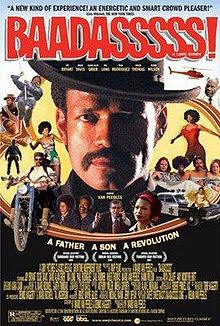
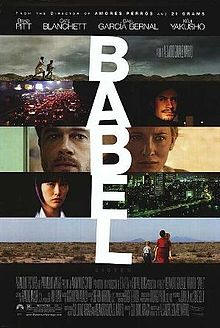

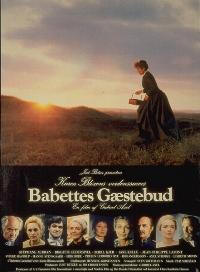

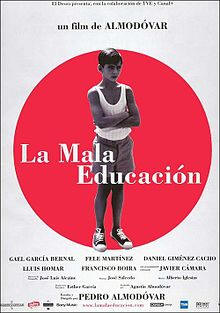
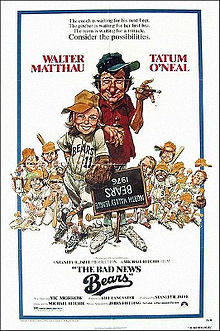
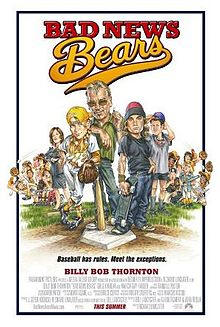



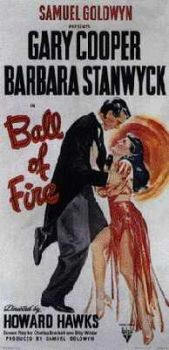
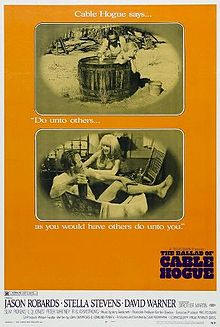

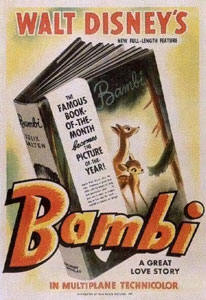
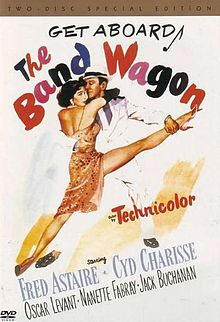
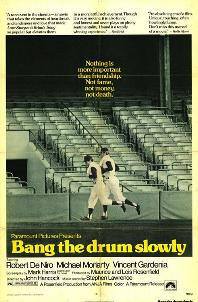
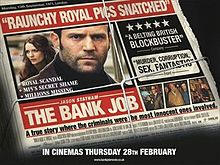




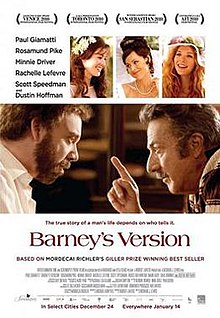

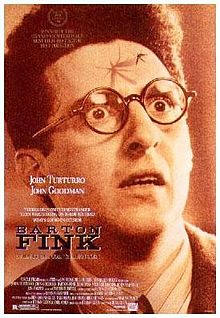
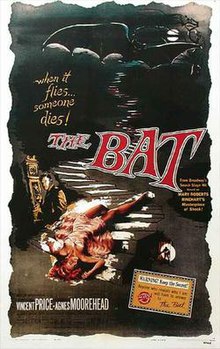


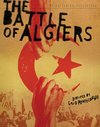

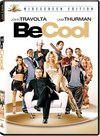
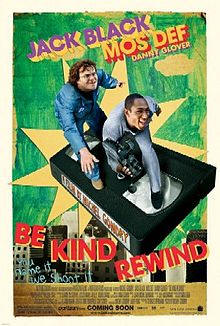

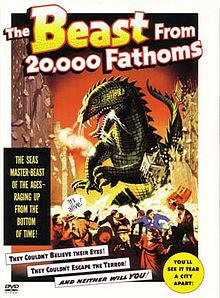



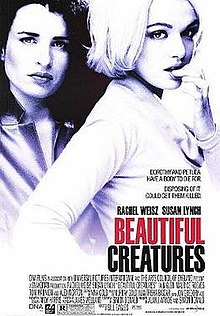
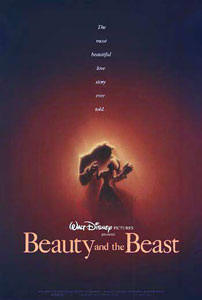
.jpg/220px-The_Bed-Sitting_Room_(film).jpg)

